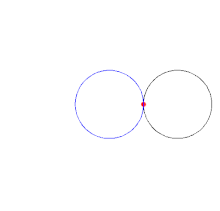The thesis of this monograph is that the mušḫuššu, aurochs, lions, symbolising Marduk, Adad, and Ishtar are Indus Script hypertexts which signify wealth accounting ledgers of metalwork catalogues involving alloys, minerals, metals, cire perdue metal castings, smelting, forging, carburization, cementation and other metallurgical techniques.
This monograph is organized in the folllowing sections to identify and read the hieroglyphs which compose an Indus Script hypertext in the corpora of inscriptions.
Section 1. Archaeobotany
Section 2. Archaeozoology
Section 3. Orthography of the Field Symbol of One-horned young bull
The Indus Script Corpora now include over 8000 inscriptions, the majority of which include the Field Symbol of 1. one-horned young bull; PLUS 2. standard device wich vivid hieroglyph components:
![]() m1656
m1656
m1656 Mohenjodro Pectoral. Carnelian. kanda kanka 'rim of pot' (Santali) rebus: kanda 'fire-altar'khaNDa 'implements' PLUS karNaka 'rim of jar' rebus: karNi 'Supercargo, scribe' PLUS semantic determinant: kANDa 'water' rebus: khaNDa 'implements'. In the context of semantics of karNi 'supercargo', it is possible to decipher the standard device sangaDa 'lathe' rebus: jangada 'double-canoe' as a seafaring merchant vessel. The suffix -karnika signifies a 'maker'. Kāraṇika [der. fr. prec.] the meaning ought to be "one who is under a certain obligation" or "one who dispenses certain obligations." In usu˚ S ii.257 however used simply in the sense of making: arrow -- maker, fletcher (Pali). kāraṇika m. ʻ teacher ʼ MBh., ʻ judge ʼ Pañcat. [kā- raṇa -- ]Pa. usu -- kāraṇika -- m. ʻ arrow -- maker ʼ; Pk. kāraṇiya -- m. ʻ teacher of Nyāya ʼ; S. kāriṇī m. ʻ guardian, heir ʼ; N. kārani ʻ abettor in crime ʼ; M. kārṇī m. ʻ prime minister, supercargo of a ship ʼ, kul -- karṇī m. ʻ village accountant ʼ(CDIAL 3058) Kāraṇika is an arrows-maker, a fletcher. "Fletching (also known as a flight or feather) is the aerodynamic stabilization of arrows or darts with materials such as feathers, each piece of which is referred to as a fletch. A fletcher is a person who attaches the fletching.The word is related to the French word flèche, meaning "arrow", via Old French; the ultimate root is Frankish fliukka."
https://en.wikipedia.org/wiki/Fletching
Perhaps the reading should be ˚kāraka. (Pali) Similarly, khaṇḍa kāraṇika can be semantically explained as 'implements maker'. The pectoral thus signifies the profession of an implements-maker and a supercargo, merchant's representative on the merchant vessel taking charge of the cargo and the trade of the cargo.
"The aurochs ( or ; pl. aurochs, or rarely aurochsen, aurochses), also known as urus or ure (Bos primigenius), is an extinct species of large wild cattle that inhabited Europe, Asia, and North Africa...During the Neolithic Revolution, which occurred during the early Holocene, at least two aurochs domestication events occurred: one related to the Indian subspecies, leading to zebu cattle, and the other one related to the Eurasian subspecies, leading to taurine cattle. Other species of wild bovines were also domesticated, namely the wild water buffalo, gaur, wild yak and banteng. In modern cattle, numerous breeds share characteristics of the aurochs, such as a dark colour in the bulls with a light eel stripe along the back (the cows being lighter), or a typical aurochs-like horn shape.("Aurochs – Bos primigenius". petermaas.nl.)"
https://en.wikipedia.org/wiki/Aurochs
I suggest that the aurochs on the walls of Ishtar Gate, Babylon (6th cent.BCE) are Indian aurochs, one-horned young bulls which are the most frequently deployed hypertexts on Indus Script Corpora. These aurochs signify arka kundaṇa 'goldsmith guild' PLUS koḍ 'horn' rebus koḍ 'workshop'.The lions signify arye 'lion' rebus: arā'brass'. The tradition of signifying wealth accounting ledgers using hieroglyphs/hypertexts is traceable to the Sumerian cylinder seal which displays a mudhif.
कोंडी (p. 102) kōṇḍī f (कोंडणें) A confined place gen.; a lockup house, a pen, fold, pound; a receiving apartment or court for Bráhmans gathering for दक्षिणा; a prison at the play of आट्यापाट्या; a dammed up part of a stream &c. &c. कोंडवाड (p. 102) kōṇḍavāḍa n f C (कोंडणें & वाडा) A pen or fold for cattle. कोंडण (p. 102) kōṇḍaṇa f A fold or pen. कोंडमार (p. 102) kōṇḍamāra or -मारा m (कोंडणें & मारणें) Shutting up in a confined place and beating. Gen. used in the laxer senses of Suffocating or stifling in a close room; pressing hard and distressing (of an opponent) in disputation; straitening and oppressing (of a person) under many troubles or difficulties; कोंडाळें (p. 102) kōṇḍāḷēṃ n (कुंडली S) A ring or circularly inclosed space. 2 fig. A circle made by persons sitting round. कोंड (p. 102) kōṇḍa m C A circular hedge or field-fence. 2 A circle described around a person under adjuration. 3 The circle at marbles. 4 A circular hamlet; a division of a मौजा or village, composed generally of the huts of one caste. 5 Grounds under one occupancy or tenancy. 6 f R A deep part of a river. 7 f (Or कोंडी q. v.) A confined place gen.; a lock-up house &c.
कोंडण kōṇḍaṇa, 'cattlepen', Mesopotamia Rebus: kundaṇa 'fine gold'
Mudhif and three reed banners ![]()
Figure 15.1. Sealing with representations of reed structures with cows, calves, lambs, and ringed
bundle “standards” of Inana (drawing by Diane Gurney. After Hamilton 1967, fig. 1)
Three rings on reed posts are three dotted circles: dāya 'dotted circle' on dhā̆vaḍ priest of 'iron-smelters', signifies tadbhava from Rigveda dhāī ''a strand (Sindhi) (hence, dotted circle shoring cross section of a thread through a perorated bead);rebus: dhāū, dhāv ʻa partic. soft red ores'. dhāˊtu n. ʻ substance ʼ RV., m. ʻ element ʼ MBh., ʻ metal, mineral, ore (esp. of a red colour) ʼ Mn., ʻ ashes of the dead ʼ lex., ʻ *strand of rope ʼ (cf. tridhāˊtu -- ʻ threefold ʼ RV., ayugdhātu -- ʻ having an uneven number of strands ʼ KātyŚr.). [√dhā]Pa. dhātu -- m. ʻ element, ashes of the dead, relic ʼ; KharI. dhatu ʻ relic ʼ; Pk. dhāu -- m. ʻ metal, red chalk ʼ; N. dhāu ʻ ore (esp. of copper) ʼ; Or. ḍhāu ʻ red chalk, red ochre ʼ (whence ḍhāuā ʻ reddish ʼ; M. dhāū, dhāv m.f. ʻ a partic. soft red stone ʼ (whence dhā̆vaḍ m. ʻ a caste of iron -- smelters ʼ, dhāvḍī ʻ composed of or relating to iron ʼ); -- Si. dā ʻ relic ʼ; -- S. dhāī f. ʻ wisp of fibres added from time to time to a rope that is being twisted ʼ, L. dhāī˜ f.(CDIAL 6773)
![]() Cylinder seal impression, Uruk period, Uruk?, 3500-2900 BCE. Note a load of livestock (upper), overlapping greatly (weird representation), and standard 'mudhif' reed house form common to S. Iraq (lower).
Cylinder seal impression, Uruk period, Uruk?, 3500-2900 BCE. Note a load of livestock (upper), overlapping greatly (weird representation), and standard 'mudhif' reed house form common to S. Iraq (lower).
Cattle Byres c.3200-3000 B.C. Late Uruk-Jemdet Nasr period. Magnesite. Cylinder seal. In the lower field of this seal appear three reed cattle byres. Each byre is surmounted by three reed pillars topped by rings, a motif that has been suggested as symbolizing a male god, perhaps Dumuzi. Within the huts calves or vessels appear alternately; from the sides come calves that drink out of a vessel between them. Above each pair of animals another small calf appears. A herd of enormous cattle moves in the upper field. Cattle and cattle byres in Southern Mesopotamia, c. 3500 BCE. Drawing of an impression from a Uruk period cylinder seal. (After Moorey, PRS, 1999, Ancient mesopotamian materials and industries: the archaeological evidence, Eisenbrauns.)
![Image result for bharatkalyan97 mudhif]() A cow and a stable of reeds with sculpted columns in the background. Fragment of another vase of alabaster (era of Djemet-Nasr) from Uruk, Mesopotamia.
A cow and a stable of reeds with sculpted columns in the background. Fragment of another vase of alabaster (era of Djemet-Nasr) from Uruk, Mesopotamia.
![08-02-14/62 Fragment of a stele,...]()
- Fragment of a stele, raised standards. From Tello.
- Hieroglyphs: Quadrupeds exiting the mund (or mudhif) are pasaramu, pasalamu ‘an animal, a beast, a brute, quadruped’ (Telugu) పసరము [ pasaramu ] or పసలము pasaramu. [Tel.] n. A beast, an animal. గోమహిషహాతి.
- A cow and a stable of reeds with sculpted columns in the background. Fragment of another vase of alabaster (era of Djemet-Nasr) from Uruk, Mesopotamia. Limestone 16 X 22.5 cm. AO 8842, Louvre, Departement des Antiquites Orientales, Paris, France. Six circles decorated on the reed post are semantic determinants of Glyphआर [ āra ] A term in the play of इटीदांडू,--the number six. (Marathi) आर [ āra ] A tuft or ring of hair on the body. (Marathi) Rebus: āra ‘brass’. काँड् । काण्डः m. the stalk or stem of a reed, grass, or the like, straw. In the compound with dan 5 (p. 221a, l. 13) the word is spelt kāḍ. The rebus reading of the pair of reeds in Sumer standard is: khānḍa ‘tools, pots and pans and metal-ware’.
Rebus: pasra = a smithy, place where a black-smith works, to work as a blacksmith; kamar pasra = a smithy; pasrao lagao akata se ban:? Has the blacksmith begun to work? pasraedae = the blacksmith is at his work (Santali.lex.) pasra meṛed, pasāra meṛed = syn. of koṭe meṛed = forged iron, in contrast to dul meṛed, cast iron (Mundari.lex.) పసారము [ pasāramu ] or పసారు pasārdmu. [Tel.] n. A shop. అంగడి.
Both hieroglyphs together may have read rebus: *kāṇḍāra: *kāṇḍakara ʻ worker with reeds or arrows ʼ. [kāˊṇḍa -- , kará -- 1] L. kanērā m. ʻ mat -- maker ʼ; H. kãḍerā m. ʻ a caste of bow -- and arrow -- makers ʼ.(CDIAL 3024). Rebus: kaṇḍa 'fire-altar'. khaṇḍa 'implements' (Santali) लोखंड (p. 423) lōkhaṇḍa n (लोह S) Iron. लोखंडकाम (p. 423) lōkhaṇḍakāma n Iron work; that portion (of a building, machine &c.) which consists of iron. 2 The business of an ironsmith. लोखंडी (p. 423) lōkhaṇḍī a (लोखंड) Composed of iron; relating to iron.
![]()
Figure 15.2. Tell al Ubaid, Temple of Ninhursag. Isometric reconstruction. Early Dynastic period
(ca. 2600 b.c.e.) (Hall and Woolley 1927)
ancient relief of reed huts in Mesopotamia; columns of bound reeds like quansut huts https://www.youtube.com/watch?t=3&v=3TIcVJGfjLU
https://www.pinterest.com/pin/241294492513412051/
Cattle gather around a byre, distinguished by its poles with rings. From a cylinder seal of the Late Uruk period. Black and Green, Gods Demons and Symbols of Ancient Mesopotamia. Figure 127 (p. 155)
![]()
The Uruk trough. From Uruk (Warka), southern Iraq. Late Prehistoric period, about 3300-3000 BC
A cult object in the Temple of Inanna?
This trough was found at Uruk, the largest city so far known in southern Mesopotamia in the late prehistoric period (3300-3000 BC). The carving on the side shows a procession of sheep approaching a reed hut (of a type still found in southern Iraq) and two lambs emerging. The decoration is only visible if the trough is raised above the level at which it could be conveniently used, suggesting that it was probably a cult object, rather than of practical use. It may have been a cult object in the Temple of Inana (Ishtar), the Sumerian goddess of love and fertility; a bundle of reeds (Inanna's symbol) can be seen projecting from the hut and at the edges of the scene. Later documents make it clear that Inanna was the supreme goddess of Uruk. Many finely-modelled representations of animals and humans made of clay and stone have been found in what were once enormous buildings in the centre of Uruk, which were probably temples. Cylinder seals of the period also depict sheep, cattle, processions of people and possibly rituals. Part of the right-hand scene is cast from the original fragment now in the Vorderasiatisches Museum, Berlin
J. Black and A. Green, Gods, demons and symbols of -1 (London, The British Museum Press, 1992)
H.W.F. Saggs, Babylonians (London, The British Museum Press, 1995)
D. Collon, Ancient Near Eastern art (London, The British Museum Press, 1995)
H. Frankfort, The art and architecture of th (London, Pelican, 1970)
Life on the edge of the marshes (Edward Ochsenschlaer, 1998)![]() Another black & white view of the trough.
Another black & white view of the trough.
Sumerian mudhif facade, with uncut reed fonds and sheep entering, carved into a gypsum trough from Uruk, c. 3200 BCE (British Museum WA 12000). Photo source. Fig. 5B. Carved gypsum trough from Uruk. Two lambs exit a reed structure identifical to the present-day mudhif on this ceremonial trough from the site of Uruk in northern Iraq. Neither the leaves or plumes have been removed from the reds which are tied together to form the arch. As a result, the crossed-over, feathered reeds create a decorative pattern along the length of the roof, a style more often seen in modern animal shelters built by the Mi'dan. Dating to ca. 3000 BCE, the trough documents the extraordinry length of time, such arched reed buildings have been in use. (The British Museum BCA 120000, acg. 2F2077)
End of the Uruk trough. Length: 96.520 cm Width: 35.560 cm Height: 15.240 cm
![Image result for bharatkalyan97 mudhif]() 284 x 190 mm. Close up view of a Toda hut, with figures seated on the stone wall in front of the building. Photograph taken circa 1875-1880, numbered 37 elsewhere. Royal Commonwealth Society Library. Cambridge University Library. University of Cambridge.
284 x 190 mm. Close up view of a Toda hut, with figures seated on the stone wall in front of the building. Photograph taken circa 1875-1880, numbered 37 elsewhere. Royal Commonwealth Society Library. Cambridge University Library. University of Cambridge.
![]() The Toda mund, from, Richard Barron, 1837, "View in India, chiefly among the Nilgiri Hills'. Oil on canvas. The architecture of Iraqi mudhif and Toda mund -- of Indian linguistic area -- is comparable.
The Toda mund, from, Richard Barron, 1837, "View in India, chiefly among the Nilgiri Hills'. Oil on canvas. The architecture of Iraqi mudhif and Toda mund -- of Indian linguistic area -- is comparable.
The hut of a Toda Tribe of Nilgiris, India. Note the decoration of the front wall, and the very small door.
![]()
![]() Rebus Meluhha readings: kōṭhā 'warehouse' kuṭhāru 'armourer, PLUS kole.l'temple' rebus: kole.l 'smithy, forge' PLUS ḍhāla 'flagstaff' rebus: ḍhālako 'large ingot'. Thus, the message is: armoury, smithy, forge ingots.
Rebus Meluhha readings: kōṭhā 'warehouse' kuṭhāru 'armourer, PLUS kole.l'temple' rebus: kole.l 'smithy, forge' PLUS ḍhāla 'flagstaff' rebus: ḍhālako 'large ingot'. Thus, the message is: armoury, smithy, forge ingots.
m0702 Text 2206 showing Sign 39, a glyph which compares with the Sumerian mudhif structure.
- ढालकाठी [ ḍhālakāṭhī ] f ढालखांब m A flagstaff; esp.the pole for a grand flag or standard.
ढाल [ ḍhāla ] 'flagstaff' rebus: dhalako 'a large metal ingot (Gujarati) ḍhālakī = a metal heated and poured into a mould; a solid piece of metal; an ingot (Gujarati). The mudhif flag on the inscription is read rebus: xolā 'tail' Rebus: kole.l 'smithy, temple'. The structure is goṭ 'catttle-pen' (Santali) rebus: koṭṭhaka 'warehouse'. [kōṣṭhāgāra n. ʻ storeroom, store ʼ Mn. [kṓṣṭha -- 2, agāra -- ]Pa. koṭṭhāgāra -- n. ʻ storehouse, granary ʼ; Pk. koṭṭhāgāra -- , koṭṭhāra -- n. ʻ storehouse ʼ; K. kuṭhār m. ʻ wooden granary ʼ, WPah. bhal. kóṭhār m.; A. B. kuṭharī ʻ apartment ʼ, Or. koṭhari; Aw. lakh. koṭhārʻ zemindar's residence ʼ; H. kuṭhiyār ʻ granary ʼ; G. koṭhār m. ʻ granary, storehouse ʼ, koṭhāriyũ n. ʻ small do. ʼ; M. koṭhār n., koṭhārẽ n. ʻ large granary ʼ, -- °rī f. ʻ small one ʼ; Si. koṭāra ʻ granary, store ʼ.WPah.kṭg. kəṭhāˊr, kc. kuṭhār m. ʻ granary, storeroom ʼ, J. kuṭhār, kṭhār m.; -- Md. kořāru ʻ storehouse ʼ ← Ind.(CDIAL 3550)] Rebus: kuṭhāru 'armourer,
![]() Field symbol is zebu (bos indicus). pōḷa 'zebu, bos indicus' rebus: pōḷa 'magnetite, ferrite ore' [pōlāda] 'steel'.
Field symbol is zebu (bos indicus). pōḷa 'zebu, bos indicus' rebus: pōḷa 'magnetite, ferrite ore' [pōlāda] 'steel'.Text 1330 (appears with Zebu glyph) showing Sign 39. Pictorial motif: Zebu (Bos indicus) This sign is comparable to the cattle byre of Southern Mesopotamia dated to c. 3000 BCE. Rebus Meluhha readings of gthe inscription are from r. to l.: kole.l 'temple' rebus: kole.l 'smithy, forge' PLUS goṭ 'cattle-pen' rebus: koṭṭhāra 'warehouse' PLUS sal 'splinter' rebus: sal 'workshop' PLUS aya 'fish' rebus: aya 'iron' ayas 'alloy metal' PLUS kuṭika— 'bent' MBh. Rebus: kuṭila, katthīl = bronze (8 parts copper and 2 parts tin) PLUS kanka, karṇika कर्णिक 'rim of jar' rebus: karṇī 'supercargo, a representative of the ship's owner on board a merchant ship, responsible for overseeing the cargo and its sale'. Read together with the fieldsymbol of the zebu,the message is: magnetite ore smithy, forge, warehouse, iron alloy metal, bronze merchandise (ready for loading as cargo).
goṭ = the place where cattle are collected at mid-day (Santali); goṭh (Brj.)(CDIAL 4336). goṣṭha (Skt.); cattle-shed (Or.) koḍ = a cow-pen; a cattlepen; a byre (G.) कोठी cattle-shed (Marathi) कोंडी [ kōṇḍī ] A pen or fold for cattle. गोठी [ gōṭhī ] f C (Dim. of गोठा) A pen or fold for calves. (Marathi)
koṭṭhaka1 (nt.) "a kind of koṭṭha," the stronghold over a gateway, used as a store -- room for various things, a chamber, treasury, granary Vin ii.153, 210; for the purpose of keeping water in it Vin ii.121=142; 220; treasury J i.230; ii.168; -- store -- room J ii.246; koṭthake pāturahosi appeared at the gateway, i. e. arrived at the mansion Vin i.291.; -- udaka -- k a bath -- room, bath cabinet Vin i.205 (cp. Bdhgh's expln at Vin. Texts ii.57); so also nahāna -- k˚ and piṭṭhi -- k˚, bath -- room behind a hermitage J iii.71; DhA ii.19; a gateway, Vin ii.77; usually in cpd. dvāra -- k˚ "door cavity," i. e. room over the gate: gharaŋ satta -- dvāra -- koṭṭhakapaṭimaṇḍitaŋ "a mansion adorned with seven gateways" J i.227=230, 290; VvA 322. dvāra -- koṭṭhakesu āsanāni paṭṭhapenti "they spread mats in the gateways" VvA 6; esp. with bahi: bahi -- dvārakoṭṭhakā nikkhāmetvā "leading him out in front of the gateway" A iv.206; ˚e thiṭa or nisinna standing or sitting in front of the gateway S i.77; M i.161, 382; A iii.30. -- bala -- k. a line of infantry J i.179. -- koṭṭhaka -- kamma or the occupation connected with a storehouse (or bathroom?) is mentioned as an example of a low occupation at Vin iv.6; Kern, Toev. s. v. "someone who sweeps away dirt." (Pali)
कोंडण kōṇḍaṇa, 'cattlepen', Mesopotamia Rebus: kundaṇa 'fine gold'
One-horned young bulls and calves are shown emerging out of कोंडण kōṇḍaṇa cattlepens heralded by Inana standards atop the mudhifs. The Inana standards are reeds with three rings. The reed standard is the same which is signified on Warka vase c. 3200–3000 BCE.
Warka vase also shows Indus Script hypertexts.
![]()
![]() Reed PLUS ring on Inanna standard on Warka vase.
Reed PLUS ring on Inanna standard on Warka vase.Scarf on the reeds: dhaṭu 'scarf' Rebus: dhatu 'mineral' (Santali) *dhaṭa2, dhaṭī -- f. ʻ old cloth, loincloth ʼ lex. [Drav., Kan. daṭṭi ʻ waistband ʼ etc., DED 2465]Ku. dhaṛo ʻ piece of cloth ʼ, N. dharo, B. dhaṛā; Or. dhaṛā ʻ rag, loincloth ʼ, dhaṛi ʻ rag ʼ; Mth. dhariā ʻ child's narrow loincloth ʼ.Addenda: *dhaṭa-- 2. 2. †*dhaṭṭa -- : WPah.kṭg. dhàṭṭu m. ʻ woman's headgear, kerchief ʼ, kc. dhaṭu m. (also dhaṭhu m. ʻ scarf ʼ, J. dhāṭ(h)u m. Him.I 105).(CDIAL 6707)
![]()
Hypertexts of goat and tiger atop fire-altars (with ore pellets) mlekh 'goat' rebus: milakkhu, mleccha'copper' kola 'tiger' rebus: kol 'working in iron' kolhe 'smelter'. Products (offerings) carried by worshippers in baskets and large storage jars and dedicated to Divinity Inanna clearly include metal ingots, as signified by the Indus Script hypertexts: copper ingots, iron (smelted) ingots.
One etyma cluster refers to 'iron' exemplified by meD (Ho.). The alternative suggestion for the origin of the gloss med 'copper' in Uralic languages may be explained by the word meḍ (Ho.) of Munda family of Meluhha language stream. It is significant that the word med in Slavic languages signifies copper.
— Slavic glosses for 'copper'
Мед [Med]Bulgarian
Bakar Bosnian
Медзь [medz']Belarusian
Měď Czech
Bakar Croatian
KòperKashubian
Бакар [Bakar]Macedonian
Miedź Polish
Медь [Med']Russian
Meď Slovak
BakerSlovenian
Бакар [Bakar]Serbian
Мідь [mid'] Ukrainian[unquote]
http://www.vanderkrogt.net/elements/element.php?sym=Cu
Miedź, med' (Northern Slavic, Altaic) 'copper'.
One suggestion is that corruptions from the German "Schmied", "Geschmeide" = jewelry. Schmied, a smith (of tin, gold, silver, or other metal)(German) result in med ‘copper’.
Standard of Ur displays one-horned young bull, the Indian aurochs on a harp.
Figure 15.6. Tell al Ubaid, Temple of Ninhursag. Tridacna shell inlaid architectural frieze with bitumen and black shale. Early Dynastic period (ca. 2600 b.c.) (Hall and Woolley 1927)
Figure 15.5. Tell al Ubaid, Temple of Ninhursag. Tridacna shell-inlaid architectural frieze with bitumen and black shale. Early Dynastic period (ca. 2600 b.c.e.) (© The Trustees of the British Museum)
A lyrist on the Standard of Ur, believed to date to between 2600–2400 BCE. "There are several hypotheses as to the origin of the instrument. One suggests that it descended from the kopuz, a string instrument still in use among the Turkic peoples of Central Asia and the Caspian region.[1] The name itself derives from the tanbur (tunbur). Tanbur in turn might have descended from the Sumerian pantur." https://en.wikipedia.org/wiki/Turkish_tambur Hieroglyph: kã̄ḍ reed Rebus: kāṇḍa 'tools, pots and pans, metal-ware'.
Hieroglyph: tanbūra 'lyre' Rebus: tam(b)ra 'copper'.
![Mesopotamia. Estandarte de Ur. Lapislázuli, piedra caliza y conchas]()
![]() An orthographic composition to createa hypertext with hieroglyphs of animal parts or device components is called सांगड sāṅgaḍa m f (संघट्ट S) f A body formed of two or more (fruits, animals, men) linked or joined together. The word also signifies 'that member of a turner's apparatus by which the piece to be turned is confined and steadied. सांगडीस धरणें To take into linkedness or close connection with, lit. fig.'(Marathi) A number of rebus readings related to metalwork, trade transactions, fortified locations of workshops are: sanghar 'fortification' (Pashto) A number of homonyms signify specific trade terms: jangadiyo 'military guard carrying treasure into the treasury' (Gujarati) sanghāḍiyo, a worker on a lathe (Gujarati).The mercantile agents who were jangadiyo received goods on jangad 'entrusted for approval'. An ancient Near East accounting system was jangaḍ. The system of jangaḍ simply meant 'goods on approval' with the agent -- like the Meluhhan merchant-agents or brokers living in settlements in ancient near East -- merely responsible for showing the goods to the intended buyers. సంగడము (p. 1272) saṅgaḍamu sangaḍamu. [from Skt. సంగతమ్.] n. Dumb-bells, సాముచేయువారు తిప్పేలోడు. Help, assistance, aid, సహాయము. Friendship, త, స్నేహము. Meeting, చేరిక. Nearness, సమీపము. A retinue, పరిచారము. Service, సేవ. An army, సేన. "అనవుడు వాడునగుచు నీవిక్రమంబునకు నా వెరపు సంగడంబుగాదె." M. VII. iv. 59. "ఉ అంచెలుగట్టి కాలి తొడుసైచనననీవుగదమ్మప్రోదిరా, యంచలివేటి సంగడములయ్యెను." Swa. v. 72. Trouble, annoyance, ంాటము, సంకటము. సంగడమువాడు sangaḍamu-vāḍu. n. A friend or companion. చెలికాడు, నేస్తకాడు. సంగడి sangaḍi. n. A couple, pair, ంట త, ోడు. Friendship, స్నేహము. A friend, a fellow, a playmate, నేస్తకాడు. A raft or boat made of two canoes fastened side by side. http://bharatkalyan97.blogspot.in/2013/06/ancient-near-east-jangad-accounting-for.html sãgaḍ f. ʻ a body formed of two or more fruits or animals or men &c. linked together, part of a turner's apparatus ʼ, m.f. ʻ float made of two canoes joined together ʼsaṁghāṭa m. ʻ fitting and joining of timber ʼ R. sãgaḍ māṇi 'alloying adamantine glue, सं-घात caravan standard' -- vajra saṁghāṭa in archaeometallurgy. sangar̥h 'proclamation, trade.' sãgaṛh 'fortification'
An orthographic composition to createa hypertext with hieroglyphs of animal parts or device components is called सांगड sāṅgaḍa m f (संघट्ट S) f A body formed of two or more (fruits, animals, men) linked or joined together. The word also signifies 'that member of a turner's apparatus by which the piece to be turned is confined and steadied. सांगडीस धरणें To take into linkedness or close connection with, lit. fig.'(Marathi) A number of rebus readings related to metalwork, trade transactions, fortified locations of workshops are: sanghar 'fortification' (Pashto) A number of homonyms signify specific trade terms: jangadiyo 'military guard carrying treasure into the treasury' (Gujarati) sanghāḍiyo, a worker on a lathe (Gujarati).The mercantile agents who were jangadiyo received goods on jangad 'entrusted for approval'. An ancient Near East accounting system was jangaḍ. The system of jangaḍ simply meant 'goods on approval' with the agent -- like the Meluhhan merchant-agents or brokers living in settlements in ancient near East -- merely responsible for showing the goods to the intended buyers. సంగడము (p. 1272) saṅgaḍamu sangaḍamu. [from Skt. సంగతమ్.] n. Dumb-bells, సాముచేయువారు తిప్పేలోడు. Help, assistance, aid, సహాయము. Friendship, త, స్నేహము. Meeting, చేరిక. Nearness, సమీపము. A retinue, పరిచారము. Service, సేవ. An army, సేన. "అనవుడు వాడునగుచు నీవిక్రమంబునకు నా వెరపు సంగడంబుగాదె." M. VII. iv. 59. "ఉ అంచెలుగట్టి కాలి తొడుసైచనననీవుగదమ్మప్రోదిరా, యంచలివేటి సంగడములయ్యెను." Swa. v. 72. Trouble, annoyance, ంాటము, సంకటము. సంగడమువాడు sangaḍamu-vāḍu. n. A friend or companion. చెలికాడు, నేస్తకాడు. సంగడి sangaḍi. n. A couple, pair, ంట త, ోడు. Friendship, స్నేహము. A friend, a fellow, a playmate, నేస్తకాడు. A raft or boat made of two canoes fastened side by side. http://bharatkalyan97.blogspot.in/2013/06/ancient-near-east-jangad-accounting-for.html sãgaḍ f. ʻ a body formed of two or more fruits or animals or men &c. linked together, part of a turner's apparatus ʼ, m.f. ʻ float made of two canoes joined together ʼsaṁghāṭa m. ʻ fitting and joining of timber ʼ R. sãgaḍ māṇi 'alloying adamantine glue, सं-घात caravan standard' -- vajra saṁghāṭa in archaeometallurgy. sangar̥h 'proclamation, trade.' sãgaṛh 'fortification'
The standard device is a composite of two hieroglyphs, 1. portable furnace; and 2. lathe
Hieroglyph 1: కమటము kamaṭamu. [Tel.] n. A portable furnace for melting the precious metals. అగసాలెవాని కుంపటి. "చ కమటము కట్లెసంచియొరగల్లును గత్తెర సుత్తె చీర్ణముల్ ధమనియుస్రావణంబు మొలత్రాసును బట్టెడ నీరుకారు సా నము పటుకారు మూస బలునాణె పరీక్షల మచ్చులాదిగా నమరగభద్రకారక సమాహ్వయు డొక్కరుడుండు నప్పురిన్"హంస. ii. Rebus:Ta. kampaṭṭam coinage, coin. Ma. kammaṭṭam, kammiṭṭam coinage, mint. Ka. kammaṭa id.; kammaṭi a coiner. (DEDR 1236) కమ్మటము kammaṭamu Same as కమటము. కమ్మటీడు kammaṭīḍu. [Tel.] A man of the goldsmith caste. R
Hieroglyph 2: sãghāṛɔ 'lathe' (Gujarati).Rebus: sanghar'fortification' (Pashto) See:
Vajra Sanghāta 'binding together' (Varahamihira) *saṁgaḍha ʻ collection of forts ʼ. [*gaḍha -- ]L. sãgaṛh m. ʻ line of entrenchments, stone walls for defence ʼ.(CDIAL 12845). సంగడము (p. 1279) [ saṅgaḍamu ] A raft or boat made of two canoes fastened side by side. రెండుతాటి. బొండులు జతగాకట్టినతెప్ప சங்கடம்² caṅkaṭam, n. < Port. jangada. Ferry-boat of two canoes with a platform thereon; இரட்டைத்தோணி. (J.) G. sãghāṛɔ m. ʻ lathe ʼ; M. sãgaḍ f. ʻ a body formed of two or more fruits or animals or men &c. linked together, part of a turner's apparatus ʼ, m.f. ʻ float made of two canoes joined together ʼsaṁghāṭa m. ʻ fitting and joining of timber ʼ R. [√ghaṭ] LM 417 compares saggarai at Limurike in the Periplus, Tam. śaṅgaḍam, Tu. jaṅgala ʻ double -- canoe ʼ),sã̄gāḍā m. ʻ frame of a building ʼ, °ḍī f. ʻ lathe ʼ; Si. san̆gaḷa ʻ pair ʼ, han̆guḷa, an̆g° ʻ double canoe, raft ʼ.(CDIAL 12859) Cangavāra [cp. Tamil canguvaḍa a dhoney, Anglo-- Ind. ḍoni, a canoe hollowed from a log, see also doṇi] a hollow vessel, a bowl, cask M i.142; J v.186 (Pali)
Hieroglyph: खोंड (p. 216) [khōṇḍa] m A young bull, a bullcalf; खोंडा [ khōṇḍā ] m A कांबळा of which one end is formed into a cowl or hood. खोंडरूं [ khōṇḍarūṃ ] n A contemptuous form of खोंडा in the sense of कांबळा-cowl (Marathi. Molesworth); kōḍe dūḍa bull calf (Telugu); kōṛe 'young bullock' (Konda)Rebus: kõdā ‘to turn in a lathe’ (Bengali)
kāṇḍam காண்டம்² kāṇṭam, n. < kāṇḍa. 1. Water; sacred water; நீர். துருத்திவா யதுக்கிய குங்குமக் காண் டமும் (கல்லா. 49, 16). Rebus: khāṇḍā ‘metal tools, pots and pans’ (Marathi) (B) {V} ``(pot, etc.) to ^overflow''. See `to be left over'. @B24310. #20851. Re(B) {V} ``(pot, etc.) to ^overflow''. See`to be left over'. (Munda ) Rebus: loh ‘copper’ (Hindi) The hieroglyph clearly refers to the metal tools, pots and pans of copper.
Section 1. Archaeobotany
Archaeobotany is a sub-specialization within environmental archaeology that studies human interactions with plants in the past. The hieroglyph on the body of the one-horned young bull is identified as calotropis gigantea leaf (arka) read rebus as arka'copper,gold' The 'arka' design on the body (to signify arka 'sun's rays' a homonym of arka'gold, copper'. అగసాలిagasāli or అగసాలెవాడు agasāli. [Tel.] n. A goldsmith. కంసాలివాడు. Orthography of the leaf is a continuous line with rows to signify short linear, angular strokes like sun's rays (arka) which evokes the word sāl, 'joining line'. Thus, arka + sāl is used as an expression: akasāle, 'goldsmith shop'.
![]()
![]()
The hieroglyph on the body of the young bull is:
अर्क the plant Calotropis Gigantea (the larger leaves are used for yajña performances ;
cf. अर्क-कोशी , -पर्ण्/अ , पलश्/अ ,&c below)
S3Br. &c , a religious ceremony
S3Br. Br2A1rUp. (
cf. अर्का*श्वमेध below) अर्क--पर्ण
n. the leaf of the अर्क plant
S3Br. Ka1tyS3r.; -पलाश
n. (for 1. » under पल) a leaf , petal , foliage (
ifc. f(ई)
. )
S3Br. Gr2S3rS. MBh. &c; अर्क--कोशी
f. a bud of the अर्क plant
S3Br. x. Rebus:
अर्क fire
RV. ix , 50 , 4
S3Br. Br2A1rUp.; the sun
RV. &c;
m. ( √ अर्च्) , Ved. a ray , flash of lightning
RV. &c; अर्का* श्व-मेध
m. du.([
Pa1n2. 2-4 , 4
Ka1s3. ]) or °ध्/औ ([
AV. xi , 7 , 7 , and
S3Br. ]), the अर्क ceremony and the अश्वमेध
yajña. (Note: This is a clear indicator that अश्वमेध is only a Chandas (Veda) metaphor and DOES NOT involve a horse sacrifice).
वराह-मिहिर 's बृहज्जातक explains अश्व as a hieroglyph of the archer (in the Zodiac)(Monier-Williams); अश्व as a symbolic expression to signify the number seven: aśvḥ अश्वः [अश्नुते अध्वानं व्याप्नोति, महाशनो वा भवति Nir.; अश्-क्वन् Uṇ.1.149] 1 A horse; the horses are said to have 7 breeds:- अमृताद् बाष्पतो वह्नेर्वेदेभ्यो$ण़्डाच्च गर्भतः । साम्नो हयानामुत्पत्तिः सप्तधा परिकीर्तिता ॥A symbolical expression for the number 'seven' (that being the number of the horses of the Sun) सूर्याश्वैर्मसजस्तताः सगुरवः शार्दूलविक्रीडितम् V. Ratn. -मेधः [अश्वः प्रधानतया मेध्यते हिंस्यते$त्र, मेध् हिंसने घञ्] a horse-sacrifice; यथाश्वमेधः क्रतुराट् सर्वपापापनोदनः Ms.11.26. [In Vedic times this sacrifice was performed by kings desirous of offspring; but subsequently it was performed only by kings and implied that he who instituted it, was a conqueror and king of kings. A horse was turned loose to wander at will for a year, attended by a guardian; when the horse entered a foreign country, the ruler was bound either to submit or to fight. In this way the horse returned at the end of a year, the guardian obtaining or enforcing the submission of princes whom he brought in his train. After the successful return of the horse, the rite called Aśvamedha was performed amidst great rejoicings. It was believed that the performance of 1 such yajña would lead to the attainment of the seat or world of Indra, who is, therefore, always represented as trying to prevent the completion of the hundredth sacrifice. cf. Rv.1.162-163 hymns; Vāj.22 seq.](Apte)
![]()
Gold Pendant From Harappa , Sarasvati Civilization ( Photo - National Museum Delhi )
I am baffled by the unique hieroglyph.![Inline image Inline image]() Sign 323 of Indus Script inverted on the body of the bull. Maybe, the word 'arka' was a synonym of kundaṇa, fine gold' (Tulu)
Sign 323 of Indus Script inverted on the body of the bull. Maybe, the word 'arka' was a synonym of kundaṇa, fine gold' (Tulu)
A synonym for gold is -- kundaṇa pure gold(Tulu) PLUS sack on the shoulder constitute hieroglyphs (semantic, phonetic determinants). खोंडरूं [ khōṇḍarūṃ ] n A contemptuous form of खोंडा in the sense of कांबळा-cowl.खोंडा [ khōṇḍā ] m A कांबळा of which one end is formed into a cowl or hood. खोंडी [ khōṇḍī ] f An outspread shovelform sack (as formed temporarily out of a कांबळा, to hold or fend off grain, chaff &c.)
Thus, I suggest that the hypertext of one-horned young bull with a design of arka leaf reads: arka kundaṇa 'goldsmith guild' PLUS koḍ 'horn' rebus koḍ 'workshop', since the Marathi word has the meaning: कोंडण kōṇḍaṇa f A fold or pen.Thus, the seal with the one-horned young bull is signifier of a goldsmith guild workshop.
Arka is the gigantic Swallow wort. Aselepias gigantea. Rox. ii. 30. and ii. 7. Calotropis gigantea (Watts.)
This is calatropis procera' arka in Kannda is ekke plant
எருக்கு¹ erukku , n. prob. arka. [M. erik- ku.] Yarcum, madar, m. sh., Calotropis gigantea; செடிவகை. எருக்கின் முகிழ்நோக்கும் (தணிகைப்பு. களவு. 274). ![]()
![]()
arká2 m. ʻ the plant Calotropis gigantea ʼ ŚBr. [Cf. alarka -- 2 m. Suśr., alāka -- m. Car., Pa. alakka -- m.]Pa. Pk. akka -- m.; S. aku m. ʻ Calotropis procera ʼ, L. akk m., awāṇ. ak; P. akk m. ʻ a partic. plant with an acrid milky juice ʼ; Garh. Ku. ã̄k ʻ C. gigantea ʼ, N. āk ʻ C. acia ʼ; H. āk, ākh m. ʻ C. gigantea ʼ; Marw. āk ʻ C. acia ʼ; G. āk m., ākṛɔ m. ʻ a partic. tree or shrub ʼ; Si. aka ʻ the tree Asclepias gigantea ʼ.arkaparṇá -- , arkapādapa -- .Addenda: arká -- 2: S.kcch. akk m. ʻ Calotropis gigantea ʼ, OMarw. āka m. ʻ swallow -- wort ʼ.(CDIAL 625)If the 'heart design' signifies arka leaf, it can be related to The Surya Siddhanta definition of Uttarāyaṇa or Uttarayan as the period between the Makara Sankranti (which currently occurs around January 14) and Karka Sankranti (which currently occurs around July 16). (Burgess, Ebenezer (1858). The Surya Siddhantha - A Textbook of Hindu Astronomy. American Oriental Society. Chapter 14, Verse 7-9.Se)
Section 2. Archaeozoology
Archaeozoology is the study of animals in archaeological contexts. The young bull with one curved horn is identified as bos aurochs, a species of the genus bos. Indian aurochs is sometimes regarded as a distinct species.
Restoration of the aurochs based on a bull skeleton from Lund and a cow skeleton from Cambridge, with chart of characteristic external features of the aurochs
Comparison of bull and cow of the aurochs (left) and modern cattle (right). Image: Courtesy T. Van Vuure
Cro-Magnon graffito of Bos primigenius in Grotta del Romito, Papasidero, Italy
The Indian aurochs (B. p. namadicus) once inhabited India. It was the first subspecies of the aurochs to appear, at 2 million years ago, and from about 9000 years ago, it was domesticated as the zebu.(In the Light of Evolution III: Two Centuries of Darwin. National Academies Press. 2009. p. 96.) Fossil remains indicate wild Indian aurochs besides domesticated zebu cattle were in Gujarat and the Ganges area until about 4–5000 years ago. Remains from wild aurochs 4400 years old are clearly identified from Karnataka
in South India.(Shanyuan Chen, et al, "Zebu Cattle Are an Exclusive Legacy of the South Asia Neolithic", Mol Biol Evol (2010) 27(1): 1-6 ).
Indian zebu, although domesticated eight to ten thousand years ago, are related to aurochs that diverged from the Near Eastern ones some 200,000 years ago. African cattle are thought to have descended from aurochs more closely related to the Near Eastern ones. The Near East and African aurochs groups are thought to have split some 25,000 years ago, probably 15,000 years before domestication. The "Turano-Mongolian" type of cattle now found in northern China, Mongolia, Korea, and Japan may represent a fourth domestication event (and a third event among B. taurus–type aurochs). This group may have diverged from the Near East group some 35,000 years ago. Whether these separate genetic populations would have equated to separate subspecies is unclear. (Hideyuki Mannen; et al. (August 2004). "Independent mitochondrial origin and historical genetic differentiation in North Eastern Asian cattle" (PDF). Molecular Phylogenetics and Evolution, Volume 32, issue 2. pp. 539–544.)
The maximum range of the aurochs was from Europe (excluding Ireland and northern Scandinavia), to northern Africa, the Middle East, India, and Central Asia.("History, Morphology And Ecology Of The Aurochs"(PDF) (McKenzie, Steven (17 February 2010). "Ancient giant cattle genome first". BBC News.) Until at least 3,000 years ago, the aurochs was also found in eastern China, where it is recorded at the Dingjiabao Reservoir in Yangyuan County. Most remains in China are known from the area east of 105°E, but the species has also been reported from the eastern margin of the Tibetan plateau, close to the Heihe River.(Zong, G (1984). A record of Bos primigenius from the Quaternary of the Aba Tibetan Autonomous Region, Volume XXII No. 3. Vertebrata PalAsiatica. pp. 239–245.)In Japan, excavations in various locations such as in Iwate and Tochigi prefectures have found aurochs which may have herded with steppe bisons.(HASEGAWA Y.,OKUMURA Y., TATSUKAWA H. (2009). "First record of Late Pleistocene Bison from the fissure deposits of the Kuzuu Limestone, Yamasuge,Sano-shi,Tochigi Prefecture,Japan" (pdf). Bull.Gunma Mus.Natu.Hist.(13). Gunma Museum of Natural History and Kuzuu Fossil Museum: 47–52.). ![]()
The Vig-aurochs, one of two very well-preserved aurochs skeletons found in Denmark. The circles indicate where the animal was wounded by arrows.
The violent cup of Vaphio showing aurochs hunting, Greece, (15th century BCE)
“Several ancient Babylonian sculptures or cylinder seals and many later Assyrian sculptures show very realistic pictures of a wild bovine, which I formerly identified with Bos primigenius Bojanus (plate 83, fig.1). My recent studies on fossil remains of the bovines of the Indian Pleistocene have shown me that the Indian (Narbada and Siwaliks) and China Taurina are the exact equivalent of te European urus (Bos primigenius Bojanus), excepting some slight variations produced by different geographical and local influences so that the Bos namadicus Falconer Cautley would represent the European urus for the Asiatic continent, especially the North Indian mountains and their neighborhood (compare fig. 490 with plate 81).” (Raphael Pumpelly: Explorations in Turkestan : Expedition of 1904 : vol.2, p. 361 http://dsr.nii.ac.jp/toyobunko/VIII-5-A-a-3/V-2/page-hr/0167.html.en, p. 361).
Holocene aurochs bull skull in Berlin
Aurochs
1627 (wild form) resp. Present (domestic form)
The Prejlerup-aurochs, a bull at the Zoological Museum in Copenhagen from 7400 BCE
Life restoration of an aurochs bull found in Braunschweig, Germany The inscription reads: "The Aurochs – Bos primigenius bojanus, the ancestor of domestic cattle, lived in this forest Jaktorów until the year 1627."
Speculative life restoration of the enigmatic Indian aurochs (B. p. namadicus) ![Image result for bos aurochs]()
![]()
"The Indian aurochs (Bos primigenius namadicus) was a subspecies of the extinct aurochs. It is considered as the ancestor of the zebu cattle, which is mainly found in southern Asia and has been introduced in many other parts of the world, like Africa and South America. In contrast, the taurine cattle breeds, which are native to Europe, the Near East, and other parts of the world, are descendants of the Eurasian aurochs (Bos primigenuis primigenius). According to IUCN, the Indian aurochs disappeared sometime until the 13th century AD, when the only subspecies standing was the Bos primigenius primigenius.(Tikhonov, A. (2008). "Bos primigenius". The IUCN Red List of Threatened Species.)...The Indian aurochs diverged from the Eurasian aurochs (B. p. primigenius) about 100,000 - 200,000 years ago. This has been shown by comparison of DNA from zebus and taurine cattle breeds, the living descendants of these two aurochs forms.(Verkaar, Nijman, Beeke, Hanekamp & Lenstra: Maternal and Paternal Lineages in Cross-breeding bovine species. Has Wisent a Hybrid Origin?.2004.) The Indian aurochs is sometimes regarded as a distinct species.(MacHugh et al., 1997: Microsatellite DNA Variation and the Evolution, Domestication and Phylogeography of Taurine and Zebu Cattle (Bos taurus and Bos indicus). Genetics, Vol. 146, 1071–1086. )Zebu cattle are phenotypically distinguished from taurine cattle by the presence of a prominent shoulder hump.(Loftus et al., 1994: Evidence for two independent domestications of cattle. Proceedings of the National Academy of Sciences 91.7: 2757-2761.)"
"The aurochs originated about 2 million years ago in India and spread westwards.(Cis van Vuure: Retracing the Aurochs - History, Morphology and Ecology of an extinct wild Ox.2005.) The Indian aurochs roamed in the Pleistocene and Holocene epochs throughout the Indian subcontinent from Baluchistan, the Indus valley and the Ganges valley to south India. Most remains are from the north of India, on the Kathiawar Peninsula, along the Ganges, and from the area of the Narmada River. However, bone remains of the Indian aurochs are present in the south as well, such as the Deccan area and along the Krishna area. The wild Indian aurochs survived into neolithic times, when it was domesticated. The youngest known remains, which clearly belong to wild Indian aurochs are from Banahalli in Karnataka, southern India, with an age of about 4200 years old...The first centre for domestication of the Indian aurochs was probably the Baluchistan region in Pakistan. The domestication process seems to have been prompted by the arrival of new crop species from the Near East around 7000 BC. It is possible, that Indian aurochs were domesticated independently in Southern India, in Gujarat and the Ganges floodplains. Domestic zebu are recorded from the Indus region since 6000 BC and from south India, the middle Ganges region, and Gujarat since 2000-3500 BC. Domestic cattle seem to have been absent in southern China and southeast Asia until 2000-1000 BCE.(Chen et al., 2010: Zebu cattle are an exclusive legacy of the South Asia Neolithic. Molecular biology and evolution, 27(1), 1-6.)"
![]()
Known locations of Bos Primigenius according to historical records. Image from Maas, P.H.J. (2011).
Distribution of the three sub-species.
Subspecise
Bos primigenius (Bojanus 1827)
Wild:
domestic:
Section 3. Orthography of the Field Symbol of One-horned young bull
![]() Field Symbol 59
Field Symbol 59![]()
![Image result for Pict mahadevan bharatkalyan97]()
![]() Field Symbol 62 Mohenjo-daro seal m417 six heads from a core.
Field Symbol 62 Mohenjo-daro seal m417 six heads from a core.
sãgaḍ f. ʻa body formed of two or more fruits or animals or men &c. linked together' (Marathi). This gloss sãgaḍ as a body of written or pictorial material of hieroglyphs (voiced in Meluhha speech) can be used to create a ciphertext with elements of enhanced cyber-security encryptions. This ciphertext can be called: Hieroglyphmultiplextext. Rebus 1: sãgaḍ māṇi 'alloying adamantine glue, सं-घात caravan standard' -- vajra saṁghāṭa in archaeometallurgy, deciphered in Indus Script Corpora. Enhanced encryption cyber-security. Rebus 2: जांगड [jāṅgaḍa] ad Without definitive settlement of purchase--goods taken from a shop. जांगड [ jāṅgaḍa ] f ( H) Goods taken from a shop, to be retained or returned as may suit: also articles of apparel taken from a tailor or clothier to sell for him. 2 or जांगड वही The account or account-book of goods so taken.Rebud 3: sangaDa 'a cargo boat'. Rebus 4: sangaRh 'proclamation'.
śrēṇikā -- f. ʻ tent ʼ lex. and mngs. ʻ house ~ ladder ʼ in *śriṣṭa -- 2, *śrīḍhi -- . -- Words for ʻ ladder ʼ see śrití -- . -- √śri]H. sainī, senī f. ʻ ladder ʼ; Si. hiṇi, hiṇa, iṇi ʻ ladder, stairs ʼ (GS 84 < śrēṇi -- ).(CDIAL 12685). Woṭ. Šen ʻ roof ʼ, Bshk. Šan, Phal. Šān(AO xviii 251) Rebus: seṇi (f.) [Class. Sk. Śreṇi in meaning “guild”; Vedic= row] 1. A guild Vin iv.226; J i.267, 314; iv.43; Dāvs ii.124; their number was eighteen J vi.22, 427; VbhA 466. ˚ -- pamukha the head of a guild J ii.12 (text seni -- ). — 2. A division of an army J vi.583; ratha -- ˚ J vi.81, 49; seṇimokkha the chief of an army J vi.371 (cp. Senā and seniya). (Pali)
*śrētrī ʻ ladder ʼ. [Cf. śrētr̥ -- ʻ one who has recourse to ʼ MBh. -- See śrití -- . -- √śri]Ash. ċeitr ʻ ladder ʼ (< *ċaitr -- dissim. from ċraitr -- ?).(CDIAL 12720) *śrēṣṭrī2 ʻ line, ladder ʼ. [For mng. ʻ line ʼ conn. with √śriṣ2 cf. śrḗṇi -- ~ √śri. -- See śrití -- . -- √śriṣ2]Pk. sēḍhĭ̄ -- f. ʻ line, row ʼ (cf. pasēḍhi -- f. ʻ id. ʼ. -- < EMIA. *sēṭhī -- sanskritized as śrēḍhī -- , śrēṭī -- , śrēḍī<-> (Col.), śrēdhī -- (W.) f. ʻ a partic. progression of arithmetical figures ʼ); K. hēr, dat. °ri f. ʻ ladder ʼ.(CDIAL 12724) Rebus: śrēṣṭhin m. ʻ distinguished man ʼ AitBr., ʻ foreman of a guild ʼ, °nī -- f. ʻ his wife ʼ Hariv. [śrḗṣṭha -- ]Pa. seṭṭhin -- m. ʻ guild -- master ʼ, Dhp. śeṭhi, Pk. seṭṭhi -- , siṭṭhi -- m., °iṇī -- f.; S. seṭhi m. ʻ wholesale merchant ʼ; P. seṭh m. ʻ head of a guild, banker ʼ, seṭhaṇ, °ṇī f.; Ku.gng. śēṭh ʻ rich man ʼ; N. seṭh ʻ banker ʼ; B. seṭh ʻ head of a guild, merchant ʼ; Or. seṭhi ʻ caste of washermen ʼ; Bhoj. Aw.lakh. sēṭhi ʻ merchant, banker ʼ, H. seṭh m., °ṭhan f.; G. śeṭh, śeṭhiyɔ m. ʻ wholesale merchant, employer, master ʼ; M.śeṭh, °ṭhī, śeṭ, °ṭī m. ʻ respectful term for banker or merchant ʼ; Si. siṭu, hi° ʻ banker, nobleman ʼ H. Smith JA 1950, 208 (or < śiṣṭá -- 2?)(CDIAL 12726)
This denotes a mason (artisan) guild -- seni -- of 1. brass-workers; 2. blacksmiths; 3. iron-workers; 4. copper-workers; 5. native metal workers; 6. workers in alloys.
The core is a glyphic ‘chain’ or ‘ladder’. Glyph: kaḍī a chain; a hook; a link (G.); kaḍum a bracelet, a ring (G.) Rebus: kaḍiyo [Hem. Des. kaḍaio = Skt. sthapati a mason] a bricklayer; a mason; kaḍiyaṇa, kaḍiyeṇa a woman of the bricklayer caste; a wife of a bricklayer (G.)
The glyphics are:
1. Glyph: ‘one-horned young bull’: kondh ‘heifer’. kũdār ‘turner, brass-worker’; arka kundaṇa'goldsmith guild' PLUS koḍ 'horn' rebus koḍ 'workshop' See:
One-horned young bull is Indus Script hypertext; semantic determinant hieroglyphs, fine gold, sack, young bull, one horn rebus arka kundaṇa 'goldsmith guild'.
2. Glyph: ‘bull’: ḍhangra ‘bull’. Rebus: ḍhangar ‘blacksmith’. koḍ 'horns' rebus: koḍ 'workshop'
3. Glyph: ‘ram’: meḍh ‘ram’. Rebus: meḍ ‘iron’
4. Glyph: ‘antelope’: mr̤eka ‘goat’. Rebus: milakkhu ‘copper’. Vikalpa 1: meluhha ‘mleccha’ ‘copper worker’. Vikalpa 2: meṛh ‘helper of merchant’.
5. Glyph: ‘zebu’: khũṭ ‘zebu’. Rebus: khũṭ ‘guild, community’ (Semantic determinant of the ‘jointed animals’ glyphic composition). kūṭa joining, connexion, assembly, crowd, fellowship (DEDR 1882) Pa. gotta ‘clan’; Pk. gotta, gōya id. (CDIAL 4279) Semantics of Pkt. lexeme gōya is concordant with Hebrew ‘goy’ in ha-goy-im (lit. the-nation-s). Pa. gotta -- n. ʻ clan ʼ, Pk. gotta -- , gutta -- , amg. gōya -- n.; Gau. gū ʻ house ʼ (in Kaf. and Dard. several other words for ʻ cowpen ʼ > ʻ house ʼ: gōṣṭhá -- , Pr. gūˊṭu ʻ cow ʼ; S. g̠oṭru m. ʻ parentage ʼ, L. got f. ʻ clan ʼ, P. gotar, got f.; Ku. N. got ʻ family ʼ; A. got -- nāti ʻ relatives ʼ; B. got ʻ clan ʼ; Or. gota ʻ family, relative ʼ; Bhoj. H. got m. ʻ family, clan ʼ, G. got n.; M. got ʻ clan, relatives ʼ; -- Si. gota ʻ clan, family ʼ ← Pa. (CDIAL 4279). Alternative: adar ḍangra ‘zebu or humped bull’; rebus: aduru ‘native metal’ (Ka.); ḍhangar ‘blacksmith’ (H.)
6. The sixth animal can only be guessed. Perhaps, a tiger (A reasonable inference, because the glyph ’tiger’ appears in a procession on some Indus script inscriptions. Glyph: ‘tiger?’: kol ‘tiger’.Rebus: kol ’worker in iron’. Vikalpa (alternative): perhaps, rhinoceros. gaṇḍa ‘rhinoceros’; rebus:khaṇḍ ‘tools, pots and pans and metal-ware’. Thus, the entire glyphic composition of six animals on the Mohenjodaro seal m417 is semantically a representation of a śrḗṇi, ’guild’, a khũṭ , ‘community’ of smiths and masons.
bhaTa 'warrior' rebus: bhaTa 'furnace' Also, baTa 'six' rebus: bhaTa 'furnace'.
See: ![]() m0491
m0491![]() Field Symbol FS 58
Field Symbol FS 58 Field Symbol Fig. 94
![]() Field Symbol 58
Field Symbol 58![]() Field Symbol 55 Mohenjo-daro Seal impression. m0296 Two heads of one-horned bulls with neck-rings, joined end to end (to a standard device with two rings coming out of the top part?), under a stylized tree-branch with nine leaves.
Field Symbol 55 Mohenjo-daro Seal impression. m0296 Two heads of one-horned bulls with neck-rings, joined end to end (to a standard device with two rings coming out of the top part?), under a stylized tree-branch with nine leaves.
खोंद [ khōnda ] n A hump (on the back): also a protuberance or an incurvation (of a wall, a hedge, a road). Rebus: खोदणें [ khōdaṇēṃ ] v c & i (
H) To dig. 2 To engrave. खोद खोदून विचारणें or -पुसणें To question minutely and searchingly, to probe.
गोट [ gōṭa ] m (
H) A metal wristlet. An ornament of women. 2 Encircling or investing. v घाल, दे. 3 An encampment or camp: also a division of a camp. 4 The hem or an appended border (of a garment).गोटा [ gōṭā ] m A roundish stone or pebble. 2 A marble (of stone, lac, wood &c.) 3 fig. A grain of rice in the ear. Ex. पावसानें भाताचे गोटे झडले. An overripe and rattling cocoanut: also such dry kernel detached from the shell. 5 A narrow fillet of brocade.गोटाळ [ gōṭāḷa ] a (गोटा) Abounding in pebbles--ground.गोटी [ gōṭī ] f (Dim. of गोटा) A roundish stone or pebble. 2 A marble. 3 A large lifting stone. Used in trials of strength among the Athletæ. 4 A stone in temples described at length under उचला 5 fig. A term for a round, fleshy, well-filled body.
Rebus: गोटी [ gōṭī ] f (Dim. of गोटा) A lump of silver: as obtained by melting down lace or fringe.
Hieroglyph: lo = nine (Santali); no = nine (B.) on-patu = nine (Ta.)
[Note the count of nine fig leaves on m0296] Rebus: loa = a
species of fig tree, ficus glomerata,
the fruit of ficus glomerata (Santali.lex.)
![]() kana, kanac =
kana, kanac =corner (Santali); Rebus: kan~cu
= bronze (Te.) ![]() Ligatured glyph. ara 'spoke' rebus: ara 'brass'. era, er-a = eraka =
Ligatured glyph. ara 'spoke' rebus: ara 'brass'. era, er-a = eraka = ?nave; erako_lu = the iron axle of a carriage (Ka.M.); cf. irasu (Ka.lex.)
[Note Sign 391 and its ligatures Signs 392 and 393 may connote a spoked-wheel,
nave of the wheel through which the axle passes; cf. ara_, spoke]erka = ekke (Tbh.
of arka) aka (Tbh. of arka) copper (metal);
crystal (Ka.lex.) cf. eruvai = copper (Ta.lex.) eraka, er-aka = any
metal infusion (Ka.Tu.); erako molten cast (Tu.lex.) Rebus: eraka
= copper (Ka.)eruvai =copper (Ta.); ere - a dark-red colour (Ka.)(DEDR 817). eraka, era, er-a = syn. erka, copper, weapons (Ka.)Vikalpa: ara, arā (RV.) = spoke
of wheel ஆரம்² āram , n. < āra. 1. Spoke of a wheel. See ஆரக்கால். ஆரஞ்சூழ்ந்தவயில்வாய்நேமியொடு (சிறுபாண். 253). Rebus: ஆரம்
brass; பித்தளை.(அக. நி.)
![]() kuṭi = a
kuṭi = aslice, a bit, a small piece (Santali.lex.Bodding) Rebus: kuṭhi
‘iron smelter furnace’ (Santali) kuṭhī
factory (A.)(CDIAL 3546)
![]() Thus, the sign sequence
Thus, the sign sequenceconnotes a copper, bronze, brass smelter furnace
![]() Ayo ‘fish’; kaṇḍa
Ayo ‘fish’; kaṇḍa‘arrow’; rebus: ayaskāṇḍa. The sign sequence is ayaskāṇḍa ‘a quantity of iron,
excellent iron’ (Pāṇ.gaṇ) ayo, hako 'fish'; a~s = scales of fish (Santali); rebus:
aya = iron (G.); ayah, ayas = metal (Skt.) kaṇḍa
‘fire-altar’ (Santali) DEDR 191 Ta. ayirai,
acarai, acalai loach, sandy colour, Cobitis
thermalis; ayilai a kind of fish. Ma. ayala a fish,
mackerel, scomber; aila, ayila a fish; ayira a kind of
small fish, loach.
![]() kole.l 'temple, smithy'
kole.l 'temple, smithy'(Ko.); kolme ‘smithy' (Ka.) kol ‘working in iron, blacksmith (Ta.); kollan-
blacksmith (Ta.); kollan blacksmith, artificer (Ma.)(DEDR 2133) kolme =
furnace (Ka.) kol = pan~calo_ha (five
metals); kol metal (Ta.lex.) pan~caloha = a metallic alloy
containing five metals: copper, brass, tin, lead and iron (Skt.); an
alternative list of five metals: gold, silver, copper, tin (lead), and iron
(dhātu; Nānārtharatnākara. 82; Man:garāja’s Nighaṇṭu.
498)(Ka.) kol, kolhe, ‘the koles, an aboriginal tribe if iron smelters speaking
a language akin to that of Santals’ (Santali)
![]()
![]() Field Symbol 54 m297a: Seal h1018a: copper plate
Field Symbol 54 m297a: Seal h1018a: copper plate
A lexeme for a Gangetic/Indus river octopus is retained as a cultural memory only in Jatki (language of the Jats) of Punjab-Sindh region. veṛhā octopus, said to be found in the Indus (Jaṭki lexicon of A. Jukes, 1900)
Rebus 1: L. veṛh, vehṛ m. fencing; Mth. beṛhī granary; L. veṛhā, vehṛā enclosure containing many houses; beṛā building with a courtyard (WPah.) (CDIAL 12130)
Rebus 2: Ta. vēḷ petty ruler, chief, Cāḷukya king, illustrious or great man, hero; ? title given by ancient Tamil kings to Vēḷāḷas; vēḷir a class of ancient chiefs in the Tamil country, the Cāḷukyas, petty chiefs; ? vēḷāḷaṉ a person of Vēḷāḷa caste. Kur. bēlas king, zemindar, god; belxā kingdom; belō, (Hahn) bēlō queen of white-ants. (DEDR 5545)
![]() Field Symbol 1 The orthography of the standard device clearly distinguishes two parts: Top register is a lathe with zigzag lines signifying churning motion and a pointed gimlet which drills into a bead. Bottom register is a portable furnace decorated with dotted circles. The nature of the furnace is reinforced by the orthography of smoke emanating from the portable furnace. Thus, the hypertext reads: 1. सांगड sāṅgaḍa m f (संघट्ट S) f A body formed of two or more (fruits, animals, men) linked or joined together; 2. sangaḍ 'lathe/gimlet' rebus: sãgaṛh 'fortification' ; 3. kamaṭamu'portable furnace' rebus: kammaṭa'mint'; 4. dotted circle: dhāū, 'one in dice throw' rebus: 'red stone, mineral (iron ore)' PLUS vaṭṭa,vrtta'circle' Thus, together the expression is dhā̆vaḍ'smelter'. Thus, the hypertext of the composite standard device is: smelter's mint (in) fortification.
Field Symbol 1 The orthography of the standard device clearly distinguishes two parts: Top register is a lathe with zigzag lines signifying churning motion and a pointed gimlet which drills into a bead. Bottom register is a portable furnace decorated with dotted circles. The nature of the furnace is reinforced by the orthography of smoke emanating from the portable furnace. Thus, the hypertext reads: 1. सांगड sāṅgaḍa m f (संघट्ट S) f A body formed of two or more (fruits, animals, men) linked or joined together; 2. sangaḍ 'lathe/gimlet' rebus: sãgaṛh 'fortification' ; 3. kamaṭamu'portable furnace' rebus: kammaṭa'mint'; 4. dotted circle: dhāū, 'one in dice throw' rebus: 'red stone, mineral (iron ore)' PLUS vaṭṭa,vrtta'circle' Thus, together the expression is dhā̆vaḍ'smelter'. Thus, the hypertext of the composite standard device is: smelter's mint (in) fortification.![]() Field Symbol 2
Field Symbol 2
![]() Field Symbol 3 The spoked wheelon the neck of the young bull is a hypertext. Ma. vēḷa throat. Koḍ. bo·ḷe neck. Go. (Tr.) warēṛ, (G.) veṛeṛ, vereṛ, vereḍi, (Mu.) vaṛer, (Ma.) veṛer̥ neck; (Y.) verer, (S.) veḍeṛu (pl. veḍahku), (L.) veḍāgāthroat; (W.) warer id., neck (DEDR 5547) Rebus: Ta. vēḷ petty ruler, chief, Cāḷukya king, illustrious or great man, hero; ? title given by ancient Tamil kings to Vēḷāḷas; vēḷir a class of ancient chiefs in the Tamil country, the Cāḷukyas, petty chiefs; ? vēḷāḷaṉ a person of Vēḷāḷa caste. Kur. bēlas king, zemindar, god; belxā kingdom; belō, (Hahn) bēlō queen of white-ants (DEDR 5545) PLUS arā'spokes of wheel' rebus: āra'brass'eraka'knave of wheel' rebus:eraka'moltencast copper' ; arka 'gold, copper'
Field Symbol 3 The spoked wheelon the neck of the young bull is a hypertext. Ma. vēḷa throat. Koḍ. bo·ḷe neck. Go. (Tr.) warēṛ, (G.) veṛeṛ, vereṛ, vereḍi, (Mu.) vaṛer, (Ma.) veṛer̥ neck; (Y.) verer, (S.) veḍeṛu (pl. veḍahku), (L.) veḍāgāthroat; (W.) warer id., neck (DEDR 5547) Rebus: Ta. vēḷ petty ruler, chief, Cāḷukya king, illustrious or great man, hero; ? title given by ancient Tamil kings to Vēḷāḷas; vēḷir a class of ancient chiefs in the Tamil country, the Cāḷukyas, petty chiefs; ? vēḷāḷaṉ a person of Vēḷāḷa caste. Kur. bēlas king, zemindar, god; belxā kingdom; belō, (Hahn) bēlō queen of white-ants (DEDR 5545) PLUS arā'spokes of wheel' rebus: āra'brass'eraka'knave of wheel' rebus:eraka'moltencast copper' ; arka 'gold, copper'
![]() Field Symbol 4 The device in front of the one-horned young bull signifies an artisan (goldsmith) guild: pattar 'trough' Ta. pātti bathing tub, watering trough or basin, spout, drain; pattal wooden bucket; pattar id., wooden trough for feeding animals. Ka. pāti basin for water round the foot of a tree. Tu. pāti trough or bathing tub, spout, drain. Te. pādi, pādu basin for water round the foot of a tree.(DEDR 4079) rebus: pattar, 'goldsmith guild' (Tamil) బత్తుడు battuḍu. n. A worshipper. భక్తుడు. The caste title of all the five castes of artificers as వడ్లబత్తుడు a carpenter. కడుపుబత్తుడు one who makes a god of his belly. L. xvi. 230. (Telugu) pattar paṭṭi 'goldsmith guild market, goldsmith guild hamlet'. See:
Field Symbol 4 The device in front of the one-horned young bull signifies an artisan (goldsmith) guild: pattar 'trough' Ta. pātti bathing tub, watering trough or basin, spout, drain; pattal wooden bucket; pattar id., wooden trough for feeding animals. Ka. pāti basin for water round the foot of a tree. Tu. pāti trough or bathing tub, spout, drain. Te. pādi, pādu basin for water round the foot of a tree.(DEDR 4079) rebus: pattar, 'goldsmith guild' (Tamil) బత్తుడు battuḍu. n. A worshipper. భక్తుడు. The caste title of all the five castes of artificers as వడ్లబత్తుడు a carpenter. కడుపుబత్తుడు one who makes a god of his belly. L. xvi. 230. (Telugu) pattar paṭṭi 'goldsmith guild market, goldsmith guild hamlet'. See:
![]() Field Symbol 5 kuṭhāru 'monkey' Rebus:kuṭhāru'armourer or weapon-maker'.
Field Symbol 5 kuṭhāru 'monkey' Rebus:kuṭhāru'armourer or weapon-maker'.
![]() Field Symbol 6 m1792a (Marshall, Mohenjo-Daro and the Indus Civilization (1931), Vol. 3., Plate CVI, # 93.) Size: ca. 1 in. square
Field Symbol 6 m1792a (Marshall, Mohenjo-Daro and the Indus Civilization (1931), Vol. 3., Plate CVI, # 93.) Size: ca. 1 in. squareField symbol: kõda ‘young bull-calf’. Rebus: kũdār ‘turner’; kundana ‘fine gold’ (Kannada). कुन्द [p= 291,2] one of कुबेर's nine treasures (N. of a गुह्यक Gal. ) L. کار کند kār-kund (corrup. of P کار کن) adj. Adroit, clever, experienced. 2. A director, a manager; (Fem.) کار کنده kār-kundaʿh. (Pashto) arka kundaṇa'goldsmith guild' PLUS koḍ 'horn' rebus koḍ 'workshop' See: The cartouched hieroglyph is the key hypertext expression.
Meaning, artha of inscription: Trade (and metalwork wealth production) of kōnda sangara 'metalwork engraver'... PLUS (wealth categories cited.) This seal signifies vartaka bell-metal, brass metal castings smithy-forge merchant, mintmaster, helmsman.
Line 1:
dula ‘duplicated’ rebus: dul ‘metal casting’PLUS kolmo ‘rice plant’ rebus: kolilmi ‘smithy, forge’ PLUS kanka, karṇika 'rim of jar' rebus: karṇī 'supercargo, scribe' कर्णिक 'steersman, helmsman'
Line 2:
ayo 'fish' rebus: aya 'iron' ayas 'alloy metal' (R̥gveda) PLUS khambhaṛā 'fish-fin’ rebus: kammaṭa 'mint, coiner, coinage'.
Line 3:
Circumscipt dula ‘two’ rebus: dui ‘metal casting’ PLUS kanka, karṇika 'rim of jar' rebus: karṇī 'supercargo, scribe' कर्णिक 'steersman, helmsman' PLUS vártikā f. ʻ quail ʼ (R̥gveda) vartaka ‘round stone’ rebus: vartaka ‘bell-metal, brass, merchant (pattar in Tamil)’ பத்தர்; pattar, n. perh. vartaka. Merchants; வியாபாரிகள். (W.)
Thus, helmsman, merchant in charge of bell-metal metal casting, mint and cargo.
vártikā f. ʻ quail ʼ RV. 2. vārtika -- m. lex. 3. var- takā -- f. lex. (eastern form ac. to Kātyāyana: S. Lévi JA 1912, 498), °ka -- m. Car., vārtāka -- m. lex. [Cf. vartīra -- m. Suśr., °tira -- lex., *vartakara -- ] 1. Ash. uwŕe/ ʻ partridge ʼ NTS ii 246 (connexion denied NTS v 340), Paš.snj. waṭīˊ; K. hāra -- wüṭü f. ʻ species of waterfowl ʼ (hāra -- < śāˊra -- ).
2. Kho. barti ʻ quail, partridge ʼ BelvalkarVol 88. 3. Pa. vaṭṭakā -- f., °ka -- in cmpds. ʻ quail ʼ, Pk. vaṭṭaya -- m., N. baṭṭāi (< vārtāka -- ?), A. batā -- sarāi, B. batui, baṭuyā; Si. vaṭuvā ʻ snipe, sandpiper ʼ (ext. of *vaṭu < vartakā -- ). -- With unexpl. bh -- : Or. bhāṭoi, °ṭui ʻ the grey quail Cotarnix communis ʼ, (dial.) bhāroi, °rui (< early MIA. *vāṭāka -- < vārtāka -- : cf. vāṭī -- f. ʻ a kind of bird ʼ Car.). Addenda: vartikā -- [Dial. a ~ ā < IE. non -- apophonic o (cf. Gk. o)/rtuc and early EMIA. vāṭī -- f. ʻ a kind of bird ʼ Car. < *vārtī -- )(CDIAL 11351) Rebus:vartalōha n. ʻ a kind of brass (i.e. *cup metal?) ʼ lex. [*varta -- 2 associated with lōhá -- by pop. etym.?]
Pa. vaṭṭalōha -- n. ʻ a partic. kind of metal ʼ; L.awāṇ. valṭōā ʻ metal pitcher ʼ, P. valṭoh, ba° f., vaṭlohā, ba° m.; N. baṭlohi ʻ round metal vessel ʼ; A. baṭlahi ʻ water vessel ʼ; B. bāṭlahi, bāṭulāi ʻ round brass cooking vessel ʼ; Bi. baṭlohī ʻ small metal vessel ʼ; H. baṭlohī, °loī f. ʻ brass drinking and cooking vessel ʼ, G. vaṭloi f.
Addenda: vartalōha -- : WPah.kṭg. bəlṭóɔ m. ʻ large brass vessel ʼ.CDIAl 11357)
*varta2 ʻ circular object ʼ or more prob. ʻ something made of metal ʼ, cf. vartaka -- 2 n. ʻ bell -- metal, brass ʼ lex. and vartalōha -- . [√vr̥t?] Pk. vaṭṭa -- m.n., °aya -- m. ʻ cup ʼ; Ash. waṭāˊk ʻ cup, plate ʼ; K. waṭukh, dat. °ṭakas m. ʻ cup, bowl ʼ; S. vaṭo m. ʻ metal drinking cup ʼ; N. bāṭā, ʻ round copper or brass vessel ʼ; A. bāṭi ʻ cup ʼ; B. bāṭā ʻ box for betel ʼ; Or. baṭā ʻ metal pot for betel ʼ, bāṭi ʻ cup, saucer ʼ; Mth. baṭṭā ʻ large metal cup ʼ, bāṭī ʻ small do. ʼ, H. baṭṛī f.; G. M. vāṭī f. ʻ vessel ʼ. *aṅkavarta -- , *kajjalavarta -- , *kalaśavarta -- , *kṣāṇavartaka -- , *cūrṇavarta -- , parṇavartikā -- , *hiṅgulavarta -- .
Addenda: *varta -- 2: Md. vař ʻ circle ʼ (vař -- han̆du ʻ full moon ʼ).(CDIAL 11347)
*varta3 ʻ round stone ʼ. 2. *vārta -- . [Cf. Kurd. bard ʻ stone ʼ. -- √vr̥t1]
1. Gy. eur. bar, SEeur. bai̦ ʻ stone ʼ, pal. wăṭ, wŭṭ ʻ stone, cliff ʼ; Ḍ. boṭ m. ʻ stone ʼ, Ash. Wg. wāṭ, Kt. woṭ, Dm. bɔ̈̄'ṭ, Tir. baṭ, Niṅg. bōt, Woṭ. baṭ m., Gmb. wāṭ; Gaw. wāṭ ʻ stone, millstone ʼ; Kal.rumb. bat ʻ stone ʼ (bad -- váṣ ʻ hail ʼ), Kho. bort, Bshk. baṭ, Tor. bāṭ, Mai. (Barth) "bhāt" NTS xviii 125, Sv. bāṭ, Phal. bā̆ṭ; Sh.gil. băṭ m. ʻ stone ʼ, koh. băṭṭ m., jij. baṭ, pales. baṭ ʻ millstone ʼ; K. waṭh, dat. °ṭas m. ʻ round stone ʼ, vüṭü f. ʻ small do. ʼ; L. vaṭṭā m. ʻ stone ʼ, khet. vaṭ ʻ rock ʼ; P. baṭṭ m. ʻ a partic. weight ʼ, vaṭṭā, ba° m. ʻ stone ʼ, vaṭṭī f. ʻ pebble ʼ; WPah.bhal. baṭṭ m. ʻ small round stone ʼ; Or. bāṭi ʻ stone ʼ; Bi. baṭṭāʻ stone roller for spices, grindstone ʼ. -- With unexpl. -- ṭṭh -- : Sh.gur. baṭṭh m. ʻ stone ʼ, gil. baṭhāˊ m. ʻ avalanche of stones ʼ, baṭhúi f. ʻ pebble ʼ (suggesting also an orig. *vartuka -- which Morgenstierne sees in Kho. place -- name bortuili, cf. *vartu -- , vartula -- ).2. Paš.lauṛ. wāṛ, kuṛ. wō ʻ stone ʼ, Shum. wāṛ.vartaka -- 1; *vartadruṇa -- , *vartapānīya -- ; *aṅgāravarta -- , *arkavarta -- , *kaṣavartikā -- .vartaka1 m. ʻ *something round ʼ (ʻ horse's hoof ʼ lex.), vaṭṭaka -- m. ʻ pill, bolus ʼ Bhadrab. [Cf. Orm. waṭk ʻ walnut ʼ (wrongly ← IA. *akhōṭa -- s.v. akṣōṭa -- ). <-> √vr̥t1]
Wg. wāṭi( -- štūm) ʻ walnut( -- tree) ʼ NTS vii 315; K. woṭu m., vüṭü f. ʻ globulated mass ʼ; L. vaṭṭā m. ʻ clod, lobe of ear ʼ; P. vaṭṭī f. ʻ pill ʼ; WPah.bhal. baṭṭi f. ʻ egg ʼ.
vartaka -- 2 n. ʻ bell -- metal, brass ʼ lex. -- See *varta -- 2, vártalōha -- .(CDIAL 11348, 11349)
ayo 'fish' rebus: aya 'iron' ayas 'alloy metal' (R̥gveda) PLUS khambhaṛā 'fish-fin’ rebus: kammaṭa 'mint, coiner, coinage'.
![]() Field Symbol 7 The plant in front of the one-horned young bull: kolmo'rice plant' rebus; kolimi 'smithy, forge'.
Field Symbol 7 The plant in front of the one-horned young bull: kolmo'rice plant' rebus; kolimi 'smithy, forge'.
![]() Field Symbol 8 The two horns of the aurochs (Indian bos aurochs) is a determinative that the young bull is NOT a unicorn but a bovine of the bos genus.
Field Symbol 8 The two horns of the aurochs (Indian bos aurochs) is a determinative that the young bull is NOT a unicorn but a bovine of the bos genus.
![]() Field Symbol 9 The two horns of the aurochs (Indian bos aurochs) is a determinative that the young bull is NOT a unicorn but a bovine of the bos genus.
Field Symbol 9 The two horns of the aurochs (Indian bos aurochs) is a determinative that the young bull is NOT a unicorn but a bovine of the bos genus.
The post holding the young bull banner is signified by a culm of plant, esp. of millet. This is karba 'culm of millet' rebus: karba 'iron' ajirda karba 'very hard iron' (Tulu)
L’enseigne (M,458) (pl. LVII) est faite d’un petit taureau dresse, passant a gauche, monte sur un socle supporte par l’anneau double du type passe-guides. La hamper est ornementee d’une ligne chevronnee et on retrouve le meme theme en travers de l’anneau double.M.458 H. 0.070 m. (totale); h. 0, 026 m. (taureau sur socle); l. 0,018m.
Translation
The sign (M, 458) (pl. LVII) is made of a young bull stand, from left, mounted on a base supports the double ring-pass type guides. The hamper is decorated with a line and the same theme is found across the double ring.
M.458 H. 0.070 m. (Total); h. 0, 026 m. (Bull on base); l. 0,018m.
Frise d'un panneau de mosaïque
Vers 2500 - 2400 avant J.-C.
Mari, temple d'Ishtar
Coquille, schiste
Fouilles Parrot, 1934 - 1936
AO 19820 Louvre reference
![]()
![]()
![Inline image 3]() Mari procession with one-horned young bull atop a culm of millet as the flagstaff. Detail of a victory parade. Schist panel inlaid with mother-of-pearl plaques. Louvre Museum. Frieze of a mosaic panel Circa 2500-2400 BCE Temple of Ishtar, Mari (Tell Hariri), Syria Shell and shale André Parrot excavations, 1934-36 AO 19820
Mari procession with one-horned young bull atop a culm of millet as the flagstaff. Detail of a victory parade. Schist panel inlaid with mother-of-pearl plaques. Louvre Museum. Frieze of a mosaic panel Circa 2500-2400 BCE Temple of Ishtar, Mari (Tell Hariri), Syria Shell and shale André Parrot excavations, 1934-36 AO 19820
In front of a soldier, a Sumerian standard bearer holds a banner aloft signifying the one-horned young bull which is the signature glyph of Harappa Script (Indus writing). Detail of a victory parade, from the Ishtar temple, Mari, Syria. 2400 BCE Schist panel inlaid with mother of pearl plaques. Louvre Museum.
As a proclamation of a metallurgical achievement, this composition of a culm of millet upholding kōnda ‘engraver', kōndaṇa, 'lapidary infixing gems' is a signifier of the competence to create a ferrite alloy with kundaṇa 'pure gold'. The idea of a ferrite metal alloy or cementite (with perhaps gold) is explained by the Mari proclamation procession carrying a one-horned young bull atop a culm-of-millet flagstaff, as a process of hardening metal alloy: "Mild steel (carbon steel with up to about 0.2 wt% C) consist mostly of ferrite and increasing amounts of cementite (iron carbide) in a laminar structure called pearlite. Since bainite and pearlite each have ferrite as a component, any iron-carbon alloy will contain some amount of ferrite if it is allowed to reach equilibrium at room temperature. The exact amount of ferrite will depend on the cooling process the iron-carbon alloy undergoes as it cools."
https://en.wikipedia.org/wiki/Ferrite_(iron)
The arrival of the 'unicorn' motif is heralded in a Frise d'un panneau de mosaïque Vers 2500 - 2400 avant J.-C. Mari, temple d'Ishtar. The priest who proclaims the flagstaff carrying 'unicorn' is comparable to the Mohenjo-daro priest who has been deciphered as Potr̥ पोतृ,'purifier' priest of dhā̆vaḍ 'iron-smelters'. ![]()
![Image result for mari mesopotamia]()
Location of Mari.
![]() This shell plaque was found in the palace of Mari. It is dated circa 2500 B.C.E. Sumerian soldier carrying weapons, implements (armour, battle-axe, helmet).
This shell plaque was found in the palace of Mari. It is dated circa 2500 B.C.E. Sumerian soldier carrying weapons, implements (armour, battle-axe, helmet).Rein-rings link the culm of millet to the stand on which one-horned young bull is held: saṅghara 'chain link' rebus: jangaḍiyo ‘military guard', This unique metaphor of a Sumerian standard bearer using culm of millet as the flagpost is a Harappa Script hieroglyph. A number of hieroglyph-rebus possibilities to explain this pictorial narrative. It is suggested that the best fit for rebus reading is: karba 'culm of millet' rebus: karba 'iron'.
Pearl millet in the field.
![Groene naaldaar aarpluim (Setaria viridis).jpg]() Setaria viridis inflorescence.Setaria viridis is a species of grass known by many common names, including green foxtail green bristlegrass,and wild foxtail millet.Foxtail Millet was cultivated in China by 2700 B.C. and during the Stone Age in Europe.
Setaria viridis inflorescence.Setaria viridis is a species of grass known by many common names, including green foxtail green bristlegrass,and wild foxtail millet.Foxtail Millet was cultivated in China by 2700 B.C. and during the Stone Age in Europe.
Ka. ārike the Indian millet, Panicum italicum; hāraka, hāraku Paspalum scrobiculatum Lin. Te. āruka, āruga, (B. also) ārike, āriga P. scrobiculatum (B. P. frumentaceum); āḷḷu (pl.) P. scrobiculatum. Go. (Mu. Elwin) ārk Setaria italica (Voc. 137). Pe. ārku (pl.) a species of millet. Kui ārka id. Kuwi (Su.) ārgu (pl. ārka) Panicum italicum.(DEDR 379) *aṇuni ʻ millet ʼ. [Cf. áṇu -- 1 NTS xii 156] NiDoc. aḍ́iṁni prob. ʻ millet ʼ H. W. Bailey BSOAS xii 332; Ḍ. árīn ʻ millet ʼ, Kt. awŕī˜, Dm. äŕín, Paš. aṛīˊn, Gaw. éṛin, Kal. aṛín, Kho. oḷīn; -- all < *aḍin -- with same dissimilation of ṇ -- n as in ajñānin -- rather than < *arjana -- -- More doubtful is Sh. (Lorimer) āno ʻ Indian millet ʼ.(CDIAL 145) Rebus: arka 'gold, copper' (Hence, a semantic determinant of the young bull: arka kundaṇa 'goldsmith guild' PLUS koḍ 'horn' rebus koḍ 'workshop' See:
Rebus: అగసాలి (p. 23) agasāli or అగసాలెవాడు agasāli. [Tel.] n. A goldsmith. కంసాలివాడు.
The procession is a proclamation and a celebration of new technological competence gained by the 'turner' artisans of the civilization.
The 'turner' (one who uses a lathe for turning) in copper/bronze/brass smithy/forge has gained the competence to work with karba 'culm of millet' rebus: karba 'iron'.
![]()
Hieroglyph on an Elamite cylinder seal (See illustration embedded)
Hieroglyph: stalk, thorny
Seal published: The Elamite Cylinder seal corpus: c. 3500-1000 BCE. karba 'millet culm' rebus: karba'iron'. krammara 'look back' rebus: kamar 'artisan' karaDa 'aquatic bird' rebus: karaDa 'hard alloy' mlekh 'goat' (Br.); mr̤eka (Te.); mēṭam 'ram, antelope' rebus: milakkhu 'copper' (Pali) mlecchamukha 'copper' (Samskrtam)
Tubular stalk: karb (Punjabi) kaḍambá, kalamba -- 1, m. ʻ end, point, stalk of a pot- herb ʼ lex. [See kadambá -- ] B. kaṛamba ʻ stalk of greens ʼ; Or. kaṛambā, °mā stalks and plants among stubble of a reaped field ʼ; H. kaṛbī, karbī f. ʻ tubular stalk or culm of a plant, esp. of millet ʼ (→ P. karb m.); M. kaḍbā m. ʻ the culm of millet ʼ. -- Or. kaḷama ʻ a kind of firm -- stemmed reed from which pens are made ʼ infl. by H. kalam ʻ pen ʼ ← Ar.?(CDIAL 2653) See: Ta. kāmpu flower-stalk, flowering branch, handle, shaft, haft. Ma. kāmpu stem, stalk, stick of umbrella. Ko. ka·v handle. To. ko·f hollow stem, handle of tool. Ka. kāmu, kāvu stalk, culm, stem, handle. Te. kāma stem, stalk, stick, handle (of axe, hoe, umbrella, etc.), shaft. Ga. (S.3) kāŋ butt of axe. Go. (Tr.) kāmē stalk of a spoon; (Mu.) kāme handle of ladle (Voc. 640)(DEDR1454). Ka. kAvu is cognate with karb 'culm of millet' and kharva 'nidhi'.
Hieroglyph 1: H. kaṛbī, karbī f. ʻ tubular stalk or culm of a plant, esp. of millet ʼ (→ P. karb m.); M. kaḍbā m. ʻ the culm of millet ʼ. (CDIAL 2653) Mar. karvā a bit of sugarcane.(DEDR 1288) Culm, in botanical context, originally referred to a stem of any type of plant. It is derived from the Latin word for 'stalk' (culmus) and now specifically refers to the above-ground or aerial stems of grasses and sedges. Proso millet, common millet, broomtail millet, hog millet, white millet, broomcorn millet Panicum miliaceum L. [Poaceae]Leptoloma miliacea (L.) Smyth; Milium esculentum Moench; Milium paniceum Mill.; Panicum asperrimum Fischer ex Jacq.;Panicum densepilosum Steud.; Panicum miliaceum Blanco, nom. illeg., non Panicum miliaceum L.; Panicum miliaceumWalter, nom. illeg., non Panicum miliaceum L.; Panicum miliaceum var. miliaceum; Panicum milium Pers. (Quattrocchi, 2006) Proso millet is an erect annual grass up to 1.2-1.5 m tall, usually free-tillering and tufted, with a rather shallow root system. Its stems are cylindrical, simple or sparingly branched, with simple alternate and hairy leaves. The inflorescence is a slender panicle with solitary spikelets. The fruit is a small caryopsis (grain), broadly ovoid, up to 3×2 mm, smooth, variously coloured but often white, shedding easily (Kaume, 2006).Panicum miliaceum has been cultivated in eastern and central Asia for more than 5000 years. It later spread into Europe and has been found in agricultural settlements dating back about 3000 years. http://www.feedipedia.org/node/722 Ta. varaku common millet, Paspalum scrobiculatum; poor man's millet, P. crusgalli. Ma. varaku P. frumentaceum; a grass Panicum. Ka. baraga, baragu P. frumentaceum; Indian millet; a kind of hill grass of which writing pens are made. Te. varaga, (Inscr.) varuvu Panicum miliaceum. / Cf. Mar. barag millet, P. miliaceum; Skt. varuka- a kind of inferior grain. [Paspalum scrobiculatum Linn. = P. frumentaceum Rottb. P. crusgalli is not identified in Hooker.] (DEDR 5260)
Rebus 1:
![]() Tu. ajirda karba very hard iron; Ta. ayil iron. Ma. ayir, ayiram any ore. Ka. aduru native metal (DEDR 192) Tu. kari soot, charcoal; kariya black; karṅka state of being burnt or singed; karṅkāḍuni to burn (tr.); karñcuni to be burned to cinders;karñcāvuni to cause to burn to cinders; kardů black; karba iron; karvāvuni to burn the down of a fowl by holding it over the fire (DEDR 1278). खर्व (-र्ब) a. [खर्व्-अच्] N. of one of the treasures of Kubera (Samskritam)
Tu. ajirda karba very hard iron; Ta. ayil iron. Ma. ayir, ayiram any ore. Ka. aduru native metal (DEDR 192) Tu. kari soot, charcoal; kariya black; karṅka state of being burnt or singed; karṅkāḍuni to burn (tr.); karñcuni to be burned to cinders;karñcāvuni to cause to burn to cinders; kardů black; karba iron; karvāvuni to burn the down of a fowl by holding it over the fire (DEDR 1278). खर्व (-र्ब) a. [खर्व्-अच्] N. of one of the treasures of Kubera (Samskritam) ![]()
The replica Ishtar Gate in Babylon, Iraq in 2011
![]() Model of the main procession street (Aj-ibur-shapu) towards Ishtar Gate
Model of the main procession street (Aj-ibur-shapu) towards Ishtar GateThe cuneiform inscription of the Ishtar Gate in the Pergamon Museum in Berlin.
Inscription of Nebuchadnezzar II
Inscription:The inscription of the Ishtar Gate is written in Akkadian cuneiform in white-glazed and blue glazed bricks, and was a dedication by Nebuchadnezzar to explain the gate’s purpose. On the wall of the Ishtar Gate the inscription is 15 meters tall by 10 meters wide and includes 60 lines of writing. The inscription was created around the same time as the gates construction, around 605-562 BCE.[6][citation needed]Nebuchadnezzar, King of Babylon, the pious prince appointed by the will of Marduk, the highest priestly prince, beloved of Nabu, of prudent deliberation, who has learnt to embrace wisdom, who fathomed Their (Marduk and Nabu) godly being and pays reverence to their Majesty, the untiring Governor, who always has at heart the care of the cult of Esagila and Ezida and is constantly concerned with the well being of Babylon and Borsippa, the wise, the humble, the caretaker of Esagila and Ezida, the first born son of Nabopolassar, the King of Babylon, am I.
Both gate entrances of the (city walls) Imgur-Ellil and Nemetti-Ellil following the filling of the street from Babylon had become increasingly lower. (Therefore,) I pulled down these gates and laid their foundations at the water table with asphalt and bricks and had them made of bricks with blue stone on which wonderful bulls and dragons were depicted. I covered their roofs by laying majestic cedars lengthwise over them. I fixed doors of cedar wood adorned with bronze at all the gate openings. I placed wild bulls and ferocious dragons in the gateways and thus adorned them with luxurious splendor so that Mankind might gaze on them in wonder.
I let the temple of Esiskursiskur, the highest festival house of Marduk, the lord of the gods, a place of joy and jubilation for the major and minor deities, be built firm like a mountain in the precinct of Babylon of asphalt and fired bricks.(Marzahn, Joachim (1981). Babylon und das Neujahrsfest. Berlin: Berlin : Vorderasiatisches Museum. pp. 29–30.)
The reconstruction of the Ishtar Gate in the Pergamon Museum in Berlin. "The gate was constructed using glazed brick with alternating rows of bas-relief mušḫuššu (dragons), aurochs (bulls), and lions, symbolizing the gods Marduk, Adad, and Ishtar respectively." (Kleiner, Fred (2005). Gardner's Art Through the Ages. Belmont, CA: Thompson Learning, Inc. p. 49.)
Marduk and his dragon Mušḫuššu, from a Babylonian cylinder seal (Willis, Roy (2012). World Mythology. New York: Metro Books. p. 62. ) ![phantasmagoricaldreams: Detail of a Mushussu, symbol of the god Marduk, from the Ishtar gate. Babylon (575 BC)]()
The form mušḫuššu is the Akkadian nominative of the Sumerian 𒈲𒄭𒄊 MUŠ.ḪUS, lit. "reddish snake" sometimes also translated as "fierce snake".One author,[2] possibly following others, translates it as "splendor serpent" [𒈲 MUŠ is the Sumerian term for "serpent". The reading sir-ruššu is due to a mistransliteration in early Assyriology.(The Assyrian Dictionary, vol. 10 part II, p. 270.)] ...The mušḫuššu is the sacred animal of Marduk and his son Nabu during the Neo-Babylonian Empire. It was taken over by Marduk from Tishpak, the local god of Eshnunna.(P. Bienkowski, Alan Ralph Millard, Dictionary of the Ancient Near East. University of Pennsylvania Press, 2000. p. 189)."The mušḫuššu (𒈲𒄭𒄊; formerly also read as sirrušu, sirrush) is a creature depicted on the reconstructed Ishtar Gate of the city of Babylon, dating to the 6th century B.C. As depicted, it is a mythological hybrid: a scaly dragon with hind legs resembling the talons of an eagle, feline forelegs, a long neck and tail, a horned head, a snake-like tongue, and a crest.The constellation Hydra was known in Babylonian astronomical texts as Bashmu, "the Serpent" (𒀯𒈲, MUL.dMUŠ). It was depicted as having the torso of a fish, a tail of a snake, the forepaws of a lion, the hind-legs of an eagle, with wings, and with a head comparable to the mušḫuššu dragon.(F.A.M. Wiggerman,Snake Gods”; E. Weidner, Gestirn-Darstellungen auf Babylonischen Tontafeln (1967) Plates IX-X)This monstrous serpent may have inspired the Greek Hydra. Bel and the Dragon, a deuterocanonical Biblical text, relates a story that Koldewey thought involved a mušḫuššu/sirrush. In a temple dedicated to Bel (Nebuchadnezzar's god), priests had a "great dragon or serpent, which they of Babylon worshipped."
https://en.wikipedia.org/wiki/Mu%C5%A1%E1%B8%ABu%C5%A1%C5%A1u
Note on mušḫuššu (composite animal in Indus Script tradition)
The addition of eagle and serpent in mušḫuššu composition is also in the Indus Script tradition: फडा phaḍā 'cobra hood' rebus: फडा phaḍā 'metals manufactory', paṭṭaḍa 'workshop'; R̥gveda śyena 'falcon' aśáni'thunderbolt' rebusآهن ګر āhan gar, 'blacksmith';
I suggest that the composition mušḫuššu follows the Indus Script tradition of composing composite animals; for example, composed of the following hieroglyphs read rebus:
सांगड sāṅgaḍa f A body formed of two or more (fruits, animals, men) linked or joined together. Rebus:sangara 'trade'
1. zebu पोळ [ pōḷa ] 'zebu, bos indicus' rebus: पोळ [ pōḷa ] 'magnetite, ferrite ore'
2. human face mũhe ‘face’ (Santali) ; rebus:mũh metal ingot
3. penance kamaḍha 'penance' (Prakrit) kamaḍha, kamaṭha, kamaḍhaka, kamaḍhaga, kamaḍhaya = a type of penance (Prakrit) Rebus: kamaṭamu, kammaṭamu = a portable furnace for melting precious metals; kammaṭīḍu = a goldsmith, a silversmith (Telugu) kãpṛauṭ jeweller's crucible made of rags and clay (Bi.); kampaṭṭam coinage, coin, mint (Tamil)
4. elephant karabha, ibha 'elephant' rebus: karba, ib 'iron' ibbo 'merchant' kharva 'a nidhi of nine treasures of Kubera'
5. markhor miṇḍāl markhor (Tor.wali) meḍho a ram, a sheep (G.) Rebus: meḍ (Ho.); mẽṛhet ‘iron’ (Mu.Ho.)mẽṛh t iron; ispat m. = steel; dul m. = cast iron (Mu.) Allograph: meḍ ‘body ' (Mu.)
6. young bull kondh ‘young bull’ rebus: kũdār ‘turner, brass-worker, engraver (writer)’ kundana 'fine gold'7. tiger kul 'tiger' (Santali); kōlu id. (Te.) kōlupuli = Bengal tiger (Te.)Pk. kolhuya -- , kulha -- m. ʻ jackal ʼ < *kōḍhu -- ; H.kolhā, °lā m. ʻ jackal ʼ Rebus: kol 'working in iron' kolhe 'smelter' kolle 'blacksmith' kole.l 'smithy, forge' kole.l 'temple'
8. Cobra hood phaḍa 'throne, hood of cobra' rebus: फड, phaḍa 'metalwork artisan guild in charge of manufactory'.
![2700 BCE Early Dynastic. Abu Habba, Sippar Iraq. Aragonite cylinder seal; contest scene; in the centre - a bearded nude male with 6 roundels around his head termed a "crested head-dress", holds a bull in each hand.]()
2700 BCE Early Dynastic. Abu Habba, Sippar Iraq. Aragonite cylinder seal; contest scene; in the centre - a bearded nude male with 6 roundels around his head termed a "crested head-dress", holds a bull in each hand. https://www.pinterest.com/pin/229402174741114484/
![OLYMPUS DIGITAL CAMERA]() Storm god Adad. Atop aurochs. Source of picture: http://www.mesopotamiangods.com/category/ur/page/3/
Storm god Adad. Atop aurochs. Source of picture: http://www.mesopotamiangods.com/category/ur/page/3/
![Image result for ishtar gate]()
![Image result for ishtar gate]() Auroch on Ishtar Gate. Pergamon Museum, Museum Island, Berlin
Auroch on Ishtar Gate. Pergamon Museum, Museum Island, Berlin![Mural the palace of King Darius the first found in Sousse, Iran and appears in this mural a winged bull and is a replica of the Babylonian bull, which represents the sacred animal of the Babylonian god Adad, god of thunder, but the Achaemenid version adds wings and Frilled with colors .. and the piece below of Ishtar gate (or perhaps from the walls of the procession street) we see the bull, symbol of the Babylonian god of thunder Adad]() Civilization. Ancient Iraq. Mural the palace of King Darius the first found in Sousse, Iran and appears in this mural a winged bull and is a replica of the Babylonian bull, which represents the sacred animal of the Babylonian god Adad, god of thunder, but the Achaemenid version adds wings and Frilled with colors .. and the piece below of Ishtar gate (or perhaps from the walls of the procession street) we see the bull, symbol of the Babylonian god of thunder Adad. https://www.pinterest.com/pin/366621225888283371/
Civilization. Ancient Iraq. Mural the palace of King Darius the first found in Sousse, Iran and appears in this mural a winged bull and is a replica of the Babylonian bull, which represents the sacred animal of the Babylonian god Adad, god of thunder, but the Achaemenid version adds wings and Frilled with colors .. and the piece below of Ishtar gate (or perhaps from the walls of the procession street) we see the bull, symbol of the Babylonian god of thunder Adad. https://www.pinterest.com/pin/366621225888283371/
Auroch on Ishtar Gate. Istanbul Archaeology Museum, Turkey. Gate was constructed about 575 BCE by order of King Nebuchadnezzar II..
Lions on Ishtar Gate above a safflower ribbon. Permagamon Museum, Berlin. (See next image for Meluhha rebus reading of safflowers as metal alloys and in veneration of and as a prayerr to karandi 'fire-god' (Munda. Remo).
An aurochs above a flower ribbon; missing tiles are replaced. The safflower is an Indus Script hieroglyph. करडई karaḍī f Safflower, Carthamus. 2 Its seed. करडी karaḍī f (See करडई) Safflower: also its seed. करडेल karaḍēla n (करडई & तेल) Oil of Carthamus or safflower. karaṭa2 m. ʻ Carthamus tinctorius ʼ lex. Pk. karaḍa -- m. ʻ safflower ʼ, °ḍā -- f. ʻ a tree like the karañja ʼ; M. karḍī, °ḍaī f. ʻ safflower, Carthamus tinctorius and its seed ʼ.*karaṭataila ʻ oil of safflower ʼ. [karaṭa -- 2, tailá -- ] M. karḍel n. ʻ oil from the seed of safflower ʼ.(CDIAL 2788, 2789) Rebus: Fire god: karandi 'fire-god' (Munda. Remo). Rebus: semantics: hard alloy: करडा karaḍā a Hard from alloy--iron, silver &c. (Marathi) Rebus: Semantics: rough: கரடு¹ karaṭu , n. [K. M. karaḍu.] 1. Roughness, ruggedness, unevenness; முருடு. ஈண்டுரு காக் கரடு (அருட்பா, iv, பத்தி. 6). 2. Churlish temper; முருட்டுக்குணம். 3. Hillock, low hill; சிறுகுன்று. Loc. 4. Ankle; காற்பரடு. (பிங்.) 5. Knot in wood; மரக்கணு. கரடார் மரம் (திருப்பு. 70). 6. Turf; புற்கரடு. 7. That which is stunted in growth; வளர்ச்சியற்றது. கரட்டுப்பசு. 8. A variety of pearl; ஒருவகை முத்து. (S.I.I. ii, 549.) खरवई kharavī f An instrument of braziers,--the anvil on which vessels are hung to be hammered.खरवट kharavaṭa a Rough. खरबड kharabaḍa a Uneven or unequal--the ground: also rough through adhering matter--a vessel, hands, the body &c.खरपट kharapaṭa n A crag or a massy rock gen. 2 Ground composed of rock, stone, and मुरूम intermingled. Applied often to the ordinary table-land of hills खरखरा kharakharā m A rough kind of touchstone. Ta. karaṭu roughness, unevenness, churlish temper; karaṭṭu rugged, uneven, unpolished; karaṇ uneven surface in vegetables and fruits, scar; karu prong, barb, spike; karumai, karil severity, cruelty; karukku teeth of a saw or sickle, jagged edge of palmyra leaf-stalk, sharpness. Ma. karaṭu what is rough or uneven; kaṟu rough; kaṟuppu roughness; karuma sharpness of sword; karukku teeth of a saw or file, thorns of a palmyra branch, irregular surface; karukarukka to be harsh, sharp, rough, irritating; karikku edge of teeth; kari-muḷ hard thorn; projecting parts of the skin of custard-apples, jack-fruits, etc.; kari-maṭal rind of jack-fruits. Ko. karp keenness or harshness (of wind); ? kako·ṭ hoe with sharp, broad blade (for -ko·ṭ, see 2064). Ka. karaḍu that is rough, uneven, unpolished, hard, or waste, useless, or wicked; kaṟaku, karku, kakku, gaṟaku, garaku, garku, garasu a jag, notch, dent, toothed part of a file or saw, rough part of a millstone, irregular surface, sharpness. Tu. karaḍů, karaḍu rough, coarse, worn out; wastage, loss, wear; kargōṭa hardness, hard-heartedness; hard, hard-hearted; garu rough; garimeseverity, strictness; gargāsů a saw. Te. kara sharp; karagasamu a saw; karakasa roughness; karusu rough, harsh; harsh words; kaṟaku, kaṟuku harshness, roughness, sharpness; rough, harsh, sharp; gari hardness, stiffness, sharpness; (B.) karaṭi stubborn, brutish, villainous; kakku a notch or dent, toothed part of a saw, file, or sickle, roughness of a millstone. Go. (Ma.) karkara sharp (Voc. 543). Kur. karcnā to be tough, (Hahn) be hardened. ? Cf. 1260 Ka. garasu. / Cf. Skt. karaṭa- a low, unruly, difficult person; karkara- hard, firm; karkaśa- rough, harsh, hard; krakaca-, karapattra- saw; khara- hard, harsh, rough, sharp-edged; kharu- harsh, cruel; Pali kakaca- saw; khara- rough; saw; Pkt. karakaya- saw; Apabhraṃśa (Jasaharacariu) karaḍa- hard. Cf. esp. Turner, CDIAL, no. 2819. Cf. also Skt. karavāla- sword (for second element, cf. 5376 Ta. vāḷ).(DEDR 1265)
![Image result for ishtar gate]()
![Slika:Ishtar-gate-بÙابة-عشتار.jpg]()
Ruins of Babylon Aurochs on wall panels. Ishtar Gate, Babylon, Iraq, 1932
Remains of one of the Ishtar Gate Towers. Preparing the fragments of polychrome and glazed tiles from the Ishtar Gate for its reassembling, late 1920s.
Ishtar Gate of Babylon in Berlin Pergamon Museum
![]() Handbuch der altorientalischen Geisteskultur von Jeremias, Alfred. Leipzig 1913. Seite 283. Anshar standing on a bull. Excavated from one of the ancient capitals of Assyria, Assur. "Ashur (also, Assur, Aššur; cuneiform: 𒀭𒀸𒋩 dAš-šur) is an East Semitic god, and the head of the Assyrian pantheon in Mesopotamian religion, worshipped mainly in the northern half of Mesopotamia, and parts of north-east Syria and south east Asia Minor which constituted old Assyria. He may have had a solar iconography.Aššur was a deified form of the city of Assur, which dates from the mid 3rd millennium BC and was the capital of the Old Assyrian kingdom."https://en.wikipedia.org/wiki/Ashur_(god)
Handbuch der altorientalischen Geisteskultur von Jeremias, Alfred. Leipzig 1913. Seite 283. Anshar standing on a bull. Excavated from one of the ancient capitals of Assyria, Assur. "Ashur (also, Assur, Aššur; cuneiform: 𒀭𒀸𒋩 dAš-šur) is an East Semitic god, and the head of the Assyrian pantheon in Mesopotamian religion, worshipped mainly in the northern half of Mesopotamia, and parts of north-east Syria and south east Asia Minor which constituted old Assyria. He may have had a solar iconography.Aššur was a deified form of the city of Assur, which dates from the mid 3rd millennium BC and was the capital of the Old Assyrian kingdom."https://en.wikipedia.org/wiki/Ashur_(god)
खोंड (p. 122) khōṇḍa m A young bull, a bullcalf. 2 A variety of जोंधळा. जोंधळा (p. 187) jōndhaḷā m A cereal plant or its grain, Holcus sorghum. Eight varieties are reckoned, viz. उता- वळी, निळवा, शाळू, रातडी, पिवळा जोंधळा, खुंडी, काळबोंडी जोंधळा, दूध मोगरा. There are however many others as केळी, अरगडी, डुकरी, बेंदरी, मडगूप &c. Rebus: kundār 'turner' kunda 'gold, nidhi' Ta. kuntaṉam interspace for setting gems in a jewel; fine gold (< Te.). Ka. kundaṇa setting a precious stone in fine gold; fine gold; kundana fine gold. Tu. kundaṇa pure gold. Te. kundanamu fine gold used in very thin foils in setting precious stones; setting precious stones with fine gold.(DEDR 1725)
kāṇḍa 'reeds' rebus: kaṇḍa 'fire-altar'. khaṇḍa 'implements' (Santali)
Seal. National Museum: 135.
Hypertext, one-horned young bull: arka kundaṇa 'goldsmith guild' PLUS koḍ 'horn' rebus koḍ 'workshop'balad,barad 'ox' rebus: Rebus: baran, bharat ‘mixed alloys’ (5 copper, 4 zinc and 1 tin) (Punjabi) aya 'fish'; rebus: aya 'iron' (Gujarati); ayas 'alloy metal' (R̥gveda)
The rebus reading of the composition of hieroglyphs into a hypertext are:
sangaḍ 'lathe/gimlet, portable furnace'.
Rebus: जांगड [jāṅgaḍa] ad Without definitive settlement of purchase--goods taken from a shop. जांगड [ jāṅgaḍa ] f ( H) Goods taken from a shop, to be retained or returned as may suit: also articles of apparel taken from a tailor or clothier to sell for him. 2 or जांगड वही The account or account-book of goods so taken. Note: The meaning of ‘Jangaḍ’ is well-settled in Indian legal system. Jangaḍ means "Goods sent on approval or 'on sale or return'… It is well-known that the Jangaḍ transactions in this country are very common and often involve property of a considerable value." Bombay High Court Emperor vs Phirozshah Manekji Gandhi on 13 June, 1934 Equivalent citations: (1934) 36 BOMLR 731, 152 Ind Cas 706 Source: http://www.indiankanoon.org/doc/39008/
saṁghāṭa m. ʻ fitting and joining of timber ʼ R. [√ghaṭ]Pa. nāvā -- saṅghāṭa -- , dāru -- s° ʻ raft ʼ; Pk. saṁghāḍa -- , °ḍaga -- m., °ḍī -- f. ʻ pair ʼ; Ku. sĩgāṛ m. ʻ doorframe ʼ; N. saṅār, siṅhār ʻ threshold ʼ; Or. saṅghāṛi ʻ pair of fish roes, two rolls of thread for twisting into the sacred thread, quantity of fuel sufficient to maintain the cremation fire ʼ; Bi. sĩghārā ʻ triangular packet of betel ʼ; H. sĩghāṛā m. ʻ piece of cloth folded in triangular shape ʼ; G. sãghāṛɔ m. ʻ lathe ʼ; M. sãgaḍ f. ʻ a body formed of two or more fruits or animals or men &c. linked together, part of a turner's apparatus ʼ, m.f. ʻ float made of two canoes joined together ʼ (LM 417 compares saggarai at Limurike in the Periplus, Tam. śaṅgaḍam, Tu. jaṅgala ʻ double -- canoe ʼ), sã̄gāḍā m. ʻ frame of a building ʼ, °ḍī f. ʻ lathe ʼ; Si. san̆gaḷa ʻ pair ʼ, han̆guḷa, an̆g° ʻ double canoe, raft ʼ.Md. an̆goḷi ʻ junction ʼ?(CDIAL 12859)saṁghātá m. ʻ close union, mass ʼ TS., ʻ closing (a door) ʼ VS., ʻ dashing together ʼ MBh. [Cf. saṁhata<-> with similar range of meanings. -- ghāta -- ]Pa. saṅghāta -- m. ʻ killing, knocking together ʼ; Pk. saṁghāya -- m. ʻ closeness, collection ʼ; Or. saṅghā, saṅgā ʻ bamboo scaffolding inside triangular thatch, crossbeam of thatched house, copulation (of animals) ʼ; -- adj. ʻ bulled (of a cow) ʼ < *saṁghātā -- or saṁhatā -- ?(CDIAL 12862)
सं-घात a company of fellow-travellers , caravan VP.
सं-घात (in gram.) a compound as a compact whole (opp. to its single parts) Ka1s3. on Pa1n2. 2-3 , 56; a vowel with its consonant (opp. to वर्ण , " a letter ") , Ka1ty.
सं-घात (in dram.) a partic. gait or mode of walking W.
सं-घात a [p= 1122,3] any aggregate of matter , body Bhag. Pur.; intensity R. Sus3r.; compressing , condensation , compactness , hardening Ya1jn5. Hariv. Sus3r. VarBr2S. close union or combination , collection , cluster , heap , mass , multitude TS. MBh. &c m. (rarely n. ; ifc. f(आ).) striking or dashing together , killing , crushing MBh. Sus3r. combat , war , battle VS. Ka1t2h. MBh. N. of a division of the infernal regions
संहति [p= 1122,3] (cf. संहात) Ya1jn5. Buddh. f. striking together , closure Ka1v. S3a1rn3gS.compactness , solidity MBh. VarBr2S.thickening , swelling S3a1rn3gS.keeping together , saving , economy Ka1v.firm union or alliance , junction , joint effort , close contact or connection with (instr.) Ka1v. Pur. Ra1jat.a compact mass , bulk , heap , collection , multitude Ka1v. Katha1s. and C. सं-हत [p= 1122,3] mfn. struck together , closely joined or united with (instr.) , keeping together , contiguous , coherent , combined , compacted , forming one mass or body A1s3vS3r. Mn. MBh. &c accompanied or attended by (instr.) Mn. vii , 165become solid , compact , firm , hard MBh. Ka1v. &cstrong-limbed , athletic MBh.strong , intensive VarBr2S. (prob.) complex , composite , compound (said of a partic. tone and odour) MBh.n. a partic. position in dancing , Sam2gi1t.
![]()
![]()
![]()
![]()
![]()
![]()
![]()
![]()
![]()
![]()
![]()
![]()
When Gotama the Buddha spoke of the SanghAta Sutra, he was indeed referring to the standard device of lahe PLUS portable furnace, a frequent hieroglyphic multiplex on Indus Script Corpora: sangaDa.This is the same sanghAta mentioned by Varahamihira as an adamantine glue, describing th metallic form as vajra sanghAta, 'adamantine glue' -- a recognition in archaeometallurgy of nanotubes which constitute cementite bonding carbides to iron to create steel in a crucible. Now that it is evident that iron forging is dated to the 3rd millennium BCE, the use of hardened or carbide ferrous metal weapons cannot be ruled out. The ancient word which denoted such a metallic weapon is vajra in Rigveda, specifically described as Ayasam vajram, metallic weapon or metallic thunderbolt.
I suggest that the association of the gloss vajra with lightning becomes a metaphor to further define vajrasangAta 'adamantine glue' which creates a steel metallic form with nanotubes or cementite.
Marathi: सांगड [ sāṅgaḍa ] m f (संघट्ट S) A float composed of two canoes or boats bound together: also a link of two pompions &c. to swim or float by. 2 f A body formed of two or more (fruits, animals, men) linked or joined together. 3 That member of a turner's apparatus by which the piece to be turned is confined and steadied. सांगडीस धरणें To take into linkedness or close connection with, lit. fig.
సంకరము (p. 1269) saṅkaramu sankaramu [Skt.] n. Mixing, blending. సంకలనము (p. 1269) saṅkalanamu san-kalanamu. [Skt.] n. Addition in Arithmetic, సంఖ్యలనుకూర్చుట. సంకలితము ṣankalitamu. adj. That which is added. Added together, as a figure, కూర్పబడిన (సంఖ్య.)
सांगडणी [ sāṅgaḍaṇī ] f (Verbal of सांगडणें) Linking or joining
सांगडणें [ sāṅgaḍaṇēṃ ] v c (सांगड) To link, join, or unite together (boats, fruits, animals). 2 Freely. To tie or bind up or unto.
Dwaraka 1, h594. Harappa seal., m1171, m1175 sãgaḍ f. ʻ a body formed of two or more fruits or animals or men &c. linked together (Marathi)(CDIAL 12859). sã̄gāḍā m. ʻ frame of a building ʼ (M.)(CDIAL 12859) سنګر sangar, s.m. (2nd) A breastwork of stones, etc., erected to close a pass or road; lines, entrenchments.(Pashto) sā̃gāḍo, sãgaḍa(lathe/portable furnace) సంగడి sangaḍi. n. A couple, pair (Telugu) Rebus: 1. sãngatarāsu ‘stone-cutter, stone-carver’. संगतराश lit. ‘to collect stones, stone-cutter, mason.’ (Hindi) sanghāḍo (G.) cutting stone, gilding (Gujarati) 2. sangara [fr. saŋ+gṛ] promise, agreement J iv.105, 111, 473; v.25, 479 (Pali) 3. jangaḍ id. (Hindi. Gujarati.Marathi) ![]() Sangar 'fortification', Afghanistan (evoking the citadels and fortifications at hundreds of archaeological sites of Sarasvati-Sindhu civilization).
Sangar 'fortification', Afghanistan (evoking the citadels and fortifications at hundreds of archaeological sites of Sarasvati-Sindhu civilization).
saṁghāḍa -- , °ḍaga -- m., °ḍī -- f. ʻ pair ʼ (Prakrit)(CDIAL 12859) సంగడి sangaḍi. n. A couple, pair (Telugu) cf. Pairing of two hieroglyphs into a composite ‘standard device’ (as shown in the diagram below).with two distinct components: lathe (gimlet) and (portable) furnace both denoted by lexeme:sangaḍ The word is read rebus for jangaḍ ‘good entrusted on approval basis’.
सांगडी [ sāṅgaḍī ] f (Commonly सांगड) A float &c.
sãgaḍ ʻfloat made of two canoes joined togetherʼ (Marathi) (LM 417 compares saggarai at Limurike in the Periplus, Tamil. śaṅgaḍam, Tulu. jaṅgala ʻ double -- canoe ʼ) Si. san̆gaḷa ʻpairʼ, han̆guḷa, ang° ʻdouble canoe, raftʼ (CDIAL 12859). saṅghātanika -- in cmpd. ʻbinding togetherʼ (Pali)(CDIAL 12863). సంగడి A raft or boat made of two canoes fastened side by side (Telugu)சங்கடம்² caṅkaṭam, n. < Port. jangada. Ferry-boat of two canoes with a platform thereon; இரட்டைத்தோணி. (J.) cf. Orthographic technic on ancient Near East artifacts such as seals: Paired hieroglyphs, example: of two bulls, two buffaloes, two tigers, two antelopes.
Two unique signifiers in front of wild/domesticated animals and in front of hare on Indus Script Corpora are:1. 'thorny bush' 2. feeding trough'. This monograph demonstrates that the hypertexts are: 1. kaṇṭho, kaṭrā market town; 2. pattar paṭṭi 'goldsmith guild market, goldsmith guild hamlet'.
![]() 1.thorny bush
1.thorny bush![]() 2. feeding trough
2. feeding trough
![]() 'Thorny bush' hieroglyph shown in front of a hare is read in Meluhha lexis (vocabulary) rebus: kaṇḍho 'thorn' rebus: kaṇṭho, kaṭrā market town. Together with hare: kharā 'hare' rebus: khār 'blacksmith', the reading of hypertext is: khār kantho 'blacksmith market town'
'Thorny bush' hieroglyph shown in front of a hare is read in Meluhha lexis (vocabulary) rebus: kaṇḍho 'thorn' rebus: kaṇṭho, kaṭrā market town. Together with hare: kharā 'hare' rebus: khār 'blacksmith', the reading of hypertext is: khār kantho 'blacksmith market town'
![]() Orthographic variant of the 'feeding-trough' hieroglyph with stripes, yields the related signifier word in Meluhha (Bhāratīya sprachbund, speech union): pattar paṭṭi 'feeding trough + stripes' Rebus: pattar 'goldsmith guild' PLUS paṭṭi 'stripes, hamlet', rebus: pāṭan 'market'. Thus, pattar paṭṭi means: 'market inventory, market list'. Together, for example, with tiger, the reading of hypertext is: kolhe pattar paṭṭi'smelter, goldsmith guild market inventory'.
Orthographic variant of the 'feeding-trough' hieroglyph with stripes, yields the related signifier word in Meluhha (Bhāratīya sprachbund, speech union): pattar paṭṭi 'feeding trough + stripes' Rebus: pattar 'goldsmith guild' PLUS paṭṭi 'stripes, hamlet', rebus: pāṭan 'market'. Thus, pattar paṭṭi means: 'market inventory, market list'. Together, for example, with tiger, the reading of hypertext is: kolhe pattar paṭṭi'smelter, goldsmith guild market inventory'.
'Feeding-trough' Variants 1, 2
There are two orthographic variants of this 'feeding-trough' hieroglyph which are read in Meluhha lexis (vocbulary) rebus:Ta. paṭṭai painted stripe Ma. paṭṭa stripe. Ka. paṭṭe, paṭṭi id. Koḍ. paṭṭe striped; Tu. paṭṭè stripe. Te. paṭṭe stripe or streak of paint; paḍita stripe, streak, wale. (DEDR 3877). Rebus: పట్టీ paṭṭī . [Tel.] n. A list or inventory, a roll of names పట్టి paṭṭi A list.
PLUS
pāṭroṛo, pattar 'feeding trough' Rebus: పట్ర paṭra, patta 'village, hamlet, maritime town' pāṭan 'market'. paṭan ʻ quarter of a town; village, hamlet, town'. Thus, the hypertext, striped feeding trough reads: pattar paṭṭi 'feeding trough+ stripes' rebus: 'market inventory, market list'.
It may be seen from Variant 2 of the 'feeding-trough' hieroglyph, that an unambiguous signifier 'three stripes' has been ligatured at the bottom of the trough as a phonetic determinant of the intended 'feeding trough' signifier word.
Phonetic variants of related lexis (vocabulary) are:
Feeding trough: Ta. pātti bathing tub, watering trough or basin, spout, drain; pattal wooden bucket; pattar id., Ka. pāti basin for water round the foot of a tree. Tu. pāti trough or bathing tub, spout, drain. Te. pādi, pādu basin for water round the foot of a tree. (DEDR 4079)
patta -- n. ʻ bowl ʼ, °aka -- n. ʻ little bowl ʼ, pātĭ̄ -- f.; K. pāthar, dat. °tras m. ʻ vessel, dish ʼ, pôturu m. ʻ pan of a pair of scales ʼ (gahana -- pāth, dat. pöċü f. ʻ jewels and dishes as part of dowry ʼ ← Ind.); S. pāṭri f. ʻ large earth or wooden dish ʼ, pāṭroṛo m. ʻwooden troughʼ; P. pātar m. ʻ vessel ʼ, parāt f., parātṛā m. ʻ large wooden kneading vessel ʼ, ḍog. pāttar m. ʻbrass or wooden do.ʼ; Ku.gng. pāiʻ wooden potʼ (CDIAL 8055)See:
Two artisans from kaṇṭho, kaṭrā market town. Indus Script hypertexts kharā 'hare' khār 'blacksmith' kola 'tiger' kolhe 'smelter' https://tinyurl.com/y9rfpj7h
Indus Script hieroglyph pāṭroṛo, pattar 'feeding trough' rebus paṭṭī 'inventory'; పట్ర paṭra, patta 'village, hamlet, maritime town' pāṭan 'market' https://tinyurl.com/y6vd6bmu ![]() Trough PLUS buffalo/bull
Trough PLUS buffalo/bullOther examples of trough as a hieroglyph on Indus writing seals shown in front of animals.
A trough is shown in front of some domesticated animals and also wild animals like rhinoceros, tiger, elephant. The trough glyph is clearly a hieroglyph, in fact, a category classifier. Trough as a glyph occurs on about one hundred inscriptions, though not identified as a distinct pictorial motif in the corpus of inscriptions. Why is a trough shown in front of a rhinoceros which was not a domesticated animal? A reasonable deduction is that ‘trough’ is a hieroglyph intended to classify the animal ‘rhinoceros’ in a category.
ḍhangar ‘trough’; ḍhangar ‘bull’; rebus: ḍhangar ‘blacksmith’
![]() Chanhudaro22a ḍhangar ‘bull’. Rebus: ḍhangar‘blacksmith’ pattar ‘trough’. Rebus: pattar (Ta.), battuḍu (Te.) goldsmith guild (Tamil.Telugu) khōṭ ‘alloyed ingot’;kolmo ‘rice plant’. Rebus: kolami ‘smithy’. koḍi ‘flag’ (Ta.)(DEDR 2049). Rebus: koḍ ‘workshop’ (Kuwi) Vikalpa: baddī = ox (Nahali); baḍhi = worker in wood and metal (Santali)ḍāngrā = a wooden trough just enough to feed one animal. cf. iḍankar̤i = a measure of capacity, 20 iḍankar̤i make a par-r-a (Ma.lex.) ḍangā = small country boat, dug-out canoe (Or.); ḍõgā trough, canoe, ladle (H.)(CDIAL 5568). Rebus: ḍānro term of contempt for a blacksmith (N.) (CDIAL 5524)
Chanhudaro22a ḍhangar ‘bull’. Rebus: ḍhangar‘blacksmith’ pattar ‘trough’. Rebus: pattar (Ta.), battuḍu (Te.) goldsmith guild (Tamil.Telugu) khōṭ ‘alloyed ingot’;kolmo ‘rice plant’. Rebus: kolami ‘smithy’. koḍi ‘flag’ (Ta.)(DEDR 2049). Rebus: koḍ ‘workshop’ (Kuwi) Vikalpa: baddī = ox (Nahali); baḍhi = worker in wood and metal (Santali)ḍāngrā = a wooden trough just enough to feed one animal. cf. iḍankar̤i = a measure of capacity, 20 iḍankar̤i make a par-r-a (Ma.lex.) ḍangā = small country boat, dug-out canoe (Or.); ḍõgā trough, canoe, ladle (H.)(CDIAL 5568). Rebus: ḍānro term of contempt for a blacksmith (N.) (CDIAL 5524)![]() Stamp seal with a water-buffalo, Mohenjo-daro. “As is usual on Indus Valley seals that show a water buffalo,this animal is standing with upraised head and both hornsclearly visible. (Mackay, 1938b, p. 391). A feeding trough is placed in front of it, and a double row of undecipherable script fills the entire space above. The horns are incised to show the natural growth lines. During the Akkadian period, cylinder seals in Mesopotamia depict water buffaloes in a similar pose that may have been copied from Indus seals (see cat. No.135)(For a Mesopotamian seal with water buffalo, see Parpola1994, p. 252 and Collon 1987, no.529 – Fig. 11).”(JMK –Jonathan Mark Kenoyer, Professor of Anthropology, University of Wisconsin, Madison) (p.405).
Stamp seal with a water-buffalo, Mohenjo-daro. “As is usual on Indus Valley seals that show a water buffalo,this animal is standing with upraised head and both hornsclearly visible. (Mackay, 1938b, p. 391). A feeding trough is placed in front of it, and a double row of undecipherable script fills the entire space above. The horns are incised to show the natural growth lines. During the Akkadian period, cylinder seals in Mesopotamia depict water buffaloes in a similar pose that may have been copied from Indus seals (see cat. No.135)(For a Mesopotamian seal with water buffalo, see Parpola1994, p. 252 and Collon 1987, no.529 – Fig. 11).”(JMK –Jonathan Mark Kenoyer, Professor of Anthropology, University of Wisconsin, Madison) (p.405).
ran:gā ‘buffalo’; ran:ga ‘pewter or alloy of tin (ran:ku) sal ‘bos gaurus’ bison; sal ‘workshop’ (Santali)
ibha ‘elephant’ (Skt.); ib ‘iron’ (Santali)
bel [Hem. Des. ba-i-lī fr. Skt. balīvarda = a bull] a bull; a bullock; an ox (G.lex.) Rebus:bali bica ‘iron sand ore’ (Mu.)
பத்தர்¹ pattar , n. 1. See பத்தல், 1, 4, 5. 2. Wooden trough for feeding animals; தொட்டி. பன்றிக் கூழ்ப்பத்தரில் (நாலடி, 257). badhia ‘castrated boar’ (Santali); baḍhi ‘a caste who work both in iron and wood’ (Santali) kol ‘tiger’; Vikalpa rebus: kolhe ‘smelters of iron’.
![]()
![]()
m1521Act m1521Bct
m1523Actm1523Bct![]()
![]() Banawali b-17 Tiger PLUS standard device
Banawali b-17 Tiger PLUS standard device![]() m290 tiger PLUS trough
m290 tiger PLUS troughm276
![]() h088 Rhinoceros PLUS trough
h088 Rhinoceros PLUS trough![]() h1966A h1966B
h1966A h1966B
m1486B Text 1711
Obverse: karibha 'trunk of elephant' ibha 'elephant' rebus: karba 'iron' ib 'iron' khār 'blacksmith'. Thus, ironsmith.
Reverse: Inscription of hypertext:
baṭa 'rimless pot' Rebus: bhaṭa 'furnace' PLUS muka 'ladle' rebus; mū̃h 'ingot', quantity of metal got out of a smelter furnace (Santali)
kolom 'three' Rebus: kolimi 'smithy, forge'
![]() Doubling of this signifies dula 'pair' rebus: dul 'cast metal'. Thus doubling of the right parenthesis results in a hieroglyph-multiplex as shown on the elephant copper plate inscription m1486 text
Doubling of this signifies dula 'pair' rebus: dul 'cast metal'. Thus doubling of the right parenthesis results in a hieroglyph-multiplex as shown on the elephant copper plate inscription m1486 text
![]() This hieroglyph-multiplex is thus read as: kuṭilika 'bent, curved' dula 'pair' rebus: kuṭila, katthīl = bronze (8 parts copper and 2 parts tin)
This hieroglyph-multiplex is thus read as: kuṭilika 'bent, curved' dula 'pair' rebus: kuṭila, katthīl = bronze (8 parts copper and 2 parts tin)
![]() The 'curve' hieroglyph is a splitting of the ellipse. kuṭila ‘bent’ CDIAL 3230 kuṭi— in cmpd. ‘curve’, kuṭika— ‘bent’ MBh.
The 'curve' hieroglyph is a splitting of the ellipse. kuṭila ‘bent’ CDIAL 3230 kuṭi— in cmpd. ‘curve’, kuṭika— ‘bent’ MBh.
Rebus: kuṭila, katthīl = bronze (8 parts copper and 2 parts tin) cf. āra-kūṭa, 'brass' Old English ār 'brass, copper, bronze' Old Norse eir 'brass, copper', German ehern 'brassy, bronzen'. kastīra n. ʻ tin ʼ lex. 2. *kastilla -- .1. H. kathīr m. ʻ tin, pewter ʼ; G. kathīr n. ʻ pewter ʼ.2. H. (Bhoj.?) kathīl, °lā m. ʻ tin, pewter ʼ; M. kathīl n. ʻ tin ʼ, kathlẽ n. ʻ large tin vessel ʼ.(CDIAL 2984)
Hieroglyphs: कौटिलिकः kauṭilikḥ कौटिलिकः 1 A hunter.-2 A blacksmith. कौटिलिक [p= 315,2] m. (fr. कुटिलिका Pa1n2. 4-4 , 18) " deceiving the hunter [or the deer Sch.] by particular movements " , a deer [" a hunter " Sch.] Ka1s3. f. ( Pa1n2. 4-4 , 18) कुटिलिका crouching , coming stealthily (like a hunter on his prey ; a particular movement on the stage) Vikr. कुटिलिक " using the tool called कुटिलिका " , a blacksmith ib. कुटिलक [p= 288,2] f. a tool used by a blacksmith Pa1n2. 4-4 , 18 Ka1s3.mfn. bent , curved , crisped Pan5cat. The hieroglyph-multiplex may be a variant of split ellipse curves paired: dula 'pair' rebus: dul 'cast metal' PLUS mū̃h 'ingot' (Paired split ellipse or a pair of right parentheses) -- made of -- kuṭila, katthīl = bronze (8 parts copper and 2 parts tin)
karNika 'rim of jar' rebus: karNI 'supercargo'; karNaka 'account'; Alternative: kanka 'rim of jar' rebus: kanga 'brazier'.
Thus, the entire inscription is a metalwork catalogue: supercargo of iron, cast bronze metal ingots, our of smithy furnace and forge.
Signs 12 to 15. Indus script:
![]()
![]() m1405 A,B
m1405 A,B
Indus inscription on a Mohenjo-daro tablet (m1405) including ‘rim-of-jar’ glyph as component of a ligatured glyph (Sign 15 Mahadevan)This tablet is a clear and unambiguous example of the fundamental orthographic style of Indus Script inscriptions that: both signs and pictorial motifs are integral components of the message conveyed by the inscriptions. Attempts at ‘deciphering’ only what is called a ‘sign’ in Parpola or Mahadevan corpuses will result in an incomplete decoding of the complete message of the inscribed object.
This inscribed object is decoded as a professional catalogue calling card: a blacksmith-precious-stone-merchant with the professional role of copper-miner-smelter-furnace-scribe-Supercargo.
The inscription on the tablet juxtaposes – through the hand gestures of a person - a ‘trough’ gestured with the right hand; a ligatured glyph composed of ‘rim-of-jar’ glyph and ‘water-carrier’ glyph (Glyph 15) gestured with the left hand.
Water-carrier glyph kuṭi ‘water-carrier’ (Telugu); Rebus: kuṭhi ‘smelter furnace’ (Santali) kuṛī f. ‘fireplace’ (H.); krvṛi f. ‘granary (WPah.); kuṛī, kuṛo house, building’(Ku.)(CDIAL 3232) kuṭi ‘hut made of boughs’ (Skt.) guḍi temple (Telugu) [The bull is shown in front of the trough for drinking; hence the semantics of ‘drinking’.]
The most frequently occurring glyph -- rim of jar -- ligatured to Glyph 12 becomes Glyph 15 and is thus explained as a kanka, karṇaka: ‘furnace scribe’ and is consistent with the readings of glyphs which occur together with this glyph. Kan-ka may denote an artisan working with copper, kaṉ (Ta.) kaṉṉār ‘coppersmiths, blacksmiths’ (Ta.) Thus, the phrase kaṇḍ karṇaka may be decoded rebus as a brassworker, scribe. karṇaka, karNIka ‘scribe, accountant’.karNi 'supercargo'
![]()
Glyph15 variants (Parpola)
The inscription of this tablet is composed of four glyphs: bison, trough, shoulder (person), ligatured glyph -- Glyph 15(rim-of-jar glyph ligatured to water-carrier glyph).
Each glyph can be read rebus in mleccha (meluhhan).
balad m. ʻox ʼ, gng. bald, (Ku.) barad, id. (Nepali. Tarai) Rebus: bharat (5 copper, 4 zinc and 1 tin)(Punjabi)
pattar ‘trough’ (Ta.), rebus paṭṭar-ai community; guild as of workmen (Ta.); pattar merchants (Ta.); perh. vartaka (Skt.) pātharī ʻprecious stoneʼ (OMarw.) (CDIAL 8857)
meḍ ‘body’ (Mu.); rebus: meḍ ‘iron’ (Ho.); eṛaka 'upraised arm' (Ta.); rebus: eraka = copper (Ka.)
Ligature 1 in composite glyph: kan-ka ‘rim of jar’ (Santali), rebus karṇaka ‘scribe, accountant’ (Pa.); karNi 'supercargo' (Marathi) vikalpa: 1. kāraṇika -- m. ʻarrow-maker’ (Pa.) 2. khanaka ‘miner, digger, excavator’ (Skt.). Ligature 2 in composite glyph: kuṭi ‘water-carrier’ (Telugu), rebus: kuṭhi ‘smelter furnace’ (Santali)
kol 'tiger' Rebus: kole.l 'smithy'; kol 'working in iron'; kolhe 'smelters'; kolle 'blacksmith'.
.gaṇḍa, kāṇḍā 'rhinoceros' Rebus: khāṇḍa ‘tools, pots and pans, and metal-ware’.
Were tigers, rhinoceroses, boars domesticated since feeding troughs are shown on Indus Script inscriptions? Such wild animals were NOT domesticated but were used as hieroglyphs to signify Bronze Age metalwork.
This rhetorical question is intended to underscore that the Indus Script cipher is a messaging system with hieroglyphs as signifiers. Both the animals and feeding troughs are hieroglyphs. The signified are Bronze Age metal- or mint-work catalogues documenting the merchandise of seafaring merchants who are also Supercargo -- merchant's representatives responsible for overseeing the cargo and its sale.
Feeding trough on m1405 segment. Hieroglyph: pattar 'feeding trough' rebus: pattharika'merchant'![Image result for daimabad seal]() Daimabad seal.
Daimabad seal. ![]() Sign 342 Hieroglyph: कर्ण [p= 256,2] the handle or ear of a vessel RV. viii , 72 , 12 S3Br. ix Ka1tyS3r. &c Rebus: कर्ण the helm or rudder of a ship R. कर्णी [p= 257,3] f. of °ण ifc. (e.g. अयस्-क्° and पयस्-क्°) Pa1n2. 8-3 , 46" N. of कंस's mother " , in comp. Rebus: karṇī, 'Supercargo responsible for trading cargo of a vessel'.
Sign 342 Hieroglyph: कर्ण [p= 256,2] the handle or ear of a vessel RV. viii , 72 , 12 S3Br. ix Ka1tyS3r. &c Rebus: कर्ण the helm or rudder of a ship R. कर्णी [p= 257,3] f. of °ण ifc. (e.g. अयस्-क्° and पयस्-क्°) Pa1n2. 8-3 , 46" N. of कंस's mother " , in comp. Rebus: karṇī, 'Supercargo responsible for trading cargo of a vessel'.
That such a functionary existed in the mature period of Sarasvati-Sindhu civilization is evidenced by a remarkable two-sided tablet (m1405) which shows a pattharika, 'merchant' graduating as a karṇī, 'Supercargo functionary' on a seafaring vessel.
![]()
![]() m1405 Pict-97 Reverse: Person standing at the centre pointing with his right hand at a bison facing a trough, and with his left hand pointing to the Sign 15. Obverse: A tiger and a rhinoceros in file.
m1405 Pict-97 Reverse: Person standing at the centre pointing with his right hand at a bison facing a trough, and with his left hand pointing to the Sign 15. Obverse: A tiger and a rhinoceros in file.
The tablet signifies three animals: tiger, rhinoceros, ox:
kola 'tiger' rebus: kolhe 'smelter' kol 'working in iron' kolle 'blacksmith'
kāṇḍā 'rhinoceros' Rebus: khāṇḍa ‘tools, pots and pans, and metal-ware’.
barad, barat 'ox' Rebus: भरत bharata A factitious metal compounded of copper, pewter, tin bel [Hem. Des. ba-i-lī fr. Skt. balīvarda = a bull] a bull; a bullock; an ox (G.lex.) Rebus:bali bica ‘iron sand ore’ (Mu.)
pattar 'trough' Rebus pattar, vartaka 'merchant, goldsmith' paṭṭaḍa smithy, shop'.
कर्णक kárṇaka, kannā 'legs spread', Rebus kañi-āra 'helmsman' karaṇī 'scribe, supercargo', kañi-āra 'helmsman'
eraka 'raised arm' Rebus: eraka 'metal infusion' eraka 'copper'
Sign 15: kuṭhi kaṇḍa kanka ‘smelting furnace account (scribe)’.
kuTi 'water-carrier' rebus: kuThi 'smelter' kanda 'pot' rebus: kanda 'fire-altar' kanka, karanika 'rim of jar' rebus: kāraṇika 'smelter producer'. Thus the hieroglyph-multiplex is an expression: kuThi kāraṇika 'smelter-maker.' kuTi karaṇī 'Supercargo smelter' (i.e. Supercargo responsible for trading produce from smelter and carried by seafaring vessel).
This tablet is a clear and unambiguous example of the fundamental orthographic style of Indus Script inscriptions that: both signs and pictorial motifs are integral components of the message conveyed by the inscriptions. Attempts at 'deciphering' only what is called a 'sign' in the entire Indus Script Corporwill result in an incomplete decoding of the message catalogued on the inscribed object.
barad, barat 'ox' Rebus: भरत
(p. 603) [ bharata ]
n A factitious metal compounded of copper, pewter, tin &c.(Marathi)
pattar 'trough'; rebus pattar, vartaka 'merchant, goldsmith' (Tamil) பத்தர்² pattar , n. < T. battuḍu. A caste title of goldsmiths; தட்டார் பட்டப்பெயருள் ஒன்று.
The Pali expression usu -- kāraṇika -- m. ʻ arrow -- maker ʼ provides the semantics of the word kāraṇika as relatable to a 'maker' of a product. usu-kāraṇika is an arrow-maker. Thus, kuTi kāraṇika can be explained as a smelter-maker. Supercargo is a representative of the ship's owner on board a merchant ship, responsible for overseeing the cargo and its sale. The Marathi word for Supercargo is: kārṇī . Thus, it can be suggested that kuTi kāraṇika was an ovrseer of the cargo (from smelter) on a merchantship. In the historical periods, the Supercargo has specific duties "The duties of a supercargo are defined by admiralty law and include managing the cargo owner's trade, selling the merchandise inports to which the vessel is sailing, and buying and receiving goods to be carried on the return voyage...A new supercargo was always appointed for each journey who also had to keep books, notes and ledgers about everything that happened during the voyage and trade matters abroad. He was to present these immediately to the directors of the Company on the ship's return to its headquarters ."
कारण 1[p= 274,2] a number of scribes or कायस्थs W. instrument , means;that on which an opinion or judgment is founded (a sin, mark; a proof; a legal instrument, document), Mn. MBh.
कारणिक [p= 274,3] mfn. (g. काश्य्-ादि) " investigating , ascertaining the cause " , a judge Pan5cat. a teacher MBh. ii , 167.
B. kerā ʻ clerk ʼ (kerāni ʻ id. ʼ < *kīraka -- karaṇika<-> ODBL 540): very doubtful. -- Poss. ← Ar. qāri', pl. qurrā'ʻ reader, esp. of Qur'ān ʼ.(CDIAL 3110) कर्णक kárṇaka, kannā 'legs spread', 'rim of jar', 'pericarp of lotus' karaṇī 'scribe, supercargo', kañi-āra 'helmsman'. kāraṇika m. ʻ teacher ʼ MBh., ʻ judge ʼ Pañcat. [kā- raṇa -- ] Pa. usu -- kāraṇika -- m. ʻ arrow -- maker ʼ; Pk. kāraṇiya -- m. ʻ teacher of Nyāya ʼ; S. kāriṇī m. ʻ guardian, heir ʼ; N. kārani ʻ abettor in crime ʼ; M. kārṇī m. ʻ prime minister, supercargo of a ship ʼ, kul -- karṇī m. ʻ village accountant ʼ.(CDIAL 3058) kāraṇa n. ʻ cause ʼ KātyŚr. [√kr̥1] Pa. kāraṇa -- n. ʻ deed, cause ʼ; Aś. shah. karaṇa -- , kāl. top. kālana -- , gir. kāraṇa -- ʻ purpose ʼ; Pk. kāraṇa -- n. ʻ cause, means ʼ; Wg. (Lumsden) "kurren"ʻ retaliation ʼ, Paš. kāran IIFL iii 3, 97 with (?); S. kāraṇu m. ʻ cause ʼ; L. kārnā m. ʻ quarrel ʼ; P. kāraṇ m. ʻ cause ʼ, N. A. B. kāran, Or. kāraṇa; Mth. kāran ʻ reason ʼ, OAw. kārana, H. kāran m., G. kāraṇ n.; Si. karuṇa ʻ cause, object, thing ʼ; -- postpositions from oblique cases: inst.: S. kāraṇi, kāṇe, °ṇi ʻ on account of ʼ, L. awāṇ. kāṇ, Addenda: kāraṇa -- : Brj. kāran ʻ on account of ʼ.(CDIAL 3057) kiraka m. ʻ scribe ʼ lex.
eraka 'raised arm' Rebus: eraka 'metal infusion' (Kannada. Tulu)
Sign 15: kuṭhi kaṇḍa kanka ‘smelting furnace account (scribe)’.
Thus, the hieroglyph multiplex on m1405 is read rebus from r.: kuṭhi kaṇḍa kanka eraka bharata pattar 'goldsmith-merchant guild -- helmsman, smelting furnace account (scribe), molten cast metal infusion, alloy of copper, pewter, tin.'
Indus inscription on a Mohenjo-daro tablet (m1405) including ‘rim-of-jar’ glyph as component of a ligatured glyph (Sign 15 Mahadevan)
It will be demonstrated in this monograph that this inscribed object is decoded as a professional calling card: a blacksmith-precious-stone-merchant with the professional role of copper-miner-smelter-furnace-scribe-Supecargo
m1405At Pict-97: Person standing at the center points with his right hand at a bison facing a trough, and with his left hand points to the ligatured glyph.
The inscription on the tablet juxtaposes – through the hand gestures of a person - a ‘trough’ gestured with the right hand; a ligatured glyph composed of ‘rim-of-jar’ glyph and ‘water-carrier’ glyph (Sign 15) gestured with the left hand.
A characteristic feature of Indus writing system unravels from this example: what is orthographically constructed as a pictorial motif can also be deployed as a 'sign' on texts of inscriptions. This is achieved by a stylized reconstruction of the pictorial motif as a 'sign' which occurs with notable frequency on Indus Script Corpora -- with orthographic variants (Signs 12, 13, 14).
Ta. paṭṭai palmyra timber, rafter; paṭṭiyal lath, reeper. Ma. paṭṭa areca bough. Ka. paṭṭe palmyra timber, rafter, areca bough; paṭṭi piece of timber of door-frame, rafter, joist; paṭṭika board. Tu. paṭi rafter. Te. paṭṭe bar or spar of wood, piece of timber of door-frame;
paṭṭi plank;
paṭṭika plank, board, bar of wood.
Kol. paṭṭe plank.
Nk. paṭi id.
Pa. peṭṭi (pl.peṭkul) beam, post.
Ga. (P.)
paṭiya beam.
Kui paṭi beam; paṭa board. Kur. paṭṭā beam in oilmill. (DEDR 3875)
4079 Ta. pātti bathing tub, watering trough or basin, spout, drain; pattal wooden bucket; pattar id., wooden trough for feeding animals. Ka. pāti basin for water round the foot of a tree. Tu. pāti trough or bathing tub, spout, drain. Te. pādi, pādu basin for water round the foot of a tree.(DEDR 4079)
prastha2 m.n. ʻ a measure of weight or capacity = 32 palas ʼ MBh.Pa. pattha -- m. ʻ a measure = 1/4 āḷhaka, cooking vessel containing 1 pattha ʼ; NiDoc. prasta ʻ a measure ʼ; Pk. pattha -- , °aya -- m. ʻ a measure of grain ʼ; K. path m. ʻ a measure of land requiring 1 trakh (= 9 1/2 lb.) of seed ʼ; L. patth, (Ju.) path m. ʻ a measure of capacity = 4 boras ʼ; Ku. pātho ʻ a measure = 2 seers ʼ; N. pāthi ʻ a measure of capacity = 1/10 man ʼ; Bi. pathiyā ʻ basket used by sower or for feeding cattle ʼ; Mth. pāthā ʻ large milk pail ʼ, pathiyā ʻ basket used as feeding trough for animals ʼ; H. pāthī f. ʻ measure of corn for a year ʼ; Si. pata ʻ a measure of grain and liquids = 1/4 näliya ʼ. *prasthapattra -- .Addenda: prastha -- 2: WPah.poet. patho m. ʻ a grain measure about 2 seers ʼ (prob. ← Ku. Mth.
pāˊtra n. ʻ drinking vessel, dish ʼ RV., °aka -- n., pātrīˊ- ʻ vessel ʼ Gr̥ŚrS. [√pā1]Pa. patta -- n. ʻ bowl ʼ, °aka -- n. ʻ little bowl ʼ, pātĭ̄ -- f.; Pk. patta -- n., °tī -- f., amg. pāda -- , pāya -- n., pāī -- f. ʻ vessel ʼ; Sh. păti̯ f. ʻ large long dish ʼ (← Ind.?); K. pāthar, dat. °trasm. ʻ vessel, dish ʼ, pôturu m. ʻ pan of a pair of scales ʼ (gahana -- pāth, dat. pöċü f. ʻ jewels and dishes as part of dowry ʼ ← Ind.); S. pāṭri f. ʻ large earth or wooden dish ʼ, pāṭroṛo m. ʻ wooden trough ʼ; L. pātrī f. ʻ earthen kneading dish ʼ, parāt f. ʻ large open vessel in which bread is kneaded ʼ, awāṇ. pātrī ʻ plate ʼ; P. pātar m. ʻ vessel ʼ, parāt f., parātṛā m. ʻ large wooden kneading vessel ʼ, ḍog. pāttar m. ʻ brass or wooden do. ʼ; Ku.gng. pāi ʻ wooden pot ʼ; B. pātil ʻ earthern cooking pot ʼ, °li ʻ small do. ʼ Or. pātiḷa, °tuḷi ʻ earthen pot ʼ, (Sambhalpur) sil -- pā ʻ stone mortar and pestle ʼ; Bi. patĭ̄lā ʻ earthen cooking vessel ʼ, patlā ʻ milking vessel ʼ, pailā ʻ small wooden dish for scraps ʼ; H. patīlā m. ʻ copper pot ʼ, patukī f. ʻ small pan ʼ; G. pātrũ n. ʻ wooden bowl ʼ, pātelũ n. ʻ brass cooking pot ʼ, parāt f. ʻ circular dish ʼ (→ M. parāt f. ʻ circular edged metal dish ʼ); Si. paya ʻ vessel ʼ, päya (< pātrīˊ -- ). *kācapātra -- , khaḍgapātra -- , tāmrapātra -- .pāthá -- m. ʻ way, path ʼ Pāṇ.gaṇa. [pánthā -- ]śabdapātha -- .Addenda: pāˊtra -- : S.kcch. pātar f. ʻ round shallow wooden vessel for kneading flour ʼ; WPah.kṭg. (kc.) pərāt f. (obl. -- i) ʻ large plate for kneading dough ʼ ← P.; Md. tilafat ʻ scales ʼ (+ tila < tulāˊ -- )(CDIAL 8055).
Mth. pāthā ʻ large milk pail ʼ, pathiyā ʻ basket used as feeding trough for animals ʼTu. pāti trough or bathing tub. These variant pronunciations in Maithili and Tulu indicate the possibility that the early word which signified a feeding trough was pattha, patthaya 'measure of grain' (Prakrtam).
Ta. paṭṭi cow-stall, sheepfold, hamlet, village; paṭṭam sleeping place for animals; paṭṭu hamlet, small town or village; paṭṭiṉam maritime town, small town; paṭappu enclosed garden; paṭappai id., backyard, cowstall. Ma. paṭṭi fold for cattle or sheep. Ko. paṭy Badaga village. To. oṭy id. (< Badaga haṭṭi). Ka. paṭṭi pen or fold, abode, hamlet; paṭṭa city, town, village. Tu. paṭṭů nest. Te. paṭṭu abode, dwelling place. / Cf. Turner, CDIAL, no. 7705, paṭṭana-(DEDR 3868) paṭṭana n. ʻ town ʼ Kauṭ., °nī -- f. lex. 2. páttana -- n. MBh. [Prob. ← Drav. T. Burrow BSOAS xii 383 and EWA ii 192 with ṭṭ replaced by IA. tt. But its specific meaning as ʻ ferry ʼ in S. L. P. B. H. does lend support to its derivation by R. A. Hall in Language 12, 133 from *partana -- (√pr̥ ~ Lat. portus, &c.). Poss. MIA. pattana -- , paṭṭana -- ʻ *ferry ʼ has collided with Drav. loanword for ʻ town ʼ]
1. Pa. paṭṭana -- n. ʻ city ʼ, °aka -- n. ʻ a kind of village ʼ; Pk. paṭṭaṇa -- n. ʻ city ʼ; K. paṭan m. ʻ quarter of a town, name of a village 14 miles NW of Śrinagar ʼ; N. pāṭan ʻ name of a town in the Nepal Valley ʼ; B. pāṭan ʻ town, market ʼ; Or. pā̆ṭaṇā, °anā ʻ town, village, hamlet on outskirts of a big village ʼ; Bi. paṭnā ʻ name of a town ʼ; H. pāṭan m. ʻ town ʼ, G. pāṭaṇn.; M. pāṭaṇ ʻ name of a town ʼ; Si. paṭuna ʻ town ʼ. -- Pa. paṭṭana -- n. ʻ harbour, port ʼ, Pk. paṭṭaṇa -- n.; H. paṭnī, pā̆ṭaunī, pāṭūnī m. ʻ ferryman ʼ; Si. paṭuna ʻ harbour, seaport ʼ. 2. Pk. pattaṇa -- n. ʻ town ʼ, Si. patana. -- S. pataṇu m. ʻ ferry ʼ (whence pātaṇī m. ʻ ferryman ʼ, f. ʻ ferry boat ʼ); L. pattan, (Ju.) pataṇ m. ʻ ferry ʼ; P. pattaṇ ʻ ferry, landing -- place ʼ, pattaṇī, °tuṇī m. ʻ ferryman, one who lives near a ferry ʼ; B. pātanī ʻ ferryman ʼ.(CDIAL 7705)paṣṭha 8015 *paṣṭha ʻ young animal ʼ. 2. *pāṣṭha -- . [Connexion with paṣṭhaváh -- ʻ four or five year old bull ʼ VS. (ND 374 a 21, EWA ii 241) very doubtful: and in absence of other evidence for -- ṣṭh -- orig. rather *paṭṭha -- , *pāṭṭha<-> ~ *pāḍḍa -- q.v.] 1. S. paṭha f. ʻ kid of 8 or 9 months ʼ; L. paṭṭh, paṭṭhṛī f., paṭhōrā m., °rī f. ʻ kid ʼ, paṭṭhā m., °ṭhī f. ʻ young donkey ʼ; P. paṭṭh f. ʻ young she -- goat not yet giving milk, pullet ʼ, paṭṭhā m. ʻ young he -- goat or cock or man or grass ʼ, paṭṭhī f. ʻ young girl before puberty ʼ, paṭhor, °rī f., °rā m. ʻ young goat ʼ; WPah. bhal. paṭhe_r m.f. ʻ well -- developed lamb ʼ; Ku. pāṭho m.,°ṭhī f. ʻ kid, lamb ʼ, paṭṭhā ʻ young man ʼ, paṭhaṅaro ʻ young she -- goat ʼ, gng. pāṭh m., pyeṭh f. ʻ kid ʼ; N. pāṭho m., °ṭhi f. ʻ kid ʼ; A. paṭhā ʻ full -- grown uncastrated goat ʼ, pāṭhī ʻ she -- goat ʼ; B. pã̄ṭ(h)ā ʻ he -- goat, young ram ʼ, pã̄ṭhi ʻ young she -- goat, any young female animal ʼ; Or. peṇṭhā m., °ṭhī f. ʻ kid, lamb ʼ; Bi. pāṭhā m., °ṭhī, paṭhiyā f. ʻ kid ʼ, Bhoj. pāṭhā,paṭṭhā; H. pāṭhā, paṭṭhā, paṭh m. ʻ young full grown animal ʼ, paṭhiyā f. ʻ young she -- goat ʼ; M. pāṭ(h) f. ʻ kid ʼ; Si. päṭavā, päṭiyā ʻ young of any animal, young person ʼ, -- ext. kk -- : Sh. faṭikĕr m.f. ʻ foal ʼ; Si. päṭikkī ʻ girl ʼ.
2. K.pog. pāṭh ʻ kid ʼ; S. pāṭho, pāṭhuru m. ʻ 10 or 12 months old kid ʼ; P. pāṭhā m. ʻ young elephant ʼ; H. pāṛhī f. ʻ young buffalo ʼ (or < *pāḍḍa -- ?).
*paṣṭharūpa -- ; *ajapaṣṭha -- , *avipaṣṭha -- .
Addenda: *paṣṭha -- : S.kcch. paṭṭh m. ʻ young goat ʼ.paṣṭharūpa 8016 *paṣṭharūpa ʻ young animal ʼ. [*paṣṭha -- , rūpá -- ] Bi. paṭhrū ʻ kid, lamb ʼ; Bhoj. paṭharū ʻ buffalo calf ʼ. 699 paṭṭa1 m. ʻ slab, tablet ʼ MBh.,
°ṭaka -- m.,
°ṭikā -- f. Kathās. [Derivation as MIA. form of
páttra -- (EWA ii 192), though very doubtful, does receive support from Dard. *
paṭṭa -- ʻ leaf ʼ and meaning ʻ metal plate ʼ of several NIA. forms of
páttra -- ] Pa.
paṭṭa -- m. ʻ slab, tablet ʼ; Pk.
paṭṭa -- ,
°ṭaya -- m.,
°ṭiyā<-> f. ʻ slab of stone, board ʼ; NiDoc.
paṭami loc. sg.,
paṭi ʻ tablet ʼ; K.
paṭa m. ʻ slab, tablet, metal plate ʼ,
poṭu m. ʻ flat board, leaf of door, etc. ʼ,
püṭü f. ʻ plank ʼ,
paṭürü f. ʻ
plank over a watercourse ʼ (< --
aḍikā -- ); S.
paṭo m. ʻ strip of paper ʼ,
°ṭi f. ʻ boat's landing plank ʼ,
°ṭī f. ʻ board to write on, rafter ʼ; L.
paṭṭ m. ʻ thigh ʼ, f. ʻ beam ʼ,
paṭṭā m. ʻ lease ʼ,
°ṭī f. ʻ narrow strip of level ground ʼ; P.
paṭṭ m. ʻ sandy plain ʼ,
°ṭā m. ʻ board, title deed to land ʼ,
°ṭī f. ʻ writing board ʼ; WPah.bhal.
paṭṭ m. ʻ thigh ʼ,
°ṭo m. ʻ central beam of house ʼ; Ku.
pāṭo ʻ millstone ʼ,
°ṭī ʻ board, writing board ʼ; N.
pāṭo ʻ strip, plot of land, side ʼ,
°ṭi ʻ tablet, slate, inn ʼ; A.
pāṭ ʻ board ʼ,
paṭā ʻ stone slab for grinding on ʼ; B.
pāṭ,
°ṭā ʻ board, bench, stool, throne ʼ,
°ṭi ʻ anything flat, rafter ʼ; Or.
pāṭa ʻ plain, throne ʼ,
°ṭi,
paṭā ʻ wooden plank, metal plate ʼ; Bi.
pāṭ ʻ wedge fixing beam to body of plough, washing board ʼ,
°ṭī ʻ side -- piece of bed, stone to grind spices on ʼ, (Gaya)
paṭṭā ʻ wedge ʼ; Mth.
pāṭ ʻ end of handle of mattock projecting beyond blade ʼ,
°ṭā ʻ wedge for beam of plough ʼ; OAw.
pāṭa m. ʻ plank, seat ʼ; H.
pāṭ,
°ṭā m. ʻ slab, plank ʼ,
°ṭī ʻ side -- piece of bed ʼ,
paṭṭā m. ʻ board on which to sit while eating ʼ; OMarw.
pāṭī f. ʻ plank ʼ; OG.
pāṭīuṁ n. ʻ plank ʼ,
pāṭalaü m. ʻ dining stool ʼ; G.
pāṭ f.,
pāṭlɔ m. ʻ bench ʼ,
pāṭɔ m. ʻ grinding stone ʼ,
°ṭiyũ n. ʻ plank ʼ,
°ṭṛɔ m.,
°ṭṛī f. ʻ beam ʼ; M.
pāṭ m. ʻ bench ʼ,
°ṭā m. ʻ grinding stone, tableland ʼ,
°ṭī f. ʻ writing board ʼ; Si.
paṭa ʻ metal plate, slab ʼ. -- Deriv.: N.
paṭāunu ʻ to spread out ʼ; H.
pāṭnā ʻ to roof ʼ.
Donal B. Buchanan, in a short article, ("A short introduction to the study of the Indus Script with comments on the corner symbols", ESOP, The Epigraphical Society Occasional Papers, Volume 28, pp. 16-21) presents some examples of symbols which appear on 'corners' of inscriptions.
The examples he cites include the following examples thorn-bush, feeding-trough, animals surrounding a seated person, standard device.
m0304 Mohenjo-daro seal impression
![]()
![]()
Thus, the focus of Buchanan is on 5 signs: 1. 'Standard device' normally shown in front of a one-horned young bull 2-3. Two types of feeding troughs (or containers for feeds) 4. Bush; 5. Person seated on a tree. Buchanan further suggests that these could be items being transported or cargo of some sort since the purported use of the seals is in connection with trade.
These suggestions of Buchanan are substantially valid as will be argued below.
Hypertext (hieroglyph-multiplex), One-horned young bull in front of 'standard device': Hieroglyph: sãgaḍ, 'lathe' (Meluhha) Rebus 1: sãgaṛh , 'fortification' (Meluhha). Rebus 2:sanghAta 'adamantine glue'. Rebus 3: sangāṭh संगाठ् 'assembly, collection'. Rebus 4: sãgaḍa 'double-canoe, catamaran'. Hieroglyph: one-horned young bull: खोंड (p. 216) [ khōṇḍa ] m A young bull, a bullcalf. Rebus: कोंद kōnda ‘engraver, lapidary setting or infixing gems’ (Marathi) kũdār 'turner, sculptor, engraver'.
Tiger, etc. in front of the trough: Hieroglyph: pattar 'trough' Rebus: pattharaka 'merchant' pattar ‘guild, goldsmith’.
Hare in front of the bush: Hieroglyph kharā 'hare' (Oriya) Rebus: khār खार् 'blacksmith' (Kashmiri) PLUS kaṇḍɔ m. ʻ thorn'; kaṇṭa1 m. ʻ thorn ʼ BhP. 2. káṇṭaka -- m. ʻ thorn ʼ ŚBr., ʻ anything pointed ʼ R. 1. Pa. kaṇṭa -- m. ʻ thorn ʼ, Gy. pal. ḳand, Sh. koh. gur. kōṇ m., Ku. gng. kã̄ṇ, A. kāĩṭ (< nom. *kaṇṭē?), Mth. Bhoj. kã̄ṭ, OH. kã̄ṭa. 2. Pa. kaṇṭaka -- m. ʻ thorn, fishbone ʼ; Pk. kaṁṭaya<-> m. ʻ thorn ʼ, Gy. eur. kanro m., SEeur. kai̦o, Dm. kãṭa, Phal. kāṇḍu, kã̄ṛo, Sh. gil. kóṇŭ m., K. konḍu m., S. kaṇḍo m., L. P. kaṇḍā m., WPah. khaś. kaṇṭā m., bhal. kaṇṭo m., jaun. kã̄ḍā, Ku. kāno; N. kã̄ṛo ʻ thorn, afterbirth ʼ (semant. cf.śalyá -- ); B. kã̄ṭā ʻ thorn, fishbone ʼ, Or. kaṇṭā; Aw. lakh. H. kã̄ṭā m.; G. kã̄ṭɔ ʻ thorn, fishbone ʼ; M. kã̄ṭā, kāṭā m. ʻ thorn ʼ, Ko. kāṇṭo, Si. kaṭuva. kaṇṭala -- Addenda: kaṇṭa -- 1. 1. A. also kã̄iṭ; Md. kaři ʻ thorn, bone ʼ.2. káṇṭaka -- : S.kcch. kaṇḍho m. ʻ thorn ʼ; WPah.kṭg. (kc.) kaṇḍɔ m. ʻ thorn, mountain peak ʼ, J. kã̄ḍā m.; Garh. kã̄ḍu ʻ thorn ʼ. (CDIAL 2668) kãḍeārī f. ʻ a partic. thorny bush ʼ (CDIAL 2872) kaṇṭin ʻ *thorny ʼ (ʻ name of various plants ʼ). [kaṇṭa -- 1] Pk. kaṁṭiya -- ʻ thorny ʼ; S. kaṇḍī f. ʻ thorn bush ʼ; N. kã̄ṛe ʻ thorny ʼ; A. kã̄ṭi ʻ point of an oxgoad ʼ, kã̄iṭīyā ʻ thorny ʼ; H. kã̄ṭī f. ʻ thorn bush ʼ; G. kã̄ṭī f. ʻ a kind of fish ʼ; M. kã̄ṭī, kāṭī f. ʻ thorn bush ʼ. -- Ext. with -- la -- : S. kaṇḍiru ʻ thorny, bony ʼ; -- with -- lla -- : Gy. pal. ḳăndīˊla ʻ prickly pear ʼ; H. kãṭīlā, kaṭ° ʻ thorny ʼ.(CDIAL 2679) Rebus: kaṇḍa 'implements'. Thus, hare in front of thorn/bush signifies: khār खार् 'blacksmith' PLUS kaṇḍa 'implements', i.e. implements from smithy/forge. Rebus: kaṇṭho, kaṭrā market town.
Hypertext: leafless tree, treebranch: A person is seated on a branch of a tree: కమ్మ kamma [Tel.] n. A branch, or bough of any tree of the palm species. kuṭi 'tree' Rebus: kuṭhi 'smelter' (smithy) khōṇḍa 'leafless tree' (Marathi). Rebus: kõdār 'turner' (Bengali). konda 'furnace, fire-altar' kō̃da कोँद 'furnace for smelting': payĕn-kō̃da पयन्-कोँद । परिपाककन्दुः f. a kiln (a potter's, a lime-kiln, and brick-kiln, or the like); a furnace (for smelting). -thöji - or -thöjü -; । परिपाक-(द्रावण-)मूषाf. a crucible, a melting-pot. -ʦañĕ -। परिपाकोपयोगिशान्ताङ्गारसमूहः f.pl. a special kind of charcoal (made from deodar and similar wood) used in smelting furnaces. -wôlu -वोलु&below; । धात्वादिद्रावण-इष्टिकादिपरिपाकशिल्पी m. a metal-smelter; a brick-baker. -wān -वान् । द्रावणचुल्ली m. a smelting furnace.
Hieroglyph: Person seated on a tree: kuṭi 'tree' rebus: kuṭhi 'smelter' PLUS
Hieroglyph: हेर [ hēra ] m (हेरक S through or H) A spy, scout, explorator, an emissary to gather intelligence. 2 f Spying out or spying, surveying narrowly, exploring. (Marathi) *hērati ʻ looks for or at ʼ. 2. hēraka -- , °rika -- m. ʻ spy ʼ lex., hairika -- m. ʻ spy ʼ Hcar., ʻ thief ʼ lex. [J. Bloch FestschrWackernagel 149 ← Drav., Kuiēra ʻ to spy ʼ, Malt. ére ʻ to see ʼ, DED 765]1. Pk. hēraï ʻ looks for or at ʼ (vihīraï ʻ watches for ʼ); K.ḍoḍ. hērūō ʻ was seen ʼ; WPah.bhad. bhal. he_rnū ʻ to look at ʼ (bhal. hirāṇū ʻ to show ʼ), pāḍ. hēraṇ, paṅ. hēṇā, cur. hērnā, Ku. herṇo, N. hernu, A. heriba, B. herā, Or. heribā (caus. herāibā), Mth. herab, OAw. heraï, H. hernā; G. hervũ ʻ to spy ʼ, M. herṇẽ. 2. Pk. hēria -- m. ʻ spy ʼ; Kal. (Leitner) "hériu"ʻ spy ʼ; G. herɔ m. ʻ spy ʼ, herũ n. ʻ spying ʼ. Addenda: *hērati: WPah.kṭg. (Wkc.) hèrnõ, kc. erno ʻ observe ʼ; Garh. hernu ʻ to look' (CDIAL 14165) Ko. er uk- (uky-) to play 'peeping tom'. Kui ēra (ēri-) to spy, scout; n. spying, scouting; pl action ērka (ērki-). ? Kuwi (S.) hēnai to scout; hēri kiyali to see; (Su. P.) hēnḍ- (hēṭ-) id. Kur. ērnā (īryas) to see, look, look at, look after, look for, wait for, examine, try; ērta'ānā to let see, show; ērānakhrnā to look at one another. Malt. ére to see, behold, observe; érye to peep, spy. Cf. 892 Kur. ēthrnā. / Cf. Skt. heraka- spy, Pkt. her- to look at or for, and many NIA verbs; Turner, CDIAL, no. 14165(DEDR 903)
Rebus: erka = ekke (Tbh.of arka) aka (Tbh. of arka) copper (metal);crystal (Ka.lex.) cf. eruvai = copper (Ta.lex.) eraka, er-aka = anymetal infusion (Ka.Tu.); erako molten cast (Tu.lex.) Rebus: eraka= copper (Ka.)eruvai =copper (Ta.); ere - a dark-red colour (Ka.)(DEDR 817). eraka, era, er-a= syn. erka, copper, weapons (Ka.)
Tiger looking up/back as hieroglyph narrative: kola 'tiger' rebus: kol 'working in iron' kolhe 'smelter' krammara 'look back' rebus: kamar 'artisan, smith'.
For the animals surrounding a seated person and the hieroglyph narrative on Mohenjodaro seal m0304, as they relate to trade and mineral/metal resources see: http://bharatkalyan97.blogspot.in/2015/12/kamadha-penance-indus-script-hieroglyph.html rango 'buffalo' rebus: rango 'pewter' karibha 'trunk of elephant' ibha 'elephant' rebus: karba 'iron' ib 'iron'; kola 'tiger' rebus: kol 'working in iron' kolhe 'smelter'; kANDA 'rhinoceros' rebus: kaNDa 'implements' meD 'body' rebus: meD 'iron' karNaka 'spread legs' rebus: karNI 'Supercargo' ṭhaṭera 'buffalo horns'. Rebus: ṭhaṭerā 'brass worker' muh 'face' rebus: muh 'ingot' muhA 'quantity of metal taken out of furnace' PLUS kolom 'three' rebus: kolimi 'smithy, forge'.Thus, the 'corner symbols' focussed by Buchanan can be deemed to be unique hypertexts of Indus Script which relate to traded metalwork catalogues.
This is an amplification of the thesis that Indus Script is a knowledge system, documenting technical specifications of minera/metal resources used by artisans and products traded by seafaring merchants.
Examples of incised copper tablets (Hieroglyph-multiplex: hare PLUS thorn/bush):
m1491Bct
m1492Bct
![]() m1493Bct
m1493Bct![]()
1706 Hare
m1494 ![]() Pict-42
Pict-42![]()
m1497Act![]()
Hieroglyph
kharā 'hare' (Oriya): *kharabhaka ʻ hare ʼ. [ʻ longeared like a donkey ʼ:
khara --
1?]N.
kharāyo ʻ hare ʼ, Or.
kharā,
°riā,
kherihā, Mth.
kharehā, H.
kharahā m(CDIAL 3823) ``^rabbit'' Sa.
kulai `rabbit'.Mu.
kulai`rabbit'.
KW
kulai @(M063)
खरगोस (
p. 113) kharagōsa m ( P) A hare. (Marathi)
Rebus: khār खार् 'blacksmith' (Kashmiri) K.
khāra -- basta f. ʻ blacksmith's skin bellows ʼ(CDIAL 9424) khār 1
खार् । लोहकारः m. (sg. abl. khāra 1
खार; the pl. dat. of this word is khāran 1
खारन्, which is to be distinguished from khāran 2, q.v., s.v.), a blacksmith, an iron worker (cf. bandūka-khār, p. 111
b, l. 46; K.Pr. 46; H. xi, 17); a farrier (El.). This word is often a part of a name, and in such case comes at the end (W. 118) as in Wahab khār, Wahab the smith (H. ii, 12; vi, 17). khāra-basta
खार-बस््त । चर्मप्रसेविका f. the skin bellows of a blacksmith. -büṭhü
-ब&above;ठू&below; । लोहकारभित्तिः f. the wall of a blacksmith's furnace or hearth. -bāy
-बाय् । लोहकारपत्नी f. a blacksmith's wife (Gr.Gr. 34). -dŏkuru
-द्वकुरु&below; । लोहकारायोघनः m. a blacksmith's hammer, a sledge-hammer. -gȧji
-; or -güjü
-ग&above;जू&below; । लोहकारचुल्लिः f. a blacksmith's furnace or hearth. -hāl
-हाल् । लोहकारकन्दुः f. (sg. dat. -höjü , a blacksmith's smelting furnace; cf. hāl 5. -kūrü
; । लोहकारकन्या f. a blacksmith's daughter. -koṭu
-। लोहकारपुत्रः m. the son of a blacksmith, esp. a skilful son, who can work at the same profession. -küṭü
- । लोहकारकन्या f. a blacksmith's daughter, esp. one who has the virtues and qualities properly belonging to her father's profession or caste. -më˘ʦü 1
-म्य&above;च&dotbelow;ू&below; । लोहकारमृत्तिका f. (for 2, see [
khāra 3] ), 'blacksmith's earth,' i.e. iron-ore. -nĕcyuwu
-न्यचिवु&below; । लोहकारात्मजः m. a blacksmith's son. -nay
-नय् । लोहकारनालिका f. (for khāranay 2, see [
khārun] ), the trough into which the blacksmith allows melted iron to flow after smelting. -ʦañĕ
-च्&dotbelow;ञ । लोहकारशान्ताङ्गाराः f.pl. charcoal used by blacksmiths in their furnaces. -wān
वान् । लोहकारापणः m. a blacksmith's shop, a forge, smithy (K.Pr. 3). -waṭh
-वठ् । आघाताधारशिला m. (sg. dat. -waṭas
-वटि), the large stone used by a blacksmith as an anvil.
The following seals signify field symbols with: 1. feeding trough (even in front of wild animals);and 2. kneeling adorant.
1. feeding trough (even in front of wild animals) ḍāngra = wooden trough or manger sufficient to feed one animal (Mundari). iṭankār̤i = a capacity measure (Ma.) Rebus: ḍhangar 'blacksmith' (Bi.) pāṭroṛo m. ʻwooden troughʼ rebus: pattar 'goldsmiths' (Ta.)
Feeding trough in front of wild animals is a signifier that the 'trough' is a hieroglyph.
2. kneeling adorant బత్తుడు battuḍu. n. A worshipper.பத்தர்³ pattar, n. < bhakta. 1. Devotees, votaries Rebus: பத்தர்² pattar, n. < T. battuḍu. A caste title of goldsmiths; தட்டார் பட்டப்பெயருள் ஒன்று. பத்தர்&sup5; pattar, n. perh. vartaka. Merchants; வியாபாரிகள். (W.) బత్తి batti batti. [for. Skt. భక్తి.] n. Faith. బత్తిగల faithful. "అంగనయెంతటి పుణ్యమూర్తివో, బత్తిజనింపనాదుచెర బాపితి." S. iii. 63. See on భక్తి. బత్తుడు battuḍu. n. A worshipper. భక్తుడు. The caste title of all the five castes of artificers as వడ్లబత్తుడు a carpenter. కడుపుబత్తుడు one who makes a god of his belly. L. xvi. 230. பத்தர்³ pattar, n. < bhakta. 1. Devotees, votaries; அடியார். பத்தர் சிக்கெனப் பிடித்த செல் வமே (திருவாச. 37, 8). 2. Persons who are loyal to God, king or country; அன்புடையார். தேசபத்தர். 3. A caste of Vīrašaiva vegetarians; வீரசைவரில் புலாலுண்ணாத வகுப்பினர். Loc.Hieroglyph: pāṭroṛo m. ʻwooden troughʼ(Sindhi) pathiyā ʻ basket used as feeding trough for animals (Maithili): *prasthapattra ʻ seed account ʼ. [prastha -- 2, páttra -- ]K. pathawaturu m. ʻ memorandum showing the area sown ʼ.(CDIAL 8871) prastha2 m.n. ʻ a measure of weight or capacity = 32 palas ʼ MBh.Pa. pattha -- m. ʻ a measure = 1/4 āḷhaka, cooking vessel containing 1 pattha ʼ; NiDoc. prasta ʻ a measure ʼ; Pk. pattha -- , °aya -- m. ʻ a measure of grain ʼ; K. path m. ʻ a measure of land requiring 1 trakh (= 9 1/2 lb.) of seed ʼ; L. patth, (Ju.) path m. ʻ a measure of capacity = 4 boras ʼ; Ku. pātho ʻ a measure = 2 seers ʼ; N. pāthi ʻ a measure of capacity = 1/10 man ʼ; Bi. pathiyā ʻ basket used by sower or for feeding cattle ʼ; Mth. pāthā ʻ large milk pail ʼ, pathiyā ʻ basket used as feeding trough for animals ʼ; H. pāthī f. ʻ measure of corn for a year ʼ; Si. pata ʻ a measure of grain and liquids = 1/4 näliya ʼ.*prasthapattra -- .Addenda: prastha -- 2: WPah.poet. patho m. ʻ a grain measure about 2 seers ʼ (prob. ← Ku. Mth. form) Him.I 110.(CDIAL 8869) Ta. pātti bathing tub, watering trough or basin, spout, drain; pattal wooden bucket; pattar id., wooden trough for feeding animals. Ka. pāti basin for water round the foot of a tree. Tu. pāti trough or bathing tub, spout, drain. Te. pādi, pādu basin for water round the foot of a tree. (DEDR 4079) பத்தல் pattal, n. 1. A wooden bucket; மரத்தாலான நீரிறைக்குங் கருவி. தீம்பிழி யெந்திரம் பத்தல் வருந்த (பதிற்றுப். 19, 23). 2. See பத்தர்¹, 2. 3. See பத்தர்¹, 3. 4. Ditch, depression; குழி. ஆன்வழிப்படுநர் தோண்டிய பத்தல் (நற். 240). 5. A part of the stem of the palmyra leaf, out of which fibre is extracted; நாருரித்தற்கு ஏற்ற பனைமட்டையின் ஓருறுப்பு. (G. Tn. D. I, 221.) பத்தர்¹ pattar, n. 1. See பத்தல், 1, 4, 5. 2. Wooden trough for feeding animals; தொட்டி. பன்றிக் கூழ்ப்பத்தரில் (நாலடி, 257). 3. Cocoanut shell or gourd used as a vessel; குடுக்கை. கொடிக்காய்ப்பத்தர் (கல்லா. 40, 3).பாத்திரம்² pāttiram, n. < pātra. 1. Vessel, utensil; கொள்கலம். (பிங்.) 2. Mendicant's bowl; இரப்போர் கலம். (சூடா.) pāˊtra n. ʻ drinking vessel, dish ʼ RV., °aka -- n., pātrīˊ- ʻ vessel ʼ Gr̥ŚrS. [√pā1]Pa. patta -- n. ʻ bowl ʼ, °aka -- n. ʻ little bowl ʼ, pātĭ̄ -- f.; Pk. patta -- n., °tī -- f., amg. pāda -- , pāya -- n., pāī -- f. ʻ vessel ʼ; Sh. păti̯ f. ʻ large long dish ʼ (← Ind.?); K. pāthar, dat. °tras m. ʻ vessel, dish ʼ, pôturu m. ʻ pan of a pair of scales ʼ (gahana -- pāth, dat. pöċü f. ʻ jewels and dishes as part of dowry ʼ ← Ind.); S. pāṭri f. ʻ large earth or wooden dish ʼ, pāṭroṛo m. ʻ wooden trough ʼ; L. pātrī f. ʻ earthen kneading dish ʼ, parāt f. ʻ large open vessel in which bread is kneaded ʼ, awāṇ. pātrī ʻ plate ʼ; P. pātar m. ʻ vessel ʼ, parāt f., parātṛā m. ʻ large wooden kneading vessel ʼ, ḍog. pāttar m. ʻ brass or wooden do. ʼ; Ku.gng. pāiʻ wooden pot ʼ; B. pātil ʻ earthern cooking pot ʼ, °li ʻ small do. ʼ Or. pātiḷa, °tuḷi ʻ earthen pot ʼ, (Sambhalpur) sil -- pā ʻ stone mortar and pestle ʼ; Bi. patĭ̄lā ʻ earthen cooking vessel ʼ, patlā ʻ milking vessel ʼ, pailā ʻ small wooden dish for scraps ʼ; H. patīlā m. ʻ copper pot ʼ, patukī f. ʻ small pan ʼ; G. pātrũ n. ʻ wooden bowl ʼ, pātelũ n. ʻ brass cooking pot ʼ, parāt f. ʻ circular dish ʼ (→ M. parāt f. ʻ circular edged metal dish ʼ); Si. paya ʻ vessel ʼ, päya (< pātrīˊ -- ). (CDIAL 8055)
பத்தர்² pattar, n. < T. battuḍu. A caste title of goldsmiths; தட்டார் பட்டப்பெயருள் ஒன்று. பத்தர்&sup5; pattar, n. perh. vartaka. Merchants; வியாபாரிகள். (W.)
Hypertext: सांगड sāṅgaḍa m f (संघट्ट S) f A body formed of two or more (fruits, animals, men) linked or joined together.
Rebus: sãgaṛh 'fortification' sangar 'trade' అంగడి aṅgaḍi angadi. [Drav.] (Gen. అంగటి Loc. అంగట, plu. అంగళ్లు) n. A shop. అంగడిపెట్టు to open a shop. అంగళ్లవాడ range of shops. అంగట పోకార్చి selling in the shop. అంగడివీధి a market place. Ta. aṅkāṭi bazaar, bazaar street. Ma. aṅṅāṭi shop, bazaar. Ko. aŋga·ḍy id. To. ogoḏy bazaar (? < Badaga). Ka. aṅgaḍi shop, stall. Koḍ. aŋgaḍi id. Tu. aṅgaḍi id. Te. aṅgaḍi id. Kol. aŋgaḍi bazaar. Nk.
aŋgāṛi id. Nk. (Ch.) aŋgāṛ market. Pa. aŋgoḍ courtyard, compound. / ? Cf. Skt. aṅgaṇa- courtyard.
(DEDR 35)
Ganweriwala unicorn figurines. Collected by Dr. Farzand Masih, Punjab University, curated at Harappa Museum. (loc. cit. Figure 6.8 in Kenoyer, J. 2013, Iconography of the Indus Unicorn: origins and legacy, pp. 107- 125 in: Shinu Anna Abraham et al, Connections and Complexity, new approaches to the Archaeoogy of South Asia, Left Coast Press, Walnut Creek, California
)
“It is possible thagt some aspects of Indus unicorn iconography contributed to later myths in West Asia, but this is a discussion to be more fully developed elsewhere. It is clear, however, that the unicorn motif did not continue in South Asia. Although Marshall claimsthat ‘the unjicorn was, of course, a familiar creature of Indian folk stories, and Vishnu’s title of Ekasringga may conceivably embody somememoriy of this prehistoric beast, thogh it is hjust as likely that it owed its origin to the rhinoceros, from which also the unicorn we are discussing may ultimately have been derived’ (Marshall 1931, Vol.1, 69). While the Internet is now filled with discussions of the Ekasringa, usually associated with Krishna or Vishnu, and the term Ekasringa, is sometimes associated with Rishyashringa (deer-horned) (Dalllapiccola 2992, 166), the unicorn is not a familiar creature of South Asian iconography, sacred texts, or folk tales. However, I have recently come across a unique depiction of what might be a unicorn carved onto a seventeenth century wooden mold used in Tibetan Bon rituals. This carving appears to be of an animal with one horn. In later Tibetan Buddhist iconography, the one-horned ‘singhe’ is often depicted in paintings and sculpture. The Chinese also have a tradition for a one-horned animal, xie zhi and the more inclusive term, qi lin, which begins to appear during the Han Dynasty 206 BCE-CE 220 (possibly the Eastern Harn 25-220 CE) (Zhichun Jing, University of British Columbia, personal communication 2009). The unicorn in China is said to come from afar and appears as an auspicious omen (Shepart 1978, 1930). In conclusion, it is clear that the Indus unicorn of south Asia is one of the first depictions of a one-horned animal…At present, there is no direct connection between the Indus unicorn and those seen in later periods in West Asia, Europe, East Asia, and possibly Central Asia/Tibet. However, this is certainly a topic that deserves considerable future research. It is also important to continue to explore the possibility that the image has its roots in the Early Harappan period, which is the source of many aspects of Indus urbanism.’ (Kenoyer, ., 2013, p. 122).”
Unicorn seal,detail of head, H95-2491, scanning electron microscope photo. (After Figure 6.2, Kenoyer J., 2013)
There is a ring on the neck of the Unicorn. The ring signifies:
The expressions are explained in the context of hypertexts on a Harappa tablet where a standing person contests with two young bulls:
dula 'pair' rebus:
dul 'metal casting' PLUS
कोंद kōnda ‘young bull' Rebus: कोंद kōnda ‘engraver, कोंदण kōndaṇa n (कोंदणें) Setting or infixing of gems,
lapidary setting or infixing gems’ (Marathi) Rebus 2: kundaṇa pure gold (Tulu) Rebus 3: kũdār, 'turner' (Bengali)
Unicorn contest with a standing person with wristlets in the middle. Harappa tablet. H97-3416/8022-50
Side A: dula 'pair' rebus: dul 'metal casting' PLUS कोंद kōnda ‘young bull' Rebus: कोंद kōnda ‘engraver, कोंदण kōndaṇa n (कोंदणें) Setting or infixing of gems, lapidary setting or infixing gems’ (Marathi) Rebus 2: kundaṇa pure gold (Tulu) Rebus 3: kũdār, 'turner' (Bengali) PLUS standing person in context with the two young bulls: karã̄ n. pl.wristlets, bangles Rebus: khãr 'blacksmith, iron worker' (Kashmiri) PLUS mē̃d, mēd 'body' rebus: mē̃d, mēd 'iron', med 'copper' (Slavic). PLUS karṇika 'spread legs' rebus: karṇika कर्णिक 'steersman'.
Side B: aya ḍhāḷ ‘alloy metal ingot’ (aya 'fish' rebus: ayas 'alloy metal'; ḍhāḷ ‘slope' rebus: ḍhāḷ ‘metal ingot')
ranku 'antelope' rebus: ranku 'tin'
कुटिल kuṭila, 'curve' Rebus: कुटिल kuṭila, katthīl (8 parts copper, 2 parts tin)
Cylinder seal in black steatite. (After Fig. in: Area MR SB, period VIII...Sibri. Jarrige, C, J. F. Jarrige, R. H. Meadow, G. Quivron, eds (1995/6), Mehrgarh Field Reports 1974-85: From Neolithic times to the Indus Civilization).
पोळ [pōḷa], 'zebu' Rebus: पोळ [pōḷa], magnetite, ferrite ore' arya 'lion' (Akkadian) rebus: āra 'brass' PLUS खांडा [ khāṇḍā ] m A jag, notch, or indentation (as upon the edge of a tool or weapon).Rebus: khaṇḍa 'implements' kāṇḍa 'tools, pots and pans and metal-ware' (Marathi). Thus, brass and magnetite ore implements, metalware.
Hieroglyph on Sibri cylinder seal (plant):
kolmo ‘rice plant’ (Munda) Rebus: kolami ‘furnace,smithy’ (Telugu)
Metal finds in Mehrgarh are dated to 5500 BCE–4800 BCE with a few copper items. (Sharif, M; Thapar, B. K. (1999). "Food-producing Communities in Pakistan and Northern India". In Vadim Mikhaĭlovich Masson. History of civilizations of Central Asia, Motilal Banarsidass Publ. pp. 128–137.) "…the Kachi plain and in the Bolan basin (are) situated at the Bolan peak pass, one of the main routes connecting southern
Afghanistan, eastern
Iran, the Balochistan hills and the Indus River valley. This area of rolling hills is thus located on the western edge of the Indus valley, where, around 2500 BCE, a large urban civilization emerged at the same time as those of
Mesopotamia and the
Ancient Egypt. For the first time in the
Indian Subcontinent, a continuous sequence of dwelling-sites has been established from 7000 BCE to 500 BCE, (as a result of the) explorations in
Pirak from 1968 to 1974; in Mehrgarh from 1975 to 1985; and of
Nausharo from 1985 to 1996."
Bull calf or heifer, forge (metal) [koṭe meṛed 'forged iron' as distinct from dul meṛed 'cast iron']
h450కోడియ [ kōḍiya ] Same as కోడె.; కోడె [ kōḍe ] kōḍe. [Tel.] n. A bullcalf. కోడెదూడ. A young bull. కాడిమరపదగినదూడ. Plumpness, prime. తరుణము. జోడుకోడయలు a pair of bullocks. కోడె adj. Young. కోడెత్రాచు a young snake, one in its prime. "కోడెనాగముం బలుగుల రేడుతన్ని కొని పోవుతెరంగు"రామా. vi. కోడెకాడు kōḍe-kāḍu. n. A young man. పడుచువాడు. A lover విటుడు.
Workshop, fort, granary, forge (workshop)
Rebus: koḍ 'artisan's workshop' (Kuwi) koḍ = place where artisans work (Gujarti)
koṭe meṛed = forged iron, in contrast to dul meṛed, cast iron (Mundari.lex.)
CDIAL 3493 kōṭa3 m. ʻ hut, shed ʼ lex. [← Drav. T. Burrow TPS 1945, 95: cf. kuṭī -- ]
G. kɔṛi f. ʻ cowpen ʼ. 3232 kuṭī f. ʻ hut ʼ MBh., °ṭikā -- f. Divyāv., °ṭīkā -- f. Hariv. [Some cmpds. have °ṭa(ka) -- : ← Drav. EWA i 222 with lit.: cf. kōṭa -- 3]
Pa. kuṭī -- , °ṭikā -- f. ʻ single -- roomed hut ʼ; Pk. kuḍī -- f., °ḍaya -- n. ʻ hut ʼ; Gy. pal. kúri ʻ house, tent, room ʼ, as. kuri, guri ʻ tent ʼ JGLS New Ser. ii 329; Sh. kúi ʻ village, country ʼ; WPah. jaun. kūṛo ʻ house ʼ; Ku. kuṛī, °ṛo ʻ house, building ʼ, ghar -- kuṛī ʻ house and land ʼ, gng. kuṛ ʻ house ʼ; N. kur ʻ nest or hiding place of fish ʼ, kuri ʻ burrow, hole for small animals ʼ, kaṭ -- kuro ʻ small shed for storing wood ʼ; B. kuṛiyā ʻ small thatched hut ʼ; Or. kuṛī, °ṛiā ʻ hut ʼ; H. kuṛī f. ʻ fireplace ʼ; M. kuḍī f. ʻ hut ʼ; Si. kiḷiya ʻ hut, small house ʼ. *indhanakuṭaka -- , *kāṣṭhakuṭaka -- , *guḍakuṭī -- , *gōkuṭī -- , *ḍōmbakuṭaka -- , *busakuṭikā -- , *bhēḍrakuṭikā -- . Addenda: kuṭī -- : WPah.kṭg. krvṛi f. ʻ granary (for corn after threshing) ʼ; Garh. kuṛu ʻ house ʼ; -- B. phonet. kũṛe.
3500 kōṭṭa1 m. (n. lex.) ʻ fort ʼ Kathās., kōṭa -- 1 m. Vāstuv.
Aś. sn. koṭa -- ʻ fort, fortified town ʼ, Pk. koṭṭa -- , kuṭ° n.; Kt. kuṭ ʻ tower (?) ʼ NTS xii 174; Dm. kōṭ ʻ tower ʼ,Kal. kōṭ; Sh. gil. kōṭ m. ʻ fort ʼ (→ Ḍ. kōṭ m.), koh. pales. kōṭ m. ʻ village ʼ; K. kūṭh, dat. kūṭas m. ʻ fort ʼ, S. koṭu m., L. koṭ m.; P. koṭ m. ʻ fort, mud bank round a village or field ʼ; A. kõṭh ʻ stockade, palisade ʼ; B. koṭ, kuṭ ʻ fort ʼ, Or. koṭa, kuṭa, H. Marw. koṭ m.; G. koṭ m. ʻ fort, rampart ʼ; M. koṭ, koṭh m. ʻ fort ʼ, Si. koṭuva (Geiger EGS 50 < kōṣṭhaka -- ). 3501 kōṭṭapāla m. ʻ commander of a fort ʼ Pañcat. [kōṭṭa -- 1, pāla -- ]
Pk. koṭṭavāla -- , kuṭ° m. ʻ police officer ʼ; K. kuṭawāl m. ʻ captain of a fort, chief of police, city magistrate ʼ; S. koṭāru m. ʻ district officer who watches crops, police officer ʼ; L. kuṭvāl m. ʻ a kind of village constable ʼ; WPah. bhal. kuṭwāl m. ʻ hon. title of a Ṭhakkur ʼ; B. koṭāl ʻ watchman, constable ʼ (ODBL 329 < *kōṣṭhapāla -- ); Or. kaṭuāḷa ʻ town policeman ʼ; H. koṭwār, °wāl m. ʻ police officer ʼ (→ L. koṭvāl m., S. koṭvālu m.), G. koṭvāḷ m.
கோட்டம்² kōṭṭam, n. < kōṣṭha. 1. Room, enclosure; அறை. சுடும ணோங்கிய நெடு நிலைக் கோட்டமும் (மணி. 6, 59). 2. Temple; கோயில். கோழிச் சேவற் கொடியோன் கோட்டமும் (சிலப். 14, 10). 3. Camp; பாசறை. (பிங்.) கோட்டை² kōṭṭai
, n. < kōṭṭa. 1. [T. kōṭa, K. M. kōṭṭa.] Fort, castle, stronghold; மதிலரண். (சூடா.)
![]()
![]()
Inscribed Tablets. Pict-91 (Mahadevan)
m0490At
m0490B Mohenjodaro Tablet showing Meluhha combined standard of three standards carried in a procession, comparable to Tablet m0491. sãgaṛh, 'fortification' (Meluhha). Hieroglyph: sãgaḍ, 'lathe' (Meluhha) The settlements within the fortifications of hundreds of archaeological sites of Sarasvati-Sindhu civilization are evocative of गण 'guilds' of artisans/traders working together as a cooperative enterprise. This is perceived by a Gujarati gloss: jangadiyo 'military guards carrying treasure into the treasury'; this gloss is an elaboration of the gloss: sãgaṛh, 'fortification'.
जांगड [jāṅgaḍa] ad Without definitive settlement of purchase--goods taken from a shop. जांगड [ jāṅgaḍa ] f ( H) Goods taken from a shop, to be retained or returned as may suit: also articles of apparel taken from a tailor or clothier to sell for him. 2 or जांगड वही The account or account-book of goods so taken.
Involving diamonds/pearls adjudicating that the relation of a dealer and a broker or mercantie agent is that of a principal and agent and not of a seller and a buyer. The obiter dicta of Bombay High Court in 1938, J. Kania was: "If the person who takes [the property] on jangad, sells the property at a price in excess of that which he has agreed to pay to the seller, he keeps the difference and he does not have to account to the seller as an agent. On the other hand, if the purchaser from him does not pay, he is still liable to pay on his own contract with his seller."
Mohenjo-daro Seal impression. m0296 Two heads of one-horned bulls with neck-rings, joined end to end (to a standard device with two rings coming out of the top part?), under a stylized tree-branch with nine leaves.
saṅghara 'chain link' rebus: sangara 'trade'; samgaha ‘catalogue, list’.
खोंद [ khōnda ] n A hump (on the back): also a protuberance or an incurvation (of a wall, a hedge, a road). Rebus: kō̃da -कोँद । इष्टिकाभ्राष्ट्रः f. a brick-kiln. (Kashmiri) kõdār 'turner' (Bengali). Rebus: खोदणें [ khōdaṇēṃ ] v c & i ( H) To dig. 2 To engrave. खोद खोदून विचारणें or -पुसणें To question minutely and searchingly, to probe.गोट [ gōṭa ] m ( H) A metal wristlet. An ornament of women. 2 Encircling or investing. v घाल, दे. 3 An encampment or camp: also a division of a camp. 4 The hem or an appended border (of a garment).गोटा [ gōṭā ] m A roundish stone or pebble. 2 A marble (of stone, lac, wood &c.) 3 fig. A grain of rice in the ear. Ex. पावसानें भाताचे गोटे झडले. An overripe and rattling cocoanut: also such dry kernel detached from the shell. 5 A narrow fillet of brocade.गोटाळ [ gōṭāḷa ] a (गोटा) Abounding in pebbles--ground.गोटी [ gōṭī ] f (Dim. of गोटा) A roundish stone or pebble. 2 A marble. 3 A large lifting stone. Used in trials of strength among the Athletæ. 4 A stone in temples described at length under उचला 5 fig. A term for a round, fleshy, well-filled body.
Rebus: गोटी [ gōṭī ] f (Dim. of गोटा) A lump of silver: as obtained by melting down lace or fringe.
Hieroglyph: lo = nine (Santali); no = nine (B.) on-patu = nine (Ta.)
[Note the count of nine fig leaves on m0296] Rebus: loa = aspecies of fig tree, ficus glomerata, the fruit of ficus glomerata (Santali.lex.)
![]() kana, kanac = corner (Santali); Rebus: kan~cu
kana, kanac = corner (Santali); Rebus: kan~cu![]() Ligatured glyph. ara 'spoke' rebus: ara 'brass'. era, er-a = eraka = ?nave; erako_lu = the iron axle of a carriage (Ka.M.); cf. irasu (Ka.lex.)
Ligatured glyph. ara 'spoke' rebus: ara 'brass'. era, er-a = eraka = ?nave; erako_lu = the iron axle of a carriage (Ka.M.); cf. irasu (Ka.lex.)
[Note Sign 391 and its ligatures Signs 392 and 393 may connote a spoked-wheel,
nave of the wheel through which the axle passes; cf. ara_, spoke]erka = ekke (Tbh.
of arka) aka (Tbh. of arka) copper (metal); crystal (Ka.lex.) cf. eruvai = copper (Ta.lex.) eraka, er-aka = any metal infusion (Ka.Tu.); erako molten cast (Tu.lex.) Rebus: eraka = copper (Ka.)eruvai = copper (Ta.); ere - a dark-red colour (Ka.)(DEDR 817). eraka, era, er-a = syn. erka, copper, weapons (Ka.)Vikalpa: ara, arā (RV.) = spoke of wheel ஆரம்² āram , n. < āra. 1. Spoke of a wheel. See ஆரக்கால். ஆரஞ்சூழ்ந்தவயில்வாய்நேமியொடு (சிறுபாண். 253). Rebus: ஆரம் brass; பித்தளை.(அக. நி.)kundopening in the nave or hub of a wheel to admit the axle (Santali) Rebus: kō̃da -कोँद । इष्टिकाभ्राष्ट्रः f. a brick-kiln. (Kashmiri) kõdār 'turner' (Bengali).
![]() kuṭi = a slice, a bit, a small piece (Santali.lex.Bodding) Rebus: kuṭhi ‘iron smelter furnace’ (Santali) kuṭhī factory (A.)(CDIAL 3546)
kuṭi = a slice, a bit, a small piece (Santali.lex.Bodding) Rebus: kuṭhi ‘iron smelter furnace’ (Santali) kuṭhī factory (A.)(CDIAL 3546)![]() Thus, the sign sequence
Thus, the sign sequence![]() Ayo ‘fish’; kaṇḍa ‘arrow’; rebus: ayaskāṇḍa. The sign sequence is ayaskāṇḍa ‘a quantity of iron, excellent iron’ (Pāṇ.gaṇ) ayo, hako 'fish'; a~s = scales of fish (Santali); rebus: aya = iron (G.); ayah, ayas = metal (Skt.) kaṇḍa ‘fire-altar’ (Santali) DEDR 191 Ta. ayirai, acarai, acalai loach, sandy colour, Cobitis thermalis; ayilai a kind of fish. Ma. ayala a fish, mackerel, scomber; aila, ayila a fish; ayira a kind of small fish, loach.
Ayo ‘fish’; kaṇḍa ‘arrow’; rebus: ayaskāṇḍa. The sign sequence is ayaskāṇḍa ‘a quantity of iron, excellent iron’ (Pāṇ.gaṇ) ayo, hako 'fish'; a~s = scales of fish (Santali); rebus: aya = iron (G.); ayah, ayas = metal (Skt.) kaṇḍa ‘fire-altar’ (Santali) DEDR 191 Ta. ayirai, acarai, acalai loach, sandy colour, Cobitis thermalis; ayilai a kind of fish. Ma. ayala a fish, mackerel, scomber; aila, ayila a fish; ayira a kind of small fish, loach.![]() kole.l 'temple, smithy' (Ko.); kolme ‘smithy' (Ka.) kol ‘working in iron, blacksmith (Ta.); kollan-blacksmith (Ta.); kollan blacksmith, artificer (Ma.)(DEDR 2133) kolme = furnace (Ka.) kol = pan~calo_ha (five metals); kol metal (Ta.lex.) pan~caloha = a metallic alloy containing five metals: copper, brass, tin, lead and iron (Skt.); an
kole.l 'temple, smithy' (Ko.); kolme ‘smithy' (Ka.) kol ‘working in iron, blacksmith (Ta.); kollan-blacksmith (Ta.); kollan blacksmith, artificer (Ma.)(DEDR 2133) kolme = furnace (Ka.) kol = pan~calo_ha (five metals); kol metal (Ta.lex.) pan~caloha = a metallic alloy containing five metals: copper, brass, tin, lead and iron (Skt.); an![]() Zebu and leaves. In front of the standard device and the stylized tree of 9 leaves, are the black buck antelopes. Black paint on red ware of Kulli style. Mehi. Second-half of 3rd millennium BCE. [After G.L. Possehl, 1986, Kulli: an exploration of an ancient civilization in South Asia, Centers of Civilization, I, Durham, NC: 46, fig. 18 (Mehi II.4.5), based on Stein 1931: pl. 30.
Zebu and leaves. In front of the standard device and the stylized tree of 9 leaves, are the black buck antelopes. Black paint on red ware of Kulli style. Mehi. Second-half of 3rd millennium BCE. [After G.L. Possehl, 1986, Kulli: an exploration of an ancient civilization in South Asia, Centers of Civilization, I, Durham, NC: 46, fig. 18 (Mehi II.4.5), based on Stein 1931: pl. 30. adar ḍangra ‘zebu’ (Santali); Rebus: aduru ‘native metal’ (Ka.);ḍhan:gar
‘blacksmith’ (WPah.) ayir = iron dust, any ore (Ma.) aduru = gan.iyinda
tegadu karagade iruva aduru = ore taken from the mine and not subjected to
melting in a furnace (Ka. Siddha_nti Subrahman.ya’ S’astri’s new interpretation
of the Amarakos’a, Bangalore, Vicaradarpana Press, 1872, p. 330) DEDR 192 Ta. ayil iron. Ma. ayir, ayiram any ore. Ka. aduru native
metal. Tu. ajirda karba very hard iron
![]()
![]() V326 (Orthographic variants of Sign 326)
V326 (Orthographic variants of Sign 326) ![]() V327 (Orthographic variants of Sign 327) loa = a species of fig tree, ficus glomerata, the fruit of ficus glomerata (Santali.lex.) Vikalpa: kamaṛkom ‘ficus’ (Santali); rebus: kampaṭṭam ‘mint’ (Ta.) patra ‘leaf’ (Skt.); rebus: paṭṭarai ‘workshop’ (Ta.) Rebus: lo ‘iron’ (Assamese, Bengali); loa ‘iron’ (Gypsy) lauha = made of copper or iron (Gr.S'r.); metal, iron (Skt.); lo_haka_ra = coppersmith, ironsmith (Pali); lo_ha_ra = blacksmith (Pt.); lohal.a (Or.); lo_ha = metal, esp. copper or bronze (Pali); copper
V327 (Orthographic variants of Sign 327) loa = a species of fig tree, ficus glomerata, the fruit of ficus glomerata (Santali.lex.) Vikalpa: kamaṛkom ‘ficus’ (Santali); rebus: kampaṭṭam ‘mint’ (Ta.) patra ‘leaf’ (Skt.); rebus: paṭṭarai ‘workshop’ (Ta.) Rebus: lo ‘iron’ (Assamese, Bengali); loa ‘iron’ (Gypsy) lauha = made of copper or iron (Gr.S'r.); metal, iron (Skt.); lo_haka_ra = coppersmith, ironsmith (Pali); lo_ha_ra = blacksmith (Pt.); lohal.a (Or.); lo_ha = metal, esp. copper or bronze (Pali); copper(VS.); loho, lo_ = metal, ore, iron (Si.) loha lut.i = iron utensils and implements (Santali.lex.) koṭiyum = a wooden circle put round the neck of an animal; koṭ = neck
(G.lex.) kōṭu = horns (Ta.) kōḍiya, kōḍe = young bull (G.) Rebus: koḍ = place where artisans work (Gujarati)
![]() dol = likeness, picture, form (Santali) [e.g., two tigers, two bulls, duplicated signs] me~ṛhe~t iron; ispat m. = steel; dul m. = cast iron (Santali)
dol = likeness, picture, form (Santali) [e.g., two tigers, two bulls, duplicated signs] me~ṛhe~t iron; ispat m. = steel; dul m. = cast iron (Santali)
workshop (koḍ)]The standard device
![]() A variant may be seen. 1.Finely burnished gold fillet (headband)
A variant may be seen. 1.Finely burnished gold fillet (headband)
design of standard device. 42 x 1.4 cm. Mohenjodaro Museum, MM 1366; Marshall
1931: 220.527. Pl. CXVIII, 14 (for punctuated design) 2. Detail of gold fillet with punctuated design of standard device at both ends of the gold fillet. (After Fig. 7.32, Kenoyer, 1998)
Guild, caravan
Pali:Sanghaṭita [saŋ+ghaṭita, for ˚ghaṭṭita, pp. of ghaṭṭeti] 1. struck, sounded, resounding with (-- ˚) J v.9 (v. l. ṭṭ); Miln 2. -- 2. pierced together, pegged together, constructed Miln 161 (nāvā nānā -- dāru˚). Marathi: सांगड [ sāṅgaḍa ] m f (संघट्ट S) A float composed of
two canoes or boats bound together: also a link of two pompions &c. to swim or float by. 2 f A body formed of two or more (fruits, animals, men) linked or joined together. 3 That member of a turner's apparatus by which the piece to be turned is confined and steadied. सांगडीस धरणें To take into linkedness or close connection with, lit. fig.
सांगडणी [ sāṅgaḍaṇī ] f (Verbal of सांगडणें) Linking or joining together.
सांगडणें [ sāṅgaḍaṇēṃ ] v c (सांगड) To link, join, or unite together (boats, fruits, animals).
2 Freely. To tie or bind up or unto.
सांगडबाहुली [ sāṅgaḍabāhulī ] f A puppet.
सांगडी [ sāṅgaḍī ] f (Commonly सांगड) A float &c. san:gaḍa ‘lathe, furnace’ san:ghāḍo, saghaḍī (G.) = firepan; saghaḍī, śaghaḍi = a pot for holding fire (G.)[cula_ sagaḍi_
portable hearth (G.)] aguḍe = brazier (Tu.) san:gaḍa, ‘lathe, portable furnace’; rebus: battle; jangaḍ iyo ‘military guard who accompanies treasure into the treasury’; san:ghāḍiyo, a worker on a lathe (G.) The dotted circles on the bottom portion of the device connote ghangar ghongor; rebus: kangar ‘portable furnace’. Rebus: CDIAL 12858 saṁghara living in the same house . [Cf. ságr̥ha<-> ĀpŚr. -- ghara -- ]Pa. saṅghara -- with one's own family (?); L. sagghrā accompanied by one's own family ; H. sã̄ghar m. wife's son by former husband . CDIAL 12854 saṁghá m.
association, a community Mn. [√han1] Pa. saṅgha -- m. assembly, the priesthood ; Aś. saṁgha -- m. the Buddhist community ; Pk. saṁgha -- m. assembly, collection
; OSi. (Brāhmī inscr.) saga, Si. san̆ga ʻ crowd, collection . -- Rather < saṅga -- : S.saṅgu m. body of pilgrims (whence sã̄go m. caravan ), L. P. saṅg m. CDIAL 12862 saṁghātá saṁghātá m. close union, mass TS., closing (a door) VS., dashing together MBh. [Cf. saṁhata<-> with similar range of meanings. -- ghāta -- ] Tamil: சங்கத்தார்
caṅkattār, n. < id. 1. Members of an assembly, academy, a society, council or committee; சபையோர். 2. Buddhist and Jain fraternity of monks; பௌத்த சைன
சங்த்தார். (சீவக. 4, உரை; சிலப். 30, 32, அரும்.) 3. The learned body of poets in Madura, in ancient times; மதுரைச் சங்கப்புலவர். சங்கத்தா ரெல்லாம் (திருவிளை. தருமிக்கு. 82) சங்கம்² caṅkam, n. < saṅgha. 1. Mustering, gathering; கூட்டம். சங்கமாகி வெங்கணை வீக்க மொடு (பெருங். மகத. 17, 38). 2. Society, assembly, council, senate, academy; சபை. புலம்பரிச் சங்கம் பொருளொடு முழங்க (மணி. 7, 114). 3. Literati, poets; புலவர். (திவா.) 4. Learned assemblies or academies of ancient times patronised by Pāṇḍya kings, three in number, viz., talai-c-caṅkam, iṭai-c-caṅkam, kaṭai-c-caṅkam; பாண்டி யர் ஆதரவுபெற்று விளங்கிய தலைச்சங்கம், இடைச் சங்கம்,கடைச்சங்கம் என்ற முச்சங்கங்கள். எம்மைப் பவந்தீர்ப்பவர் சங்கமிருந்தது (பெரியபு. மூர்த்திநா. 7). 5. Fraternity of monks among Buddhists and Jains;
சங்கமர் caṅkamar , n. < சங்கமம்¹. A class of Vīrašaivas, Lingayats; ஒரு சார் வீரசைவர்.
சங்கநிதி¹ caṅka-niti, n. < id. +. One of the nine treasures of Kubēra; குபேரனது நவநிதி யுள் ஒன்று. சங்கநிதி பதுமநிதி சங்காத்தம் caṅkāttam, n. < saṅ-gata. 1. Friendship, intimacy, familiar intercourse; இணக்கம்.பூனைக்கும்வீட்டெலிக்குஞ்
சங்காத்தமுண்டோ (தனிப்பா. ii, 13, 28). 2. Residence; வாசம்.துறையூரெனுந்தலத்திற்சங்காத்தங்கொண்டிருப்பாய் (தமிழ்நா. 62). சங்காதம்caṅkātam, n. < saṅ-ghāta. 1. Assembly, multitude, company, association,
combination; கூட்டம். (சி. சி. 1, 14, சிவாக்.) Marathi: संघात [ saṅghāta ] m S Assembly or
assemblage; multitude or heap; a collection together (of things animate or
inanimate). 2 A division of the infernal regions. संघट्टणें [ saṅghaṭṭaṇēṃ ] v i (Poetry. संघट्टन) To come into contact or meeting; to meet or encounter. Ex. अर्ध योजन आसपास ॥ वास घ्राण देवीसीं संघटे ॥.संघट्टन [ saṅghaṭṭana ] n S संघट्टना f S orruptly संघठण, संघट्टण, संघष्टण, संघष्टन, संघृष्टन, संघट्ठणें n Close connection and
intercourse; intimate and familiar communication. Ex. तुका
म्हणे जिणें ॥ भलें संत संघट्टणें ॥. 2 Coming into contact with, encountering,
meeting. 3 Close contact;--as the intertwining of wrestlers, the clinging and
cleaving of lovers in their embraces &c. 4 Rubbing together, confrication.
Pali: Sanghara=saghara [sa4+ghara] one's own house J v.222. Sangharaṇa (nt.) [=saŋharaṇa] accumulation J iii.319 (dhana˚).Sangharati [=saŋharati] 1. to bring together, collect, accumulate J iii.261; iv.36 (dhanaŋ), 371; v.383.
<-> 2. to crush, to pound Ji.493.
Pali: Sanghāṭa [fr. saŋ+ghaṭeti, lit. "binding together"; on etym. see Kern, Toev. ii.68]
1. a raft J ii.20, 332 (nāvā˚); iii.362 (id.), 371. Miln 376. dāru˚ (=nāvā˚) J v.194, 195. -- 2. junction, union VvA 233. -- 3. collection, aggregate J iv.15 (upāhana˚); Th 1, 519 (papañca˚). Freq. as aṭṭhi˚ (cp. sankhalā etc.) a string of bones, i. e. a skeleton Th 1, 570; DhA iii.112; J v.256. -- 4. a weft, tangle, mass (almost="robe," i. e. sanghāṭī), in taṇhā˚ -- paṭimukka M i.271; vāda˚ -- paṭimukka M i.383 (Neumann "defeat"); diṭṭhi˚ -- paṭimukka Miln 390. <-> 5. a post, in piṭṭha˚ door --post, lintel Vin ii.120.
![]() The standard device depicted on m0296 is comparable to the
The standard device depicted on m0296 is comparable to the
show this sangad.a ‘lathe, portable furnace’. h098 Text 4256 Pict-122Standard device which is normally in front of a one-horned bull. ![]() m1408A
m1408A
The standard device
![]() A variant may be seen. 1.Finely burnished gold fillet (headband)
A variant may be seen. 1.Finely burnished gold fillet (headband)
design of standard device. 42 x 1.4 cm. Mohenjodaro Museum, MM 1366; Marshall
1931: 220.527. Pl. CXVIII, 14 (for punctuated design)2. Detail of gold fillet with punctuated design of standard device
at both ends of the gold fillet. (After Fig. 7.32, Kenoyer, 1998)
Guild,
caravan
Pali:Sanghaṭita [saŋ+ghaṭita, for ˚ghaṭṭita, pp. of ghaṭṭeti] 1. struck, sounded, resounding with (
-- ˚) J v.9 (v. l. ṭṭ); Miln 2. -- 2. pierced together, pegged
together, constructed Miln 161 (nāvā nānā -- dāru˚).
Marathi: सांगड [ sāṅgaḍa ] m f (संघट्ट S) A float composed of
two canoes or boats bound together: also a link of two pompions &c. to swim
or float by. 2 f A body formed of two or more (fruits,
animals, men) linked or joined together. 3 That member of a turner's apparatus
by which the piece to be turned is confined and steadied. सांगडीस
धरणें To take into linkedness or close connection with,
lit. fig.
सांगडणी [ sāṅgaḍaṇī ] f (Verbal of सांगडणें) Linking or joining
together.
सांगडणें [ sāṅgaḍaṇēṃ ] v c (सांगड) To link, join, or unite together (boats, fruits, animals).
2 Freely. To tie or bind up or unto.
सांगडबाहुली [ sāṅgaḍabāhulī ] f A puppet.
सांगडी [ sāṅgaḍī ] f (Commonly सांगड) A float &c.
san:gaḍa ‘lathe, furnace’ san:ghāḍo, saghaḍī (G.) = firepan; saghaḍī,
śaghaḍi = a pot for holding fire (G.)[cula_ sagaḍi_
portable hearth (G.)] aguḍe = brazier (Tu.)
san:gaḍa, ‘lathe, portable furnace’; rebus: battle; jangaḍ iyo
‘military guard who accompanies treasure into the treasury’; san:ghāḍiyo, a
worker on a lathe (G.) The dotted circles on the bottom portion of the device
connote ghangar ghongor; rebus: kangar ‘portable furnace’.
Rebus: CDIAL 12858 saṁghara living
in the same house . [Cf. ságr̥ha<->
ĀpŚr. -- ghara -- ]Pa. saṅghara -- with one's own family (?); L. sagghrā accompanied
by one's own family ; H. sã̄ghar m. wife's son by former husband . CDIAL 12854 saṁghá m.
association, a community Mn. [√han1] Pa. saṅgha -- m.
assembly, the priesthood ; Aś. saṁgha -- m. the Buddhist
community ; Pk. saṁgha -- m. assembly, collection
; OSi. (Brāhmī inscr.) saga, Si. san̆ga ʻ crowd, collection . -- Rather < saṅga -- : S.saṅgu m. body
of pilgrims (whence sã̄go m. caravan ), L. P. saṅg m. CDIAL 12862 saṁghātá saṁghātá m. close union, mass TS.,
closing (a door) VS., dashing together MBh. [Cf. saṁhata<-> with similar range of meanings. -- ghāta
-- ]
Tamil: சங்கத்தார் caṅkattār, n. < id. 1. Members of an assembly,
academy, a society, council or committee; சபையோர். 2.
Buddhist and Jain fraternity of monks; பௌத்த சைன
சங்த்தார். (சீவக. 4, உரை; சிலப். 30,
32, அரும்.) 3. The learned body of poets in Madura, in ancient times; மதுரைச் சங்கப்புலவர். சங்கத்தா ரெல்லாம்
(திருவிளை. தருமிக்கு. 82) சங்கம்² caṅkam, n. < saṅgha. 1. Mustering, gathering; கூட்டம். சங்கமாகி வெங்கணை வீக்க மொடு (பெருங். மகத. 17, 38). 2. Society, assembly, council, senate, academy; சபை. புலம்பரிச் சங்கம்
பொருளொடு முழங்க (மணி. 7, 114). 3. Literati, poets; புலவர். (திவா.) 4. Learned assemblies or academies of ancient times patronised by Pāṇḍya kings, three in number, viz., talai-c-caṅkam, iṭai-c-caṅkam, kaṭai-c-caṅkam; பாண்டி யர் ஆதரவுபெற்று விளங்கிய தலைச்சங்கம், இடைச் சங்கம்,கடைச்சங்கம் என்ற முச்சங்கங்கள். எம்மைப் பவந்தீர்ப்பவர் சங்கமிருந்தது (பெரியபு. மூர்த்திநா. 7). 5. Fraternity of monks among Buddhists and Jains;
சங்கமர் caṅkamar , n. < சங்கமம்¹. A class of Vīrašaivas, Lingayats; ஒரு சார் வீரசைவர்.
























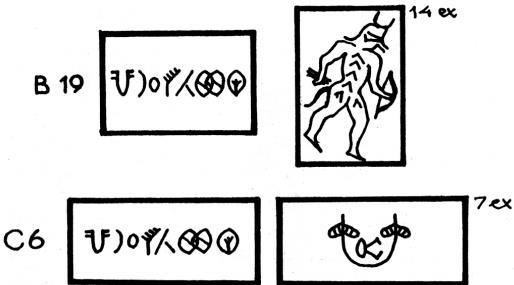



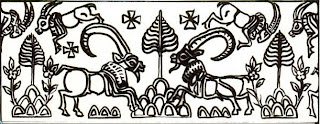

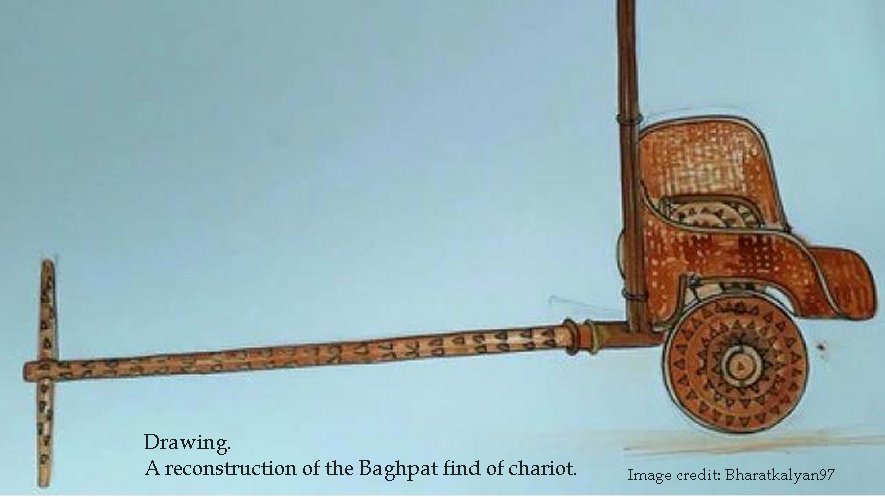























 Pawel Prokop
Pawel Prokop
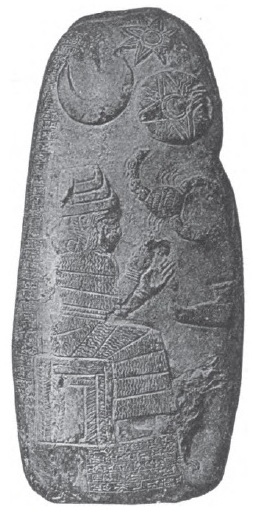

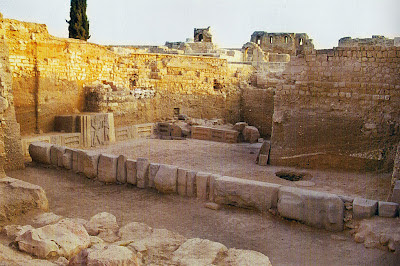

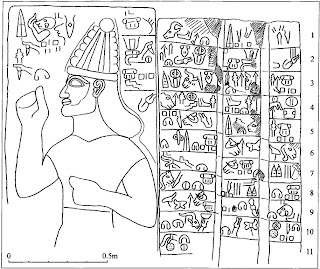

















 Literature:
Literature:


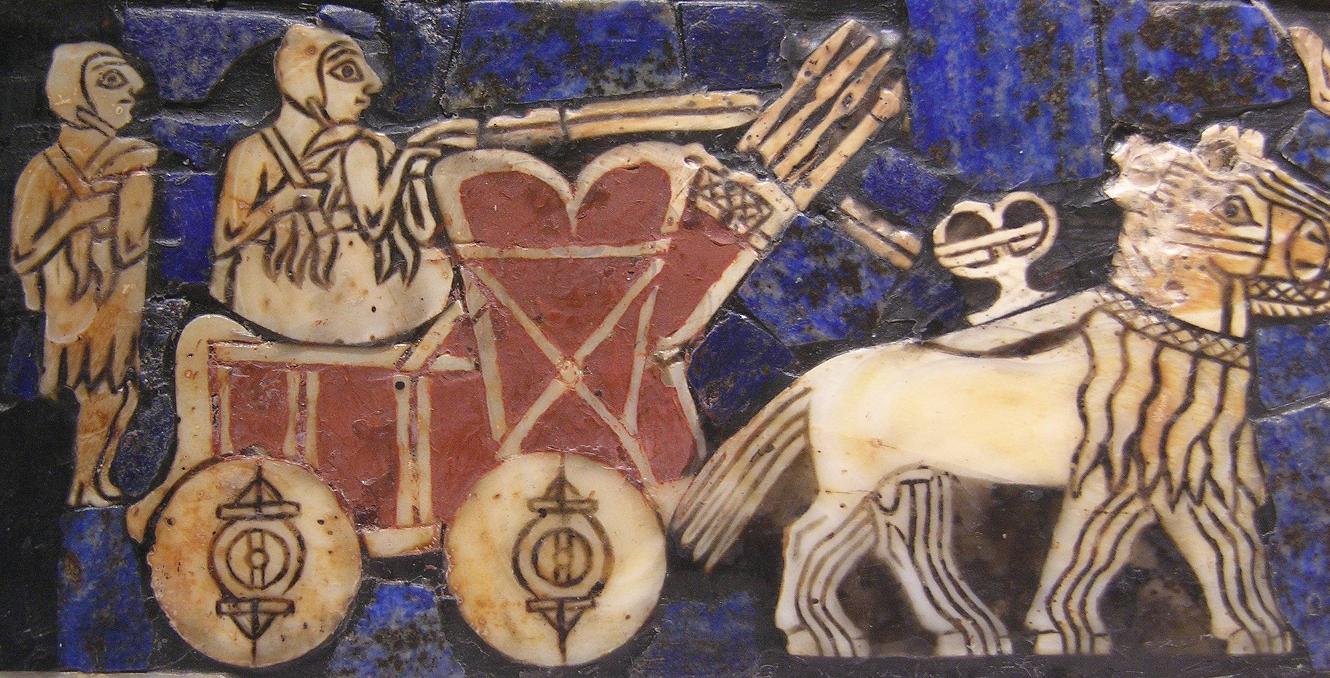






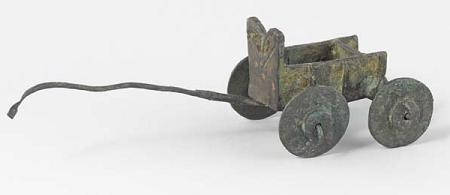











 Shamash.
Shamash. 










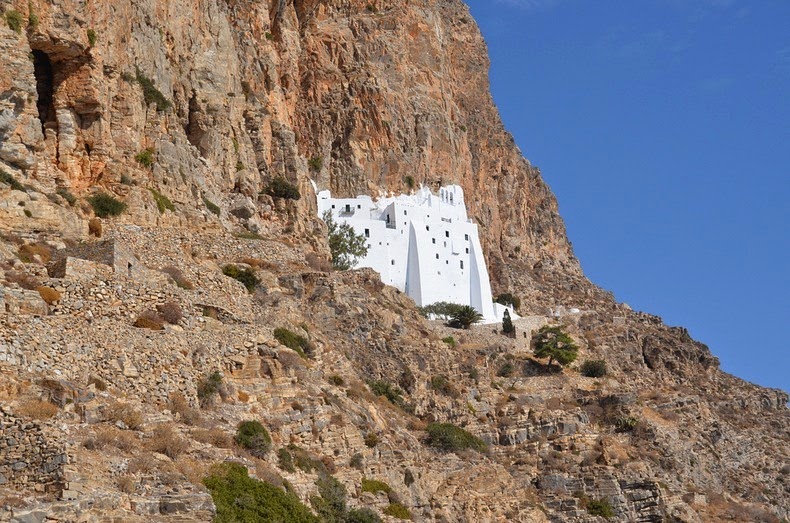
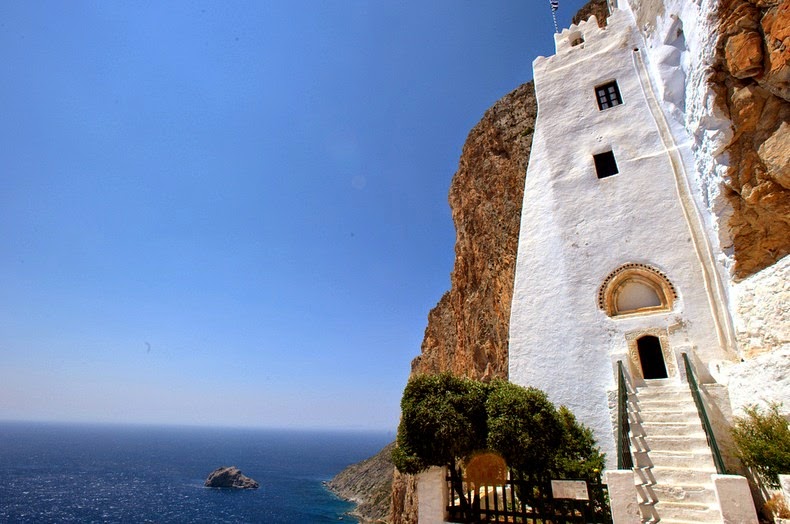
 The morning ablutions offered to the Sun Divinity are signified in front of two ziggurat images flanked by eight globules on either side.In my view, the bronze model is a narrative of metallurgical work in a smithy/forge by artisans who were governed by an ancient thought of the divine, represented in a temple with hieroglyphs/hypertexts expressed in Meluhha (Ancient Indian sprachbund, speech union)..
The morning ablutions offered to the Sun Divinity are signified in front of two ziggurat images flanked by eight globules on either side.In my view, the bronze model is a narrative of metallurgical work in a smithy/forge by artisans who were governed by an ancient thought of the divine, represented in a temple with hieroglyphs/hypertexts expressed in Meluhha (Ancient Indian sprachbund, speech union)..
 Ziggurat of Ur
Ziggurat of Ur










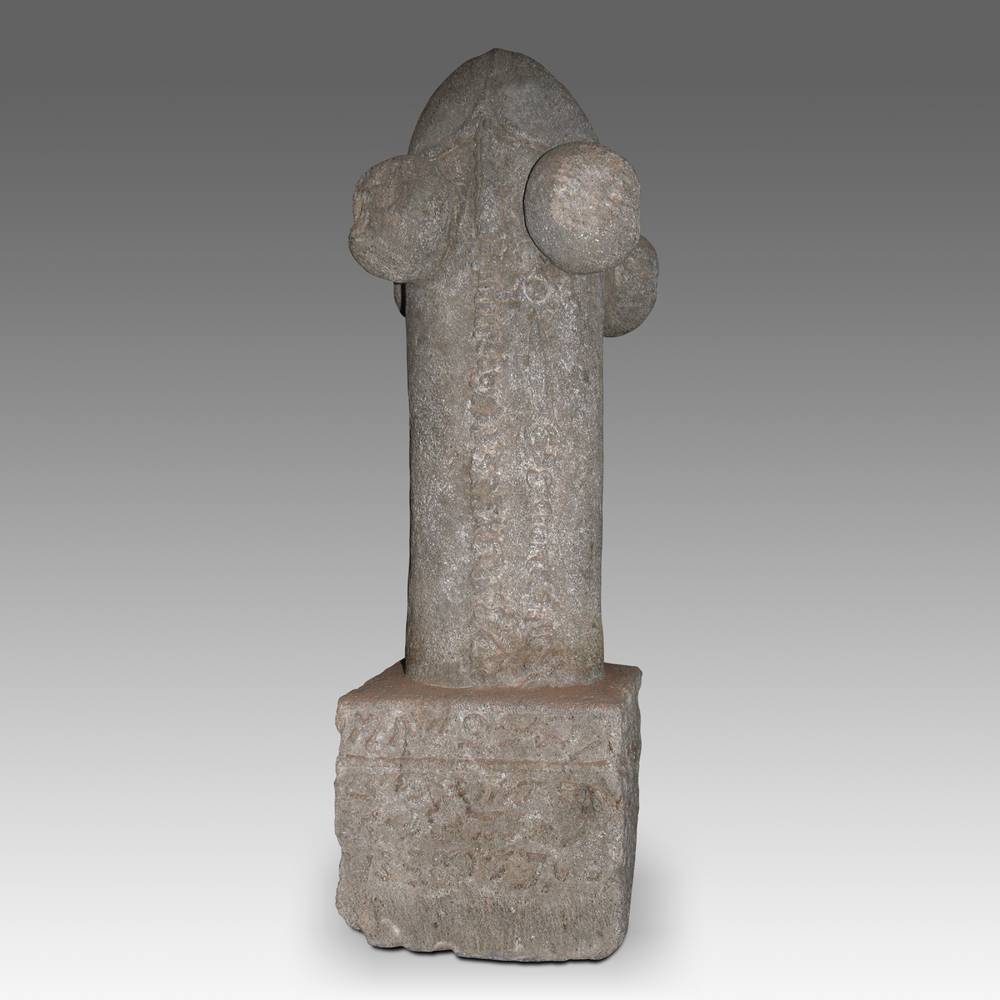




 "Thor Heyerdahl included in his Ra and Ra 2 Evidence the fact that pyramids had been discovered on the Canary Islands, a discovery he had a hand in. This is one of the half-dozen remaining pyramids at Guimar on the big island of Tenerife in the Canary Islands, off the NW coast of Africa. It may belong to the very old terraced-pyramid tradition also represented by Cuicuilco, below.These all seem to be broad low staged structures with Kivas (Circular pits and not "Houses") at the top."
"Thor Heyerdahl included in his Ra and Ra 2 Evidence the fact that pyramids had been discovered on the Canary Islands, a discovery he had a hand in. This is one of the half-dozen remaining pyramids at Guimar on the big island of Tenerife in the Canary Islands, off the NW coast of Africa. It may belong to the very old terraced-pyramid tradition also represented by Cuicuilco, below.These all seem to be broad low staged structures with Kivas (Circular pits and not "Houses") at the top." One of the Mayan "Serpent Balustrades": the same idea occurs at Angkor Wat using the local 7-headed Nagas.
One of the Mayan "Serpent Balustrades": the same idea occurs at Angkor Wat using the local 7-headed Nagas. Tiruvanamala, India
Tiruvanamala, India  In Peru this could include possibly the pyramid at Tiahuanaco (also resting on some indefinite dates). However, beginning with the Olmecs, the more usual temple mounds started to be built, and therefore in a culture already suspected to have Indian connections. By this time also, Mayan pyramids had started but in this case also, they were low mounds like mastabahs rather than really pyramids (since 2500-3000 BCE.
In Peru this could include possibly the pyramid at Tiahuanaco (also resting on some indefinite dates). However, beginning with the Olmecs, the more usual temple mounds started to be built, and therefore in a culture already suspected to have Indian connections. By this time also, Mayan pyramids had started but in this case also, they were low mounds like mastabahs rather than really pyramids (since 2500-3000 BCE.


 Ziggurat (Stupa?) Mohenjo-daro
Ziggurat (Stupa?) Mohenjo-daro 
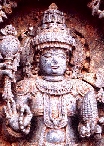



 "Much later watercraft depicted at Angkor seem to be of the same conformation with the extremely steep bow and stern. This would be a smaller craft for rowing and not sailing: I imagine Sundaland craft utilised both methods as necessary."
"Much later watercraft depicted at Angkor seem to be of the same conformation with the extremely steep bow and stern. This would be a smaller craft for rowing and not sailing: I imagine Sundaland craft utilised both methods as necessary."






 Sarasvati civilization, Mauryan images
Sarasvati civilization, Mauryan images 


 Tukulti Ninurta Altar with Indus Script hieroglyphs related to metalwork catalogue.
Tukulti Ninurta Altar with Indus Script hieroglyphs related to metalwork catalogue. 






































 Hooded snake on sacred thread.
Hooded snake on sacred thread.

 Southern pillar, East Torana. Sanchi. Cobra hoods.
Southern pillar, East Torana. Sanchi. Cobra hoods. Sanchi. Sculptural frieze. Cobra hoods.
Sanchi. Sculptural frieze. Cobra hoods.


















 A cow and a stable of reeds with sculpted columns in the background. Fragment of another vase of alabaster (era of Djemet-Nasr) from Uruk, Mesopotamia.
A cow and a stable of reeds with sculpted columns in the background. Fragment of another vase of alabaster (era of Djemet-Nasr) from Uruk, Mesopotamia.











 Rebus Meluhha readings: kōṭhā
Rebus Meluhha readings: kōṭhā

 Reed PLUS ring on Inanna standard on Warka vase.
Reed PLUS ring on Inanna standard on Warka vase.









 Morphology of Possible size aurochs, based on the characteristics and some skeletal representation of burn found in Maikop.
Morphology of Possible size aurochs, based on the characteristics and some skeletal representation of burn found in Maikop.
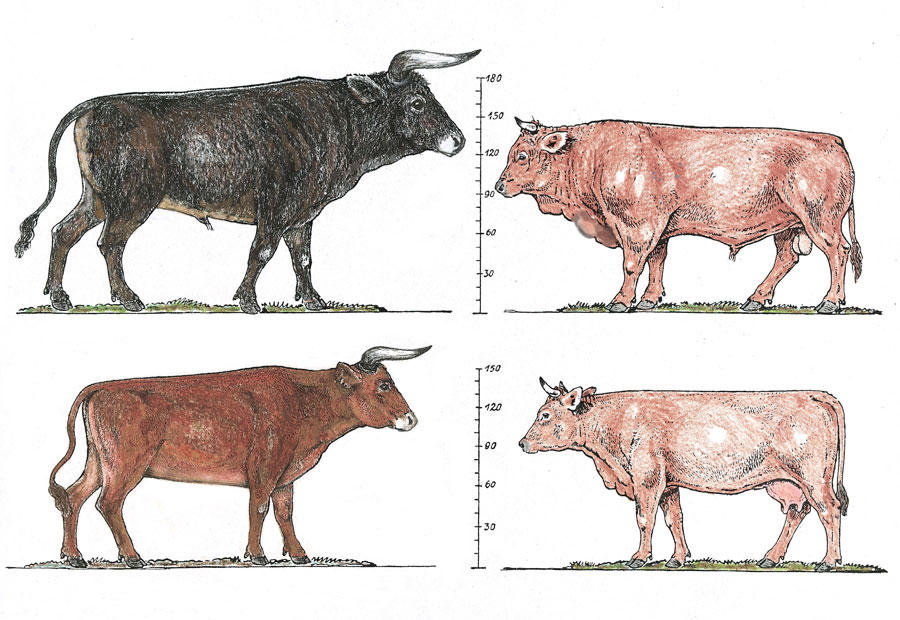


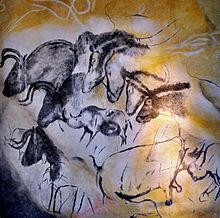

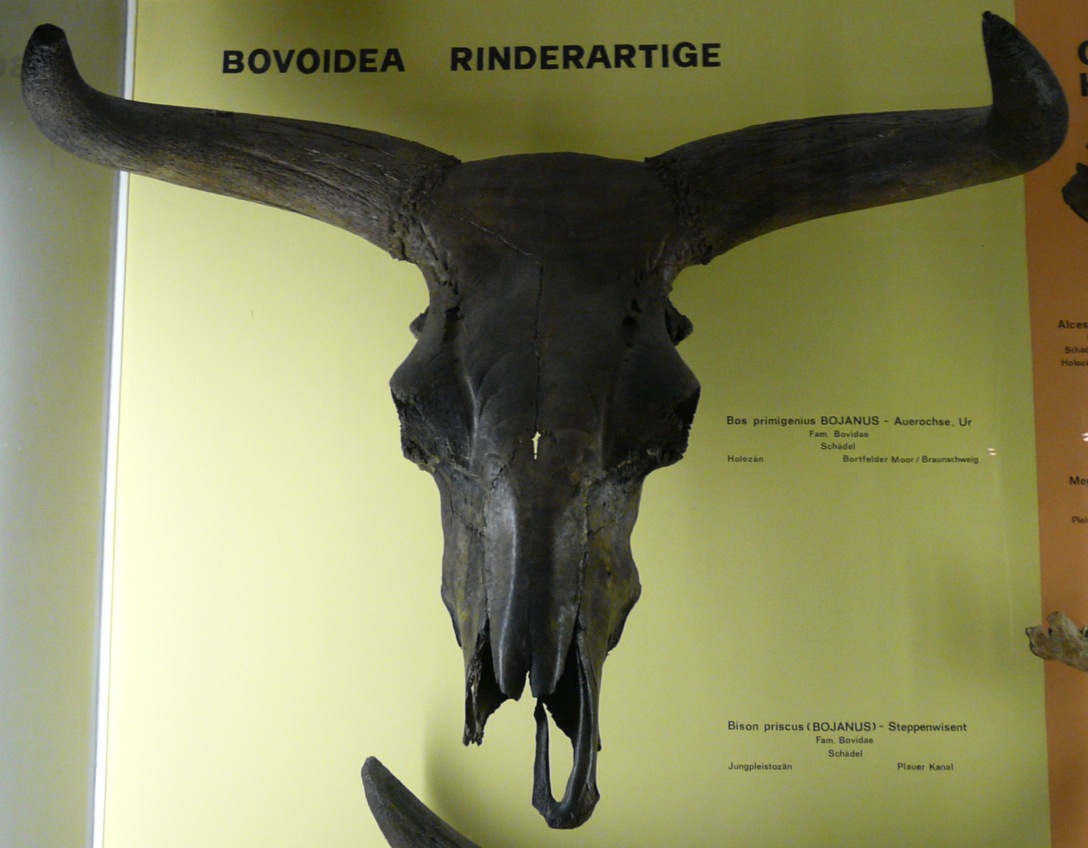


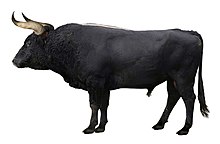
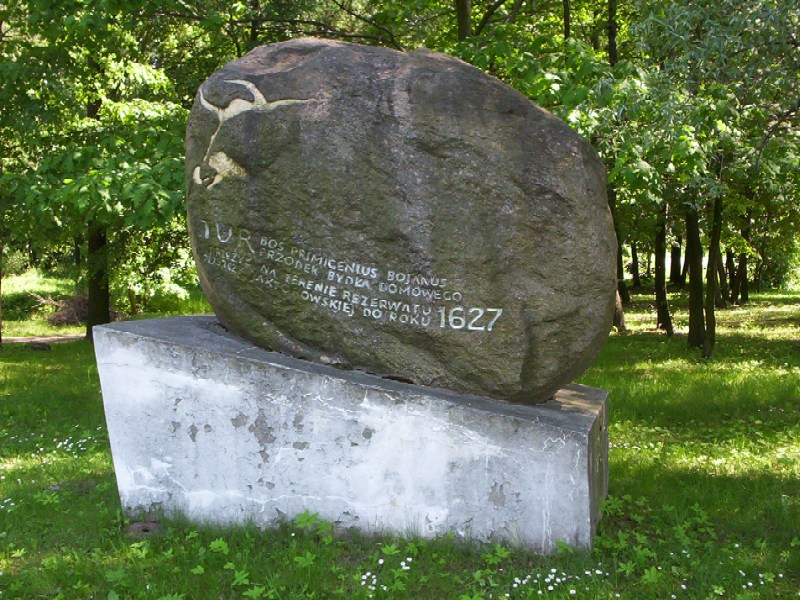

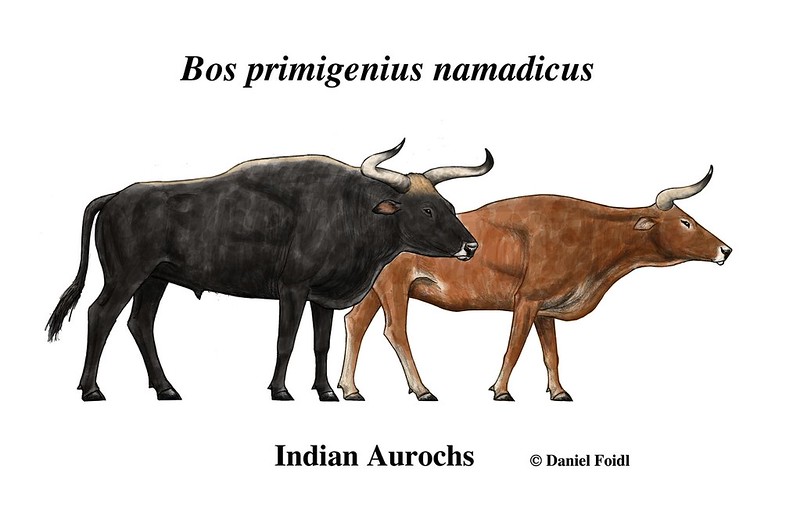

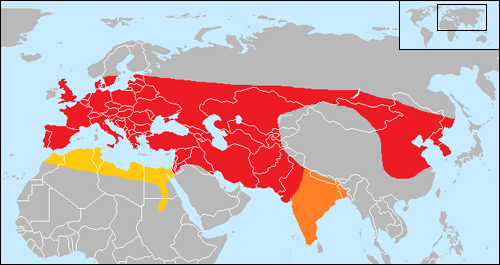
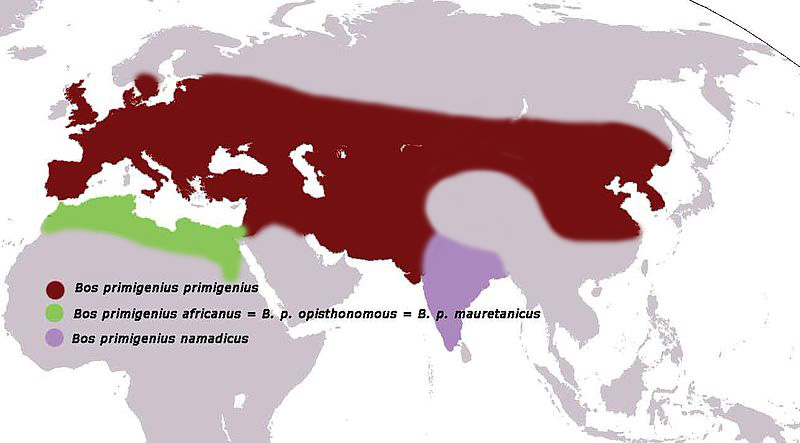
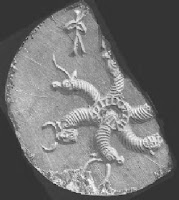














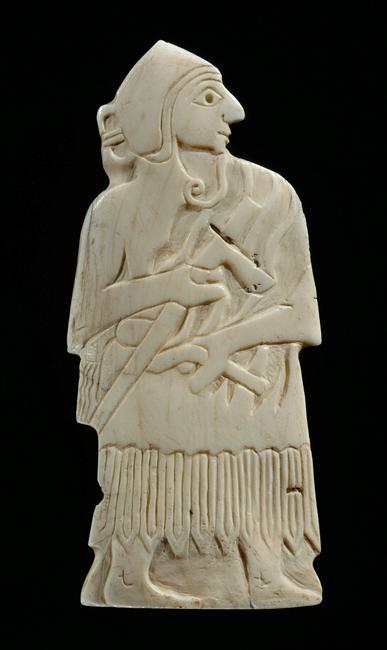











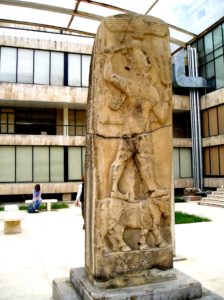

 Auroch on Ishtar Gate. Pergamon Museum, Museum Island, Berlin
Auroch on Ishtar Gate. Pergamon Museum, Museum Island, Berlin Civilization. Ancient Iraq.
Civilization. Ancient Iraq. 
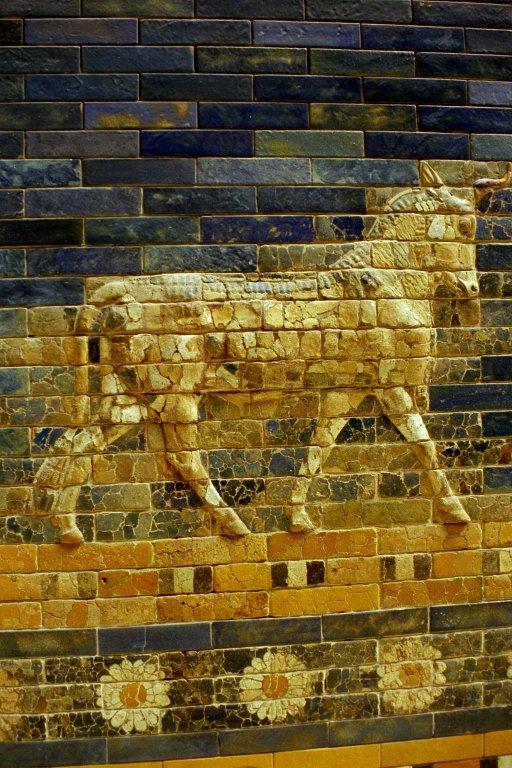

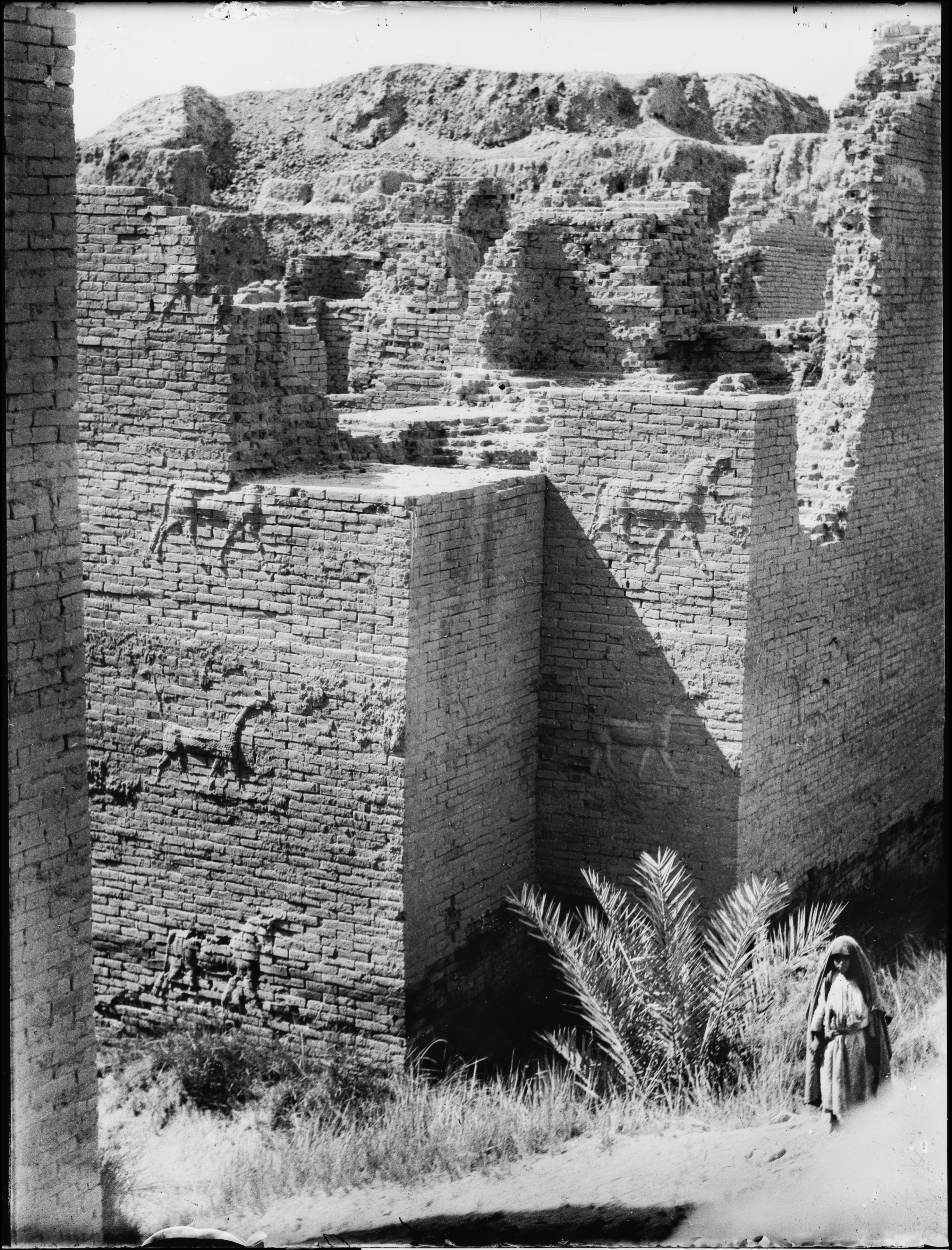


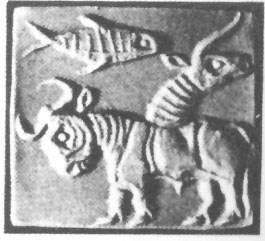













.png)
 Trough PLUS buffalo/bull
Trough PLUS buffalo/bull
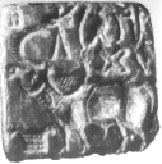





 Banawali b-17 Tiger PLUS standard device
Banawali b-17 Tiger PLUS standard device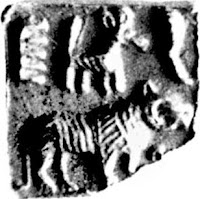 m290 tiger PLUS trough
m290 tiger PLUS trough


 h088 Rhinoceros PLUS trough
h088 Rhinoceros PLUS trough




























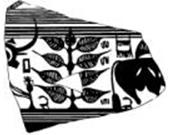
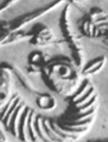






 m1356 Copper plate. The endless knot and svastika
m1356 Copper plate. The endless knot and svastika

